





wade into wonder












“Elite Performance, Lasting Comfort, Sustainable Quality”





































wade into wonder












“Elite Performance, Lasting Comfort, Sustainable Quality”































Catherine Donaldson has represented the Sotheby’s International Realty brand for over 16 years. Her commitment to the brand is FIERCE. Call her today to discover why.















ACCESSORIES • CLOTHING
HANDBAGS • JEWELRY
RESORT & TRAVEL • GIFTS






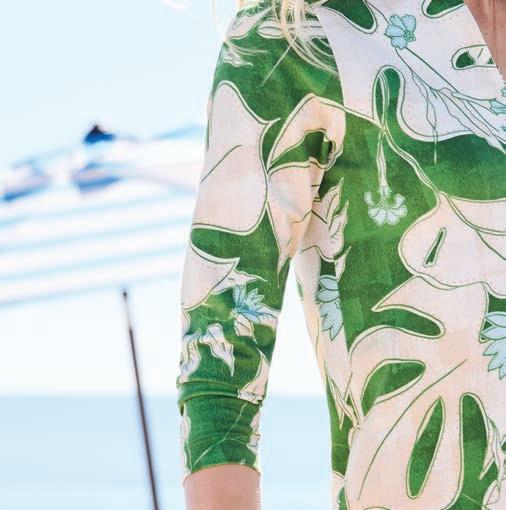








































We will donate a nest in your name for every reservation made in April.
You will receive an adoption certificate and be notified when your Sea Turtle makes a nest.





















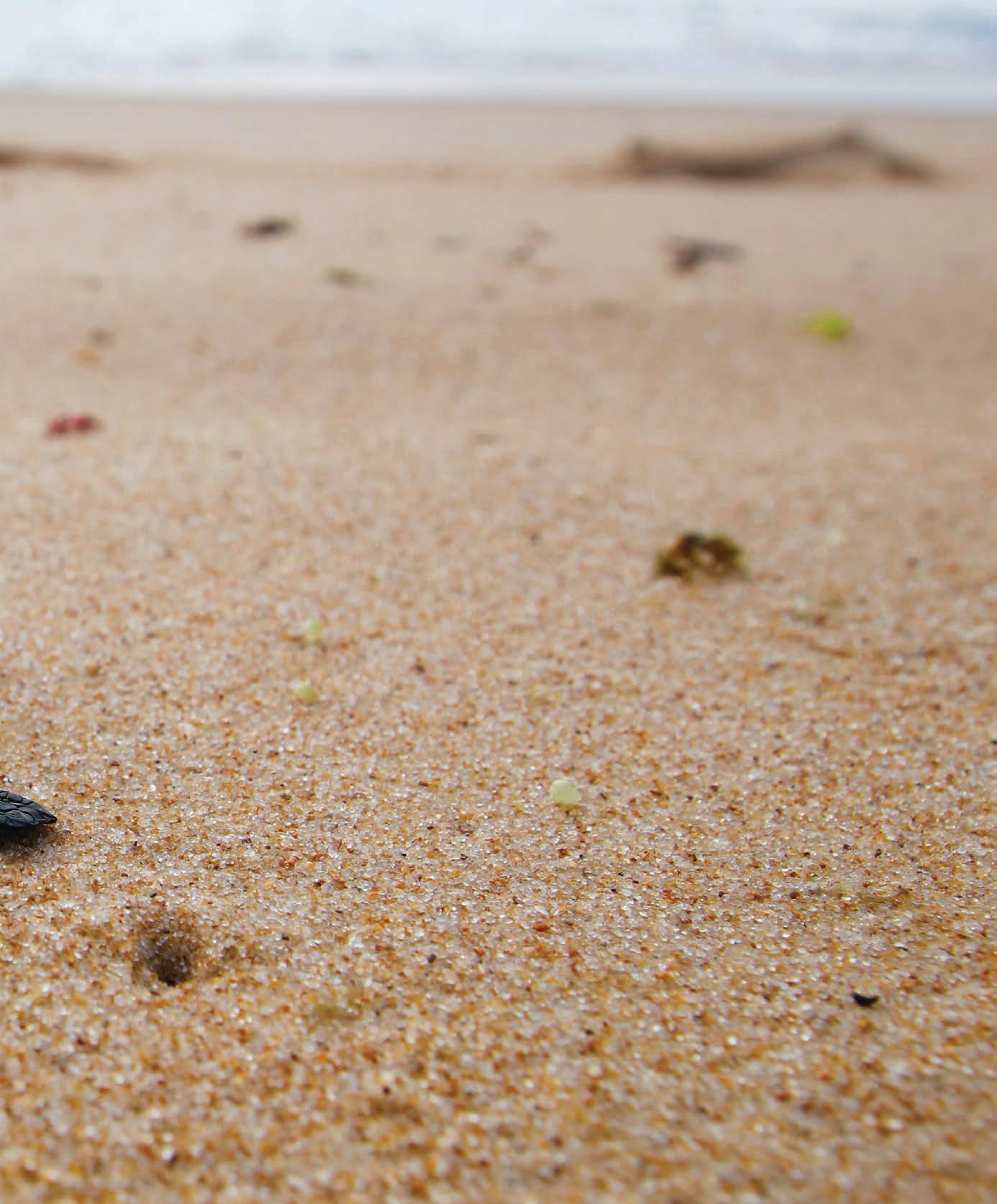
Lowcountry golf at its finest, where tall pines and moss -draped oaks fringe 18 pristine holes, perched on the marsh overlooking the Calibogue Sound.
Driving range, practice greens, and short game area. Indoor instruction bay and simulator.
The most gracious amenities for golfing members and their guests.













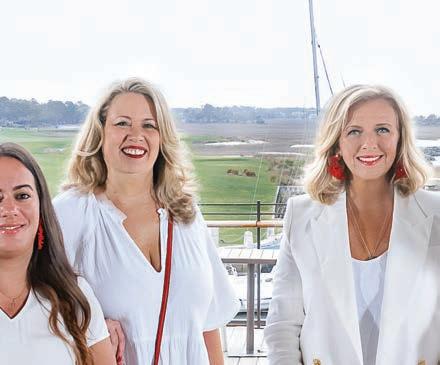


130+ OFFICES | 12+ COUNTRIES | 2,600+ AGENTS | 1 CONNECTED COMMUNITY










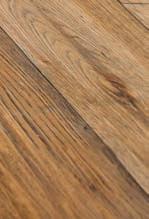
We believe service is simple. We take care of our agents; they take care of you. We give time back to our agents by handling the details so they can focus on what they do best: advising their clients’ and selling real estate. Everyone gets the red carpet treatment.





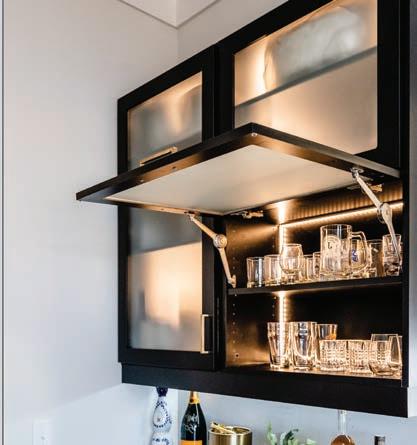




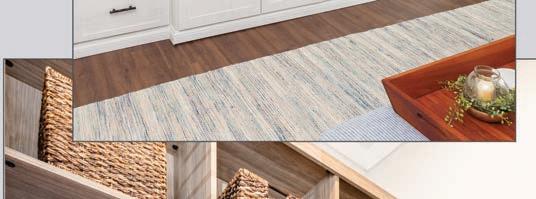






























1931 SOUTH BEACH CLUB VILLAS | SEA PINES
4 Br | 4.5 Ba | 3,996 Sq Ft | Offered For $3,400,000



Charter One Realty Connected with the three top luxury networks!






Nestledwithinabreathtaking3,000acrenaturepreserveintheheartof SouthCarolina’sstoriedLowcountry, thisexceptionalequestrianestatespans overnineacres,seamlesslyblending modernluxurywiththebeautyofits surroundings.Offeringmorethan8,000 squarefeetofelegantlyrenovated living space,themainhomeandguest cottageprovideawarmandinviting retreat—perfectforwelcomingfamily andfriendstoexperiencethe unparalleledlifestyleofSpringIsland.
ListingcourtesyofDebbieMcCarter 843-987-2627









What do you love most about the RBC Heritage ?

“Seeing local landmarks on TV and following the leaders on Sunday.”
- LANCE

PUBLISHER
Lori Goodridge-Cribb (Local since 1986) lori.goodridge@wearelocallife.com
EDITOR-IN-CHIEF
Lance Hanlin (Local since 2007) lance.hanlin@wearelocallife.com
- JEREMY
“Catching up with old friends and rehashing all of the crazy stories from the previous years.”
“The new and unusual uses of plaid.”
- CHARLES
“The atmosphere: golf, the outdoors, people, and good food and drinks.”
- ASHLAN
“Bragging to others about my ability to go to such events.”
- BAILEY
“Partying it up in the Gamecocks Alumni Skybox. Go Cocks!”
- SHEILA
“People-watching.”
- REBECCA
“My outfit.” - LAUREN
“Everyone rockin' Plaid Nation.”
- MARCI
“The palpable excitement felt by everyone.”
- LISA
“The social aspect and the exciting Sunday finishes.”
- LEAH
“Relaxing in a hospitality tent on the 18th tee on Sunday with a cold brew.”
- BRUCE












ART DIRECTOR / DESIGNER
Jeremy Swartz (Local since 2003) jeremy.swartz@wearelocallife.com
DESIGNER
Charles Grace (Local since 1997) charles.grace@wearelocallife.com
AUDIENCE & CONTENT DEVELOPMENT
Ashlan Saeger (Local since 2016) ashlan.saeger@wearelocallife.com
EDITORIAL ASSISTANT
Bailey Gilliam (Local since 2020) bailey.gilliam@wearelocallife.com
EDITORIAL ASSISTANT
Sheila Paz (Local since 2021) sheila.paz@wearelocallife.com
SALES REPRESENTATIVE
Rebecca Kerns (Local since 1999) rebecca.kerns@wearelocallife.com
SALES REPRESENTATIVE
Lauren Alston (Local since 2019) lauren.alston@wearelocallife.com
SALES REPRESENTATIVE
“People-watching and, occasionally, some golf.” - LORI 800 Main Street Hilton Head Island, SC, 29926 843-802-2258 + LocalLifeSC.com
Marci Atkins (Local since 2018) marci.atkins@wearelocallife.com
PHOTO EDITOR
Lisa Staff (Local since 2003) lisa@lisastaffphoto.com
SUBSCRIPTIONS & FINANCE
Leah Ortega (Local in spirit) leah.ortega@wearelocallife.com
DISTRIBUTION & LIST STRATEGIST
Bruce Wolff (Local since 2002) info@wearelocallife.com














The salt marsh is the heartbeat of the Lowcountry — everchanging, teeming with life and essential to the region’s identity. In this issue we wade into its beauty, history and ecological significance. From expert conservation insights to stunning photography, we explore the waterways that shape coastal living. Whether you are gliding through Spartina grass, encountering marsh wildlife or savoring its bounty, this edition is a tribute to the wonder of our marshlands.
A SEA OF GREEN Beaufort County is home to an impressive stretch of salt marshes, spanning approximately 200,000 acres — nearly half of all the salt marshes in South Carolina. In fact, the state boasts the most salt marsh acreage of any along the East Coast. These vibrant coastal ecosystems are more than just scenic landscapes; they serve as vital nurseries for marine life, support diverse wildlife and play a key role in maintaining the health of our coastal environment. Discover more about these essential marshlands on page 86.
86
Wetland wonders
Explore four waterways that link the marsh to the Atlantic
Into the marsh
A journey through the marsh with a local marine biologist
96
The salt marsh offers food and protection for juvenile marine life
112 32 80
Green & serene
Transform a guest bedroom into a marshside retreat
92
Beach wrack 101
Brown sticks on the beach? It’s marsh grass, and it's essential
102
Inside the rookery
Learn the nesting secrets of the Lowcountry’s wading birds
Hidden in the grass
Meet the diverse wildlife of Lowcountry salt marshes
140
Marshland muse
Art inspired by the Lowcountry’s salt marsh








Whether you paddle through its winding creeks, capture its beauty in photos or simply breathe in the salty air, the salt marsh is a gift — one that deserves our wonder, respect and care. Let the tides guide you, the golden grasses inspire you and the coastal breeze remind you — this living landscape is one of the Lowcountry’s greatest treasures.



retreat in Palmetto Bluff.










































Exploring the beauty, bounty and rhythm of the Lowcountry’s tidal wonderland.

MADE FOR THE MARSH
Publisher Lori Goodridge-Cribb and her spirited Boykin Spaniel, Camo, enjoy the natural beauty of Hilton Head Island’s salt marshes. Camo thrives in his coastal playground, splashing through tidal creeks, digging in the pluff mud and chasing ripples as fish dart away.

SCAN TO SUBSCRIBE
Don’t miss an issue of LOCAL Life. Scan this QR code to subscribe to the upscale lifestyle magazine of Hilton
tThere’s a quiet enchantment in the salt marsh — the way golden grasses glow in the evening light, a heron’s effortless glide over winding creeks and the steady pulse of the tides. If you’ve ever paused to take it all in, you already know the Lowcountry’s marshlands are something special. While the ocean may steal the spotlight, it’s Beaufort County’s more than 200,000 acres of tidal marshland that make this coastal region truly extraordinary.
Unlike mountain-fed rivers, our waterways are shaped by the Atlantic itself — rising and falling with one of the most dramatic tidal ranges on the southeastern coast. With every 8 1/2-foot shift, the salt marsh breathes, filtering pollutants, pulling in nutrients and creating one of the most productive ecosystems on Earth. This ever-moving cycle sustains a rich world of life, from darting fiddler crabs to dolphins threading through the creeks. And then there’s the scent of pluff mud — love it or wrinkle your nose at it, you can’t deny it’s the smell of home.
In this Marshlands issue, we celebrate the beauty, resilience and undeniable pull of these ever-changing landscapes.
Step into the rhythm of the tides, explore how our waterways have shaped our coast, and discover how artists and storytellers capture the marsh’s essence. Find inspiration to bring marshside serenity into your home with earthy greens and coastal blues, discover breezy fashion perfect for boardwalk strolls, and learn how to safely explore the wetlands with your pup.
A local marine biologist takes us deep into the life of the marsh, while we uncover the secrets of wading bird courtship, the journey of cordgrass from creek to shore and the marsh’s profound role in Lowcountry cuisine. From fresh oysters and shrimp to redfish and blue crabs, we’re diving into the flavors of the tides with expert insights and mouthwatering recipes.
Whether you paddle through its winding creeks, capture its beauty in paint or photos or simply breathe in the salty air, the salt marsh is a gift — one that deserves our wonder, respect and care. Let the tides guide you, the golden grasses inspire you and the coastal breeze remind you — this living landscape is one of the Lowcountry’s greatest treasures.

LORI GOODRIDGE-CRIBB PUBLISHER lori.goodridge@wearelocallife.com

Once overlooked in favor of oceanfront property, the marsh has since become one of the Lowcountry’s most cherished landscapes. Visionaries like Charles Fraser helped shift the perception, revealing the salt marsh not as an afterthought but as a living masterpiece — teeming with life, filtering our waters and offering an everchanging panorama of natural beauty.
The ocean is breathtaking, but the marsh is alive. Herons stalk their breakfast in the shallows, fiddler crabs scuttle across the mud, and the grasses shift from emerald green to golden amber with the changing seasons. When my grandkids visit, we watch fish leap from the creeks and listen for the raspy cackle of marsh hens — a soundtrack of the Lowcountry that never fades.
No matter how busy the day, coming home to my own marsh view always fills me with a deep, quiet joy. Because whether it’s the golden glow of sunset, the rhythmic pull of the tide or the unmistakable scent of pluff mud in the air, the marsh never fails to surprise — and yet, it always feels like home.


BUILDING A LEGACY Have you spotted the LOCAL Life Jeep around town? This month we pulled up alongside Angelina Carper, President & CEO of RCH Construction on Hilton Head Island. A lifelong builder at heart, Angelina has been immersed in the industry since she was 14, growing up on job sites and preparing for the leadership role she holds today at her family’s company.



Franck Writer and photographer
OTHER CREDS: I am a senior graphic communications student at Clemson University. I have been studying photography for about five years, although I started teaching myself at age 12. LOCAL SINCE: 2024 FOR THIS ISSUE: Featured photos HOMETOWN: Basking Ridge, New Jersey WHAT DO YOU MISS MOST ABOUT IT? Mostly my childhood friends. CURRENT HOME: Hilton Head Island FAVORITE LOCAL SPOTS: Enjoying outdoor seating at all of our local cafes and walking along the beaches. HOBBIES: Thrifting/upcycling, pickleball and music festivals. WHAT ARE YOU WATCHING? The White Lotus WHAT ARE YOU LISTENING TO? Yumi Zouma, Gorillaz and Billie Eilish recently. WHAT ARE YOU READING? Reddit feeds to research my next travel destination. WHAT ARE YOU DRINKING? My favorite vanilla protein, banana, kale and almond milk smoothie. FAVORITE MARSH VIEW: Pinckney Island at sunset. LIFE GOAL: To see the northern lights someday. WHAT IS SOMETHING ABOUT YOU MOST PEOPLE DON’T KNOW? Growing up, I was always acting and singing from around my hometown to NYC.








LOCAL SINCE: 2015 FOR THIS ISSUE:






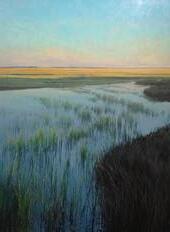
LOCAL SINCE: 2016 FOR THIS ISSUE: Local poem, “The Fisherman in his Dory” HOMETOWN: I spent most of my life in New Castle, Delaware. CURRENT HOME: Carolina Isles, Hilton Head Island FAVORITE LOCAL SPOTS: Islanders Beach, Jarvis Creek Park and Coligny Beach. HOBBIES: I play classical guitar every day. I also enjoy listening to classical music, taking long walks and swimming in the ocean. WHAT ARE YOU WATCHING? 76ers basketball. I seldom miss a game. WHAT ARE YOU LISTENING TO? Classical guitar music and string quartets. Every day I also listen to poets, actors and poetry lovers reading poems on YouTube. WHAT ARE YOU READING? The novel, Spring Snow, by Yukio Mishima and the poems of Chase Twichell. I like reading all types of fiction, especially horror fiction, poetry from all time periods and classics. WHAT INSPIRES YOUR POETRY? Most of my poems are inspired by artwork. ADVICE FOR ASPIRING POETS: Read all the poetry that you can from magazines, anthologies and collections. To be a good poet, you need to be an avid poetry reader. Also, read books on the craft.
Parting shot HOMETOWN: Fairfax, Virginia CURRENT HOME: Berkeley Hall. HOBBIES: I enjoy landscape and cityscape photography. The Lowcountry offers plenty of both, with close-by urban areas surrounded by beautiful nature with its marshlands and waterways, creating scenic photo opportunities, particularly in the springtime. I also have been fortunate to capture, in the process, a collection of shrimp boats of the Lowcountry. WHAT INSPIRES YOUR PHOTOGRAPHY? I follow several professional photographers who are both educational and inspiring. One of my favorites is a French photographer, Serge Ramelli, who provided insights and locations for photo shoots in my recent travels to Paris, Normandy and across France. WHAT ARE YOU READIND AND LISTENING TO? I am a political junkie, so I read and listen to podcasts and pundits. I also had a tremendous experience in a recent trip to Normandy and like to read and learn more about D-Day and WWII. WHAT ARE YOU EATING? Italian food, of course. My favorites are Bricco in Bluffton and Ombra on the island. WHAT ARE YOU DRINKING? I enjoy single malt scotches, my favorite being Aberlour ’16, often with a good cigar. I participate in the Single Malt Scotch Society here at Berkeley Hall, which is a good educational opportunity.
Others who waded into the marsh with us ...
PHOTOGRAPHERS Kit Carper + Arno Dimmling + Chris Klonowski + John McManus + Gwen Callas-Miller
Jeanne Paddison + Ruthe Ritterbeck + Nate Rosso + Richard Sagredo + Lisa Staff + Mary Alice Tartler
WRITERS Daisy Dow + Becca Edwards + Denise Friday + Barry Kaufman + Amber Kuehn
Carolyn Males + Margaret Pearman + B.C. Rausch + Richard Thomas + Alea Wilkins
CONTRIBUTORS Amanda Castillo + Marcia Cornell + Jean Meaney Wheatly

















Instagram exclusive: Watch Brandon Schmidt craft the refreshing house margarita at The SandBar — fresh, zesty and perfect for island vibes. Follow along @locallifesc
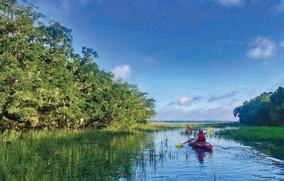
1
Five under-the-radar outdoor adventures in the Lowcountry
2 Looking back at Michael Jordan's time on Hilton Head Island
3
How to choose the right marinade for maximum flavor










Want more LOCAL Life? Have our three newsletters delivered to your inbox each month. The Dish Best local bites for the weekend
The Buzz LOCAL Life’s latest must-reads
The Nest Home trends and tips
The cover showcases a great blue heron surveying the salt marsh, a familiar and majestic sight in the Lowcountry. As the tallest heron species in North America, these striking birds reach up to 4 1/2 feet in height with an impressive wingspan exceeding 6 1/2 feet. Despite their size, they weigh just 5 to 6 pounds, thanks to their lightweight, hollow bones. This captivating image was taken by photographer Richard Sagredo. Explore more of his work at sagredophotography.com or follow him on social media (@ sagredophotography). Learn more about the Lowcountry’s wading birds on page 102.















Office Location:
The Village at Wexford




STEP INTO THE RHYTHM OF THE LOWCOUNTRY’S SALT MARSHES AND EXPERIENCE THEIR MAGIC FIRSTHAND.
wWith over 200,000 acres of salt marsh, Beaufort County is where the tides don’t just shape the land — they give it life. These vast, ever-changing wetlands are more than a scenic backdrop; they are the pulse of the Lowcountry. Fish and crabs hatch in winding creeks, shorebirds wade through golden shallows, and the marsh itself stands as a natural fortress against coastal storms. Four great waterways weave through this tidal landscape, linking the salt marsh to the Atlantic and sustaining a world as rich in beauty as it is in life.
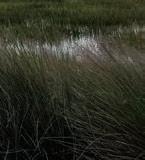
Port Royal Sound The Port Royal Sound isn’t just water — it’s a living, breathing force shaped by the Atlantic. Unlike traditional rivers, its tidal inlets, including the Broad, Colleton and May rivers, flow from the ocean, creating a deep, salt-rich haven where sea turtles glide, dolphins play, and sharks, rays and fish roam freely. Spanning 1,600 square miles with 200,000 acres of salt marsh, this ecosystem thrives on the tides. Every 8 1/2-foot swing moves 950 million gallons of water, flushing out pollutants and fueling an intricate web of life.
Experience it: Visit the Port Royal Sound Foundation Maritime Center in Okatie to explore interactive exhibits, stroll the scenic boardwalks, and take in panoramic marsh views from the dock.



Calibogue Sound Between Hilton Head and Daufuskie islands, Calibogue Sound is a dynamic meeting point of saltwater and freshwater, creating a thriving estuarine ecosystem. Dolphins break the surface in graceful arcs, fiddler crabs scuttle along the bank, and the marshes provide a nursery for young fish and crabs. Beyond its rich biodiversity, the Sound is a haven for outdoor enthusiasts — sailboats skim the breeze, kayakers navigate winding creeks, and paddleboarders drift with the tides. Anglers are drawn to its plentiful waters, casting for redfish, trout and flounder in one of the Lowcountry’s top fishing spots.
Experience it: For a bird’s-eye view, climb the Harbour Town Lighthouse, where panoramic marsh vistas stretch as far as the eye can see.


St. Helena Sound Where the Ashepoo, Combahee and Edisto rivers meet the Atlantic, St. Helena Sound anchors the ACE Basin, one of the largest and most pristine estuaries in the U.S. Its vast salt marshes hum with life, shifting from lush green in summer to golden hues in fall, a living canvas shaped by the tides. Kayakers and paddleboarders explore winding creeks, anglers reel in redfish and trout, and birdwatchers scan the skies for ospreys and bald eagles. Shrimping and crabbing remain time-honored Lowcountry traditions, connecting generations to these rich, ever-giving waters.
Where to experience it: For a front-row seat to this untouched wilderness, visit Hunting Island State Park, where a scenic marsh boardwalk extends deep into the wetlands.
Savannah River Stretching 301 miles from the Appalachian Mountains to the Atlantic, the Savannah River forms a natural border between Georgia and South Carolina before unfurling into a thriving estuary of salt marshes, tidal creeks and oyster beds. These wetlands pulse with life, serving as nurseries for shrimp, blue crabs and fish, while dolphins, wading birds and shorebirds move with the rhythm of the tides. For those who explore its winding creeks by kayak or boat, the rewards are endless.
Where to experience it: On your next trip to Savannah, take a scenic detour through the Savannah National Wildlife Refuge in Hardeeville. The five-mile Laurel Hill Wildlife Drive winds through salt marshes, tidal creeks and freshwater wetlands.



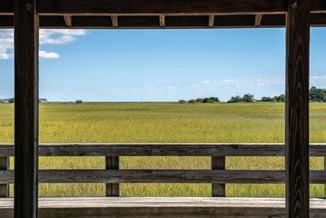
Hilton Head Island
• Marshland Road Public Boat Ramp
• Coastal Discovery Museum
• Mitchelville Freedom Park
• Shelter Cove Community Park
• Rowing and Sailing Center
• Pinckney Island National Wildlife Refuge Bluffton
• New River Linear Trail
• Palmetto Bluff Conservancy
• Wright Family Park
• Bluffton Oyster Factory Park
Beaufort area
• Broad River Fishing Pier
• Spanish Moss Trail
• Whitehall Park
• The Sands
• Crystal Lake Park
• Waterfront Park






Boat Dog Marine Dog Bed
Boat days are better with furry friends. As you rest under an umbrella, protect your pets with a canopy of their own. The Marine Dog Bed provides smart shading by blocking the sun’s harmful UV rays (yes, dogs can get sunburned!) and reducing heat during especially sweltering summers. In addition to the tent, the bed is water- and mildewresistant, so even wet dogs can dry off comfortably. Whether lounging at the pool or sailing at sea, everyone deserves a little shaded siesta. boatdogcompany.com. $250.

For golfers in need of back support, a teeing aid offers a stress-free solution. Players can tee up and pick up without bending over, preventing unnecessary strain and keeping players on the green longer. It’s compatible with many tee-peg types, and its lightweight design is sturdy enough to easily insert tees into the ground. With a little assistance, lifelong golfing is made possible. zerobendgolf.com. $76.

Bionic ReliefGrip 2.0 Golf Gloves
Controlled comfort in the palm of your hand. Bionic’s patented ReliefGrip golf gloves are outfitted to improve performance with every stitch. Over 30 adjustments are made with each size increase to ensure the perfect fit, and webbing and expansion zones provide flexibility while remaining secure with every swing. Strategically placed relief pads on the palms and fingers improve control with a lighter grip, helping even arthritic hands play longer. bionicgloves.com. $33.
Gadgets for golfing, kayaking and every marshland adventure.

Nikon Stabilized 10x25 S
Observe local wildlife up close with the ultimate pair of binoculars. Nikon’s special line incorporates stabilization technology to correct handheld shakiness for a steady view. With a 12-hour battery life, the binoculars are perfect for all-day outings. This specific pair is lightweight and compact, and it focuses on a wider, brighter view of objects up to 1,000 yards away. Get a front row seat to distant ships, birds or dolphins, and discover the Lowcountry from a new perspective. nikonusa.com. $640.
Railblaza Camera Boom 600 R-Lock

Garmin Foretrex 801
Navigate with confidence using a wrist-mounted GPS built for the wild. The Garmin Foretrex 801 offers advanced navigation tools, multi-band GNSS support and a long battery life to keep you on course, whether you're hiking, kayaking or exploring off the grid. Designed with a bright, easy-to-read display, it provides waypoints, routes and a breadcrumb trail feature to guide you back safely. Rugged, lightweight and military-grade tough, it’s the perfect companion for those who prefer to roam untethered. garmin.com. $249.


Never miss a moment with a sturdy, portable camera mount. Railblaza’s stand fits GoPros or other action cameras, and since it requires no additional hardware to install, it can attach to boats, kayaks and more. Set-up is simple to switch between mounted and handheld shooting quickly. Plus, it extends to over 30 inches in length and rotates on four adjustable joints to capture all the right angles. railblaza.com. $67.

Dimple & Divot Hickory Golf Brush
Spiff up your golf bag with a brush that keeps your gear looking sharp. Built out of pure American hickory with a matte finish, the brush has a timeless look, and its nylon and metal bristles provide heavy-duty cleaning power. Clip onto your bag for easy access, and when in need of a quick clean, its coil band extends to over a foot. For a personal touch, select from a variety of colors to embellish your bag with a tool so cool it’s like an accessory. dimpledivot.com. $60.

How’d you get so fly?
FlyBandz
Wear your hook on your sleeve with FlyBandz, a wristband intended to store flies and other angling barbs. Inspired by a fly fishing trip when his tackle box floated downstream, the owner of FlyBandz created the accessory to consolidate gear when out on the water. Anglers can quickly switch out their favorite flies and fish without worry, focusing instead on their next great catch. flybandz.com. $30.




Simms Pro Wading Staff


Hike the trails with a staff built to power through any terrain. The hybrid carbon-fiber and aluminum post is set between a smooth cork handle that won’t cause calluses on long walks and an integrated carbide tip that can grip even slippery river floors. For extra ease, the staff can unfold with one hand, and it can conveniently be stored again in its compression molded sheath, supporting nature lovers on every outdoor stroll. simmsfishing.com. $230.


If you’re looking to buy or sell your Lowcountry dream home, Tanner Sutphin is here to make that dream a reality. As a trusted expert in May River real estate, Tanner has achieved over $20M in sales on the May River — including a record-breaking $6.2M sale at 135 Gascoigne Bluff and the highest price per square foot ever recorded at 51 Colcock (according to Hilton Head MLS). Tanner doesn’t just know the May River lifestyle — he lives it. Now he’s ready to help you make it your home too.












Tuesday thru Friday 10 until 5 Saturday 10 until 4

From thrilling mysteries to environmental battles, these five books bring the marsh to life.
Denise Friday, a school social worker at Hilton Head Island Elementary and a mother of twins, finds both escape and inspiration in the pages of a great book. An avid reader with a deep appreciation for compelling storytelling, she has selected five reads this month, all tied together by a common thread — the marsh. Whether as a haunting backdrop, a place of refuge or a battleground for survival, the marshland plays a vital role in these stories, shaping the lives of the characters who call it home.


THE MARSH QUEEN BY VIRGINIA HARTMAN
Loni Mae Murrow is a bird artist at the Smithsonian in Washington, D.C., until she must return home to the wetlands of northern Florida to care for her aging mother. A cryptic letter among her mother’s belongings leads her on a quest to uncover the truth about her father’s death — once believed to be a tragic drowning in a boating accident in the marsh. As she delves deeper, she finds herself on a dangerous path. Will she avenge her family or put an end to the violence for good?
SAVING THE GEORGIA COAST BY PAUL BOLSTER
In 1970 the Georgia General Assembly passed the Coastal Marshlands Protection Act, shaping the future of the state’s coastline. This book highlights the individuals who fought for its passage — wealthy island owners, hunters, fishermen, political leaders, garden-club members, environmentalists and journalists. Bolster provides a compelling account of the political landscape at the time and the dedicated advocates who helped Georgia implement the most comprehensive marshland protection policy along the Atlantic seaboard.

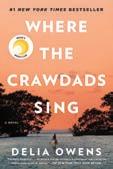


A coming-of-age tale that follows young Kya, who watches as, one by one, her mother, siblings and, finally, her alcoholic father abandon her, leaving her alone in a shack on the marsh. With no formal schooling and only the kindness of the local marine gas station owner and his wife, Kya learns to survive and educates herself about the natural world through her drawings. When a local acquaintance of hers is found dead, Kya becomes the prime suspect—her isolated existence making her an easy target.
THE MARSH KING'S DAUGHTER BY KAREN DIONNE
Years ago Helena was born to a teenage girl held captive by Helena’s father in the marshlands of Michigan. Now an adult, married with two children and a comfortable life, she believes she has escaped her dark past—until she learns that her father has escaped from prison and is hiding in the marsh. She may be the only person capable of tracking him down before it’s too late.


THE BODY IN THE MARSH BY NICK LOUTH


DCI Craig Gillard takes on a troubling new case: Liz Knight, the wife of criminologist Martin Knight, has disappeared. Martin seems unconcerned, claiming to know where his wife is—until he vanishes as well. To complicate matters, Liz was Gillard’s first love 30 years ago. As the investigation unfolds, a manhunt takes the police from the Kent coast to France and Spain. Just when the case seems to point in one direction, the trail goes cold. Fans of detective thrillers will be hooked.



















































2024 Forbes Best-ln-State Wealth Management Teams: Awarded January 2024; Data compiled by SHOOK Research LLC based on the time period from 3/31/22–3/31/23 (Source: Forbes.com) The Forbes Best-in-State Wealth Management Teams rating algorithm is based on the previous year’s industry experience, interviews, compliance records, assets under management, revenue and other criteria by SHOOK Research, LLC, which does not receive compensation from the advisors or their firms in exchange for placement on a rating. Investment performance is not a criterion. Selfcompleted survey was used for rating. This rating is not related to the quality of the investment advice and based solely on the disclosed criteria. Wells Fargo Advisors is a trade name used by Wells Fargo Clearing Services, LLC, Member SIPC, a registered broker-dealer and nonbank a liate of Wells Fargo & Company. PM-07192025-6270495.1.1
ACROSS
2. A small tree-covered island in the marsh.
4. A bright yellow flower that symbolizes Easter renewal.
5. Insect known for its deafening springtime song.
6. A chunk of turf displaced by a powerful golf swing.
8. A classic sailboat style often spotted in local waters.
11. A snake-necked bird that dries its wings in the sun.
14. A tiny marsh-dwelling snail often seen clinging to Spartina.
16. Man-made structures that protect the coastline from erosion.
17. The group of creatures that includes oysters and clams.
18. A fast-flying falcon that often hunts in the marsh.
DOWN
1. A group of boats, often seen in spring regattas.
3. An unofficial do-over shot in casual golf play.
7. A mix of saltwater and freshwater found in estuaries.
9. What bees and butterflies do to Lowcountry flowers and fruit.
10. Word describing forests and ecosystems shaped by the sea.
12. A lightweight, striped fabric perfect for spring gatherings.
13. A rare golf score: three under par on a hole.
15. A golf term meaning a player is up by the number of holes remaining.
18. Sugary marshmallow treats often found in Easter baskets.
19. A nesting site for marsh birds like egrets and herons.




Answers are available on LocalLifeSC.com/Mensa
Put your skills to the test and solve this Mensa quiz.



1. Half a crate of eggs holds half a dozen cartons, each of which holds half a dozen eggs. The truck just delivered a crate and a half. How many eggs?
2. What do the two words, UNDERSTUDY and OVERSTUFFED have in common? It has nothing to do with the number of letters, syllables, or vowels.
3. Unscramble the letters in each "pie" segment, then find the missing letter that completes each word. (The missing letter, indicated by the question mark, is the same for each word.)

4. The office party was going to be quite an event. The committee spent half of what they had collected, plus $2 for soft drinks and snacks. They spent half of what was left, plus $2 for paper plates and cups, and half of what was left, plus $3 for tea and coffee. They had $8 left. How much did they start with? (Hint: Work backwards.)
5. What two words, formed from different arrangements of the same nine letters, can be used to complete the sentences below?
A _____ mother-in-law can find many ways to disparage her son-in-law to ___________.

The missing letter is Z: ZEBRA, WIZARD, ZOOLOGY, MAZES 4. $100 ($100 ÷ 2 + $2 = $52, leaving $48; ÷ 2 + $2 = $26, leaving $22; ÷ 2 + $3 = $14, leaving the $8.) 5. versatile, relatives
Both have the letters RSTU in alphabetical order.

ARE YOU READY FOR MENSA?
108
American Mensa is where brilliance belongs – it’s where friendships are forged for life, business connections and opportunities are made, and where brilliant minds find the chance to engage with others in an intellectually stimulating environment. Just for LocalLife
readers: Take the Mensa Practice Test for just $5! Visit americanmensa. org/mht and use offer code: Local21. Quiz © 2018 Dr. Abbie F. Salny
Mensa provides official tests and answers to LOCAL Life as part of an exclusive license agreement. Answers are available on LocalLifeSC.com/Mensa









With a roster of world-class surgeons, leading-edge technologies, compassionate care, and exemplary patient outcomes, Bishop Eye Center is the #1 choice for eye care and cataract surgery in the Lowcountry. If you’re looking for an excellent eye care experience and the highest cataract surgery expertise, Bishop Eye is here to serve you compassionately and expertly with three locations in Hilton Head, Bluffton, and New River.




Best surgeons. Best outcomes. Best technology.




























































































































































































































What to watch, read and listen to in April.
APPLE TV+ Government Cheese (comedy) Something about California in the 1960s has resonated with people for generations. Leaning into the dreamlike filter of nostalgia, Government Cheese is set in a surrealist version of the San Fernando Valley. Former family man Hampton Chambers (David Oyelowo) returns home after a stint in prison, setting up what seems like a conventional family sitcom—until a confluence of strange events and even stranger family dynamics sends his plans off course. Release date: April 16
PRIME VIDEO G20 (thriller) When twenty of the world’s most powerful leaders gather in one room, it can be an opportunity for peacebuilding—or the perfect setup for terrorists to attempt a global coup. U.S. President Danielle Sutton (Viola Davis) brings her family along to the G20 Summit in Cape Town, unknowingly putting their lives at risk. With the world’s financial systems hanging in the balance, Sutton must channel her physical strength and cunning to fight for her family and the world. Release date: April 10
NETFLIX Pulse (drama) Danny Simms (Willa Fitzgerald) has put in the hours as a third-year resident at a hospital in Miami. She feels like she’s on the right track, and although the grueling hours of a medical career can be tough, she still finds time for a little romance with the chief resident of emergency medicine, Xander Phillips (Colin Woodell). Their workplace romance coincides with an unexpected promotion, heightening tensions not just in their relationship but across an already intense work environment. Release date: April 3
GOLF CHANNEL, CBS RBC Heritage Presented by Boeing (live sports) Scottie Scheffler returns to Harbour Town Golf Links to defend his title against the PGA Tour’s top players in one of golf’s most beloved tournaments. The first two rounds will air live on Golf Channel, with weekend coverage starting on Golf Channel before shifting to CBS in the afternoon. Tune in to catch thrilling competition, familiar faces in the gallery and iconic local landmarks throughout the broadcast. Dates: April 17-20
The Friend (drama) Iris (Naomi Watts) unexpectedly inherits her late mentor’s (Bill Murray) Great Dane, Apollo. Her methodical routine is thrown into chaos by the presence of a mourning dog she never wanted. Through ruined furniture, logistical nightmares and awkward encounters, Iris gains a deeper understanding of her departed friend—and, in some ways, of herself— through the inescapable companionship of Apollo.
Release date: April 4
Sinners (horror) Twin brothers (both played by Michael B. Jordan) return home, eager to reconnect with their community and chart a new path forward. Just as they start finding their footing, a supernatural evil — stirred by a musical spell — begins turning people into vampires. The evil spreads, and soon even those they thought they could trust have become something sinister. Release date: April 18
Warfare (action) Movies about war have long shaped the public’s perception of combat, but few capture the raw, unfiltered reality. After the United States declared war against Iraq, hundreds of thousands of U.S. troops served, with visual snippets of the conflict broadcast to the world. Warfare immerses audiences in a real-time recollection of a Navy SEAL team operation, providing an intense, first-hand perspective of modern combat.
Release date: April 11
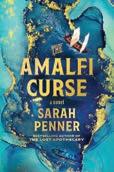


The Amalfi Curse By Sarah Penner (fiction) Haven Ambrose grew up hearing stories of her father’s adventures diving in the Mediterranean. After his passing, she travels to Positano as a successful archaeologist to research a series of mysterious shipwrecks. Along the way, she hopes to uncover the truth behind her father’s tales of a treasure chest filled with gemstones. But her quest for answers leads her to an age-old curse—one that may explain the tumultuous weather events making her search so perilous.
Release date: April 29
No More Tears: The Dark Secrets of Johnson & Johnson By Gardiner Harris (nonfiction) Johnson & Johnson has long marketed itself as a healthcare corporation prioritizing family wellbeing. But over the last two decades, investigative reporter Gardiner Harris of The New York Times has uncovered a different story—one of shady marketing campaigns, questionable business practices and covert pushes of potentially cancer-causing products. No More Tears exposes the darker side of a seemingly well-intentioned company in the post-pandemic era. Release date: April 8
Untying the Moon By Ellen Malphrus (local) Bailey Martin is constantly at odds with herself. She longs for a life of spiritual exploration, yet feels obligated to pursue the milestones she thinks she should achieve. Romantic relationships bring revelations, helping her reconcile with her upbringing in the wilds of the Lowcountry. As she travels across the country searching for answers, she ultimately finds the most profound truths when she returns home.
Release date: Out now





























STORY BY SHEILA PAZ
The Lowcountry thrives, thanks to countless volunteers whose efforts often go unnoticed. These unsung heroes are the driving force behind local nonprofits, making a difference in the lives of many. Each month we’ll feature one of these inspiring individuals to highlight their contributions and raise awareness for the organizations they support. Know someone deserving of recognition? Email sheila.paz@wearelocallife.com, and help us honor the heroes among us.

REEELING IN THE FUN When he’s not on the golf course, Joe is out enjoying everything the Lowcountry has to offer — from hunting and fishing to exploring the great outdoors. Here, he proudly shows off a fresh catch: a beautiful red drum, known for putting up a good fight!

FATHER-SON DUO
Golf is more than a sport for Joe — it’s a family tradition. A skilled and accomplished player, he’s won numerous tournaments, including the Palmetto Bluff Homecoming Golf Tournament. In 2018, he and his son, Matt, took home first place — proof that the love of the game runs in the family.
Some people retire and slow down. Joe Dattilo retired and picked up speed — on the golf course and in giving back.
The Boston native first stumbled upon Bluffton during a golf trip to Beaufort, and it didn’t take long for the Lowcountry’s charm to sink its hooks into him. Between the warm weather, scenic fairways and a slower pace of life, it was the perfect place to trade in the boardroom for the back nine. After 32 successful years at Fidelity Investments, where he made his mark in investment sales and management, Joe and his wife, Christine, packed up and made Palmetto Bluff their full-time home in 2018.
But for someone with Joe’s energy, “retirement” was never going to mean sitting still. Not long after he settled in, a fellow Bostonian and golf enthusiast introduced him to a contact at First Tee of the Lowcountry, the local chapter of the international nonprofit First Tee — an organization that shapes young lives through the game of golf. One conversation turned into a visit, and soon enough, Joe was hooked.
For Joe, golf has always been more than just a game — t’s a lifelong passion. So when he saw the opportunity to share that love with the next generation, he grabbed a club and got to work. He started as a volunteer coach, a role he still cherishes today. But Joe, being Joe, didn’t stop there. Within a year he was invited to join the Board of Directors, and now, six years in, he’s a driving force behind the organization’s fundraising efforts.
From managing the Champions Tournament and its auction to developing new revenue streams, Joe has helped First Tee of the Lowcountry grow in ways that even he couldn’t have imagined. Under his leadership the organization launched its firstever post-secondary education scholarship in 2024. And two First Tee alumni are now swinging their way through collegiate golf at Presbyterian College.
First Tee of the Lowcountry was established in 2013 as a collaboration between the Boys & Girls Club of Hilton Head and First Tee, with a mission to provide educational programs that build character, teach life skills and promote healthy choices — all through the game of golf.
In 2016 the organization completed the construction of its impressive 13-acre facility, featuring a six-hole par-3 short course, a 325-yard driving range, dedicated chipping and putting areas and a classroom for learning.
Since its founding, First Tee has positively impacted more than 570 children and reached 14,000 students in Beaufort and Jasper county schools — all at no cost to the children or their families.
First Tee of the Lowcountry thrives because of the generosity of its donors and volunteers. To donate funds or equipment, visit firstteelowcountry.org. Opportunities to volunteer or coach are also available and greatly appreciated.


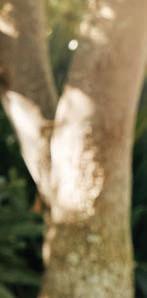



















adjective. lo·cal | lō-kəl
A HERITAGE OF FRIENDSHIP Wilmot has built lasting friendships with many legendary PGA Tour players, including Davis Love III, who has won the tournament five times.
1: characterized by or relating to position in space: having a definite spatial form or location 2: of, relating to, or characteristic of a particular place: not general or widespread: of, relating to, or applicable to part of a whole 3: primarily serving the needs of a particular limited district of a public conveyance: making all the stops on a route

fSTORY BY BECCA EDWARDS
For nearly four decades Steve Wilmot has been instrumental in shaping the success of the RBC Heritage golf tournament. Since stepping into the role of tournament director in 1986 — and later becoming president of the Heritage Classic Foundation — he has been a driving force in elevating Hilton Head Island’s PGA Tour event to new heights. As the 2025 RBC Heritage Presented by Boeing approaches, set for April 14-20, we sat down with Wilmot to reflect on the tournament’s past, present and future as well as its $134.9 million annual impact on the state — and the enduring tradition that inspires us all to get our plaid on.
Q: How has the RBC Heritage changed over the years? A: It has gained popularity on an international scale, bringing the best players in the world to a Signature Event. Since my first tournament in ’86, the purse has grown from $650,000 to $20 million.
Q: How has the tournament stayed the same? A: Over the years it has maintained a community/ hometown feel. Every year we get to show off how special Hilton Head Island is to the world.
Q: Is there anything new that people can experience or enjoy this year? A: This year our team will continue to upgrade the experience — whether through concessions, viewing areas or hospitality offerings. Just because we used to do something one way doesn’t mean we should keep doing it that way.
Q: In what way is the RBC Heritage part of our island’s unique history and culture? A: We are one of the smallest markets on the PGA Tour, but every
year our community rallies together to host one of the premier tournaments at one of the world’s top resorts. This isn’t my or the Heritage Classic Foundation’s tournament — it’s our Heritage.
Q: What do you enjoy most about Heritage?
A: Teamwork! I truly enjoy building relationships and working together to conduct one of the premier golf events.
Q: Sea Pines is such a special place. What are some of your favorite aspects of the community?
A: The people. This community is incredibly generous and always strives to “do good by doing good.” If not for our many volunteers and their passion for giving back, we wouldn’t be able to support the community as we do. Since I started, we have given back almost $57 million.
Q: Can you talk a little more about how the Heritage gives back to the community? A: Like I said — $57 million and counting in charitable giving. The tournament also has an annual economic impact of $135 million locally. When I or my team reach out for something, 99.9 percent of the time the answer is “yes.” I feel truly honored to work with such wonderful partners, sponsors and vendors. There is no “I” in team, and they are all a huge part of ours.
Q: What is your motto in life? A: “Love what you do, do what you love.” Also, “I don’t have to do this; I get to do this.”
Q: What is one fun fact about you that no one else knows? A: I was Santa Claus at the Cherry Hill Mall in New Jersey before moving south to start my career in golf and sports management. LL

















fFrom the common cold to snake bites, the Lowcountry’s cure grows all around us. Wildflowers like goldenrod and purple coneflowers are nature’s healers hiding in plain sight, while elderberries — found in pharmacy products — can be plucked straight from the wetlands. For generations, Indigenous and GullahGeechee communities have harnessed the power of local plants to restore vitality and well-being. Discover the region’s most time-honored herbal remedies, and experience wellness, naturally rooted in the Lowcountry.
In the coastal Carolinas modern, natural healing descends from the collaboration between Indigenous and Gullah people. They exchanged knowledge of the climate and medicine to cultivate a practice unique to the area, preserved in part by geographic isolation. Inez Miller, an herbalist and owner of Miller’s Wellness on St. Helena Island, learned from her ancestors when standardized medicine wasn’t available. “On this island, when I was growing up, there was only one doctor,” Miller says. “If you didn't get an appointment with that one doctor, you had to take care of yourself.”
Today Miller and other local herbalists keep the practice alive by not only sharing their prepared remedies but also their explanatory guides, recipes and coloring books. She says it’s an effort to protect both the cultural history and its descendants. “This way young people can learn of medicinal ways to heal themselves,” Miller says. “If you can’t afford to go to the doctor, instead of staying home and being ill, you can work on things on your own like our ancestors did. They were self-sufficient people.”
STORY BY ALEA WILKINS





Find the fountain of youth in the fields. Life everlasting (also known as rabbit tobacco) grows in dry clearings all over the coastal South and Midwest. Mary Olodun, a naturopathic doctor at Trilera Holistic Care in Bluffton, explains its powers. “It really helps to protect the cells and boost immunity,” she says, citing its high volume of essential vitamins that support the metabolism and fight inflammation. Dr. Olodun notes it is most often boiled into a tea or a tincture to aid congestion, but regular consumption can help prevent future sickness. Whether fighting the common cold or hoping for immortality, life everlasting is a timehonored remedy to increase overall health.




Dog owners may recognize teasels best when they’re stuck on their pup’s fur, but the plant can be surprisingly helpful to humans, especially those with Lyme disease. “Lyme disease is particularly challenging to overcome because the bacteria have spike-like spurs that attach to nerve cells,” Dr. Olodun says. “When you take teasel, it can aid in releasing these spurs, allowing the body to effectively flush out the Lyme bacteria." Over time, Dr. Olodun says teasel can completely rid patients of Lyme in addition to other harmful bacteria and inflammation. While a bristly nuisance on the outside, teasel’s staying power comes from within.







loud family gatherings, we can help.
After a rose blooms and fades, it produces red fruit in the flower’s place. The fruits, referred to as rosehips, are packed with rejuvenating nutrients.
“Rosehips are incredibly high in Vitamin C, making them a valuable tonic for the assimilation of most other essential nutrients within the body for repair, restoration and vitalization of health,” says Amy Spadafora, a naturopathic wellness consultant in Bluffton. As a salve or extract, rosehips’ anti-inflammatory abilities can relieve skin disorders like eczema or arthritis pain. When brewed into a tea or tincture, the fruit can treat diabetes, respiratory conditions and, as the National Library of Medicine found, maybe even cancer. Beloved for its beauty, rose plants have budding possibilities for holistic care.

Discover how Beltone Serene™ hearing aids – our best yet – can help you hear better in noisy situations.
If you’re struggling to hear conversations clearly in crowded restaurants, busy meetings, or loud family gatherings,we canhelp
If you’re struggling to hear conversations clearly in crowded restaurants, busy meetings, or loud family gatherings,we canhelp
Discover how Beltone Serene™ hearing aids—our best yet canhelpyou hear betterinnoisy situations. Get a FREE hearing screening ($149 value) and in-office demo today.
Discover how Beltone Serene™ hearing aids—our best yet canhelpyou hear betterinnoisy situations. Get a FREE hearing screening ($149 value) and in-office demo today.












Commonly known as the purple coneflower, Echinacea provides the ultimate immune boost. “Echinacea is known as the Herb of Fortification, due its super powers for clearing infections,” Spadafora says. “It bolsters the immune system, aids in the production of white blood cells and is very useful in addressing bacterial and viral inflammations.” This makes it helpful for respiratory infections, but it was also used by Indigenous healers to treat tooth pain and snake bites, as reported by the National Center for Complementary and Integrative Health. With a variety of benefits, it’s a sweeping antidote scattered all across the Lowcountry.
Blooming near ponds or waterways, elderberries are known on pharmacy shelves for cold and flu relief, but to Jamillah Miller, owner of Four Seasons Apothecary, the plant’s healing powers are much more comprehensive.
“Elderberry offers more than just immune syrup for a cold or flu. It’s the combination of other kitchen herbs to support the natural function of our body,” she says. With it she prepares her famous elderberry elixir, which she describes as alleviating symptoms of allergies, bronchitis and sinus infections. She also notes its abilities to boost the immune system as a whole rather than just a sick-day solution. “When you think of elderberries, imagine a tree that nourishes humans and animals alike in preparation for a season of stillness,” she says. In essence, they’re ripe with health benefits for any time of year.


Marshmallows are s’more than just a fireside treat. The pillowy confection is made from the root of Althaea officinalis, an herbaceous perennial called a marshmallow because it grows in brackish wetlands. When pulverized and prepared as candy, the plant can make you feel as good as it tastes. “The magic of marshmallow is a sweet remedy combined with honey to soothe sore throats and support digestion,” Miller says. While the treats in grocery stores are missing its namesake ingredient, homemade variations can reap the medicinal benefits. Add to teas, coffee or hot chocolate for relief that’s extra sweet.
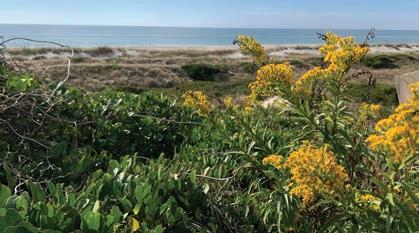
Referred to as “Sun medicine” by Indigenous groups, goldenrods possess a wealth of antiinflammatory remedies. Miller indicates on her website that the plant can provide relief from respiratory and urinary infections. “Goldenrod is one of my favorites because it tells a story of what to expect for the season ahead,” Miller says, referencing its cold- and allergy-fighting abilities. “It provides support by helping our bodies transition gently into the cooler months.” Common preparations include tinctures, but the Penn State Extension indicates that Indigenous healers also crushed goldenrod leaves to alleviate fevers and pain from bee stings. Growing everywhere from backyards to bluff sides, goldenrod is a one-step solution to feeling radiant. LL





If your business manufactures products for the aerospace industry, owns aviation sites, offers aviation services or operates aircraft or drones, you may have exposures that are not covered under your current insurance policies. As an independent insurance agency and consulting firm specializing in aviation, JCL Aviation Services is here to help. We’ll identify and assess your risk and create solutions that match your exposure.



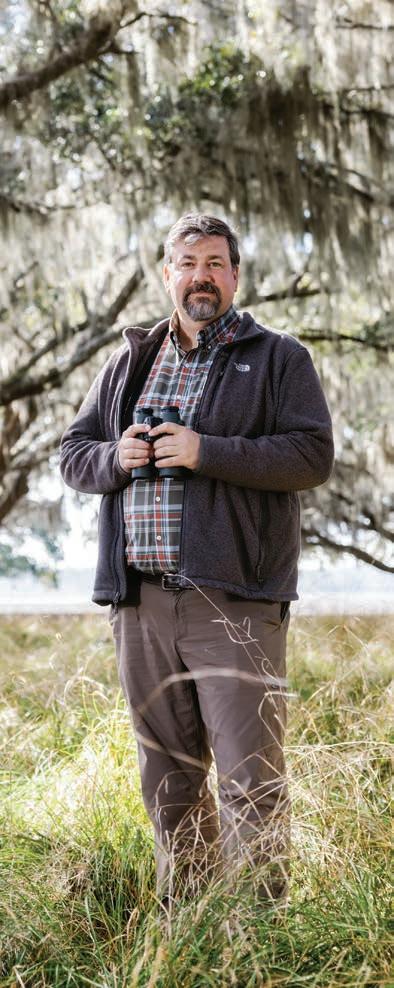
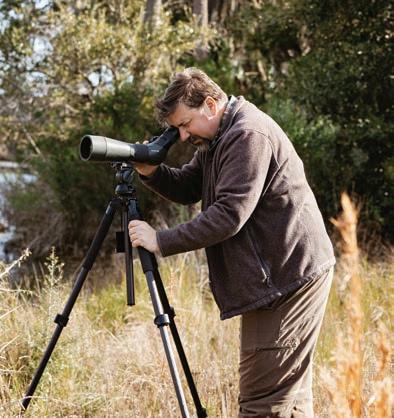




The ecosystem of the Lowcountry is something that sets it apart from anywhere else in the world. Meet a few locals who have spent their lives studying this fascinating slice of nature.
tSTORY BY BARRY KAUFMAN PHOTOGRAPHY BY LISA STAFF
There’s magic in our marshes. Thanks to the sprawling wetlands that curl and entwine themselves around our home, we can always smell what the tide is doing. We can look out across its expanse and watch wildlife on the wing. We can venture out, hip waders on, in search of the delicious bounty that clings to its pluff mud.
There’s a reason Pat Conroy equated living here with the marsh. Writing in The Prince of Tides, he said, “To describe our growing up in the Lowcountry of South Carolina, I would have to take you to the marsh on a spring day, flush the great blue heron from its silent occupation, scatter marsh hens as we sink to our knees in mud, open you an oyster with a pocketknife and feed it to you from the shell and say, ‘There. That taste. That’s the taste of my childhood.’”
The flavors, the smells and the vibrant wildlife coalesce into a potion that makes every day here a little more enchanted. Here we meet three locals who have spent years studying its mystic recipe.

If there’s one way to truly appreciate the complex ecology of the South, it’s to leave it behind for a while. Andy Jones can testify to the perspective one gains as a prodigal son. A native of Kingsport, Tenn., his love affair with the natural world began at a young age — counting toads in his front yard and taking exhaustive field notes on his findings. Shifting to ornithology, he took wing to the University of Tennessee and the University of Minnesota, where he earned his bachelor’s and PhD. That led to a 16-year career as curator of ornithology at the Cleveland Museum of Natural History.
“After sixteen Cleveland winters and six Minnesota winters, I was ready to get back South,” he said. “I wanted to reclaim my Southern roots and the biodiversity that comes with it.”
He found no small measure of both at Spring Island Trust, where he was hired as executive director in 2022. Centered on the community of Spring Island, the trust serves dual purposes: The first is to steward more than 1,100 acres on the barrier island, protecting the delicate balance of its pristine wilderness. The second is to engage with the community, sharing knowledge and promoting the importance of preserving our land.
“That’s really the key — the unique setup we have here,” he said. “Having a nonprofit within the community that’s here to represent the value of nature and extend that mission across the Lowcountry really attracted me.”
Working with a team that includes Tony Mills, host of the South Carolina ETV show Coastal Kingdom, and other talented naturalists, Jones is spreading the same joy he discovered as a child. And for a kid who grew up marveling at birds in landlocked states, his time on Spring Island has unlocked an entirely new dimension of his passion for wildlife.







A LIFE IN NATURE Dr. Andy Jones serves as the executive director of the Spring Island Trust and Lowcountry Institute. A lifelong naturalist, he is deeply passionate about the rich biodiversity of the Southeast.
“This area is really a nursery for a lot of very important game fish and shrimp,” he said. “And it’s fascinating because we really only have one species of plant. But Spartina is amazing, and it’s the entire basis for this incredible ecosystem.”
And he’s seen a few. Before coming here, he served on the boards of Black Swamp Bird Observatory and Winous Point Marsh Conservancy, two vast marshlands where the edge of Lake Erie sweeps toward Put-in-Bay. Arriving in the Lowcountry, he got a crash course in what separates salt and freshwater marshes.
“The diversity here is just different. I knew the birds of this region, but plant life was a bigger challenge. There was a pretty steep learning curve,” he said. Just the same, within a few months of encountering this stunning new ecosystem, he was already co-leading master naturalist classes. And he gives full credit to the Spring Island Trust staff for helping him get up to speed.
“This organization has a remarkable staff. They’re dedicated, but they’re also unbelievably knowledgeable and full of passion. It’s a great staff to work with.”

















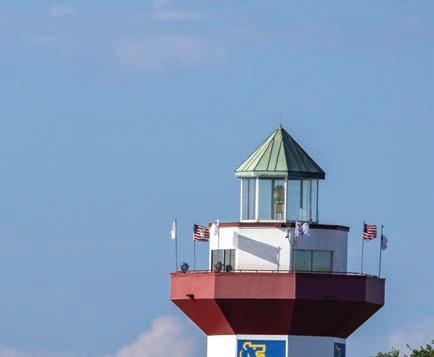













CorrellInsuranceGroupofHHIisproudtobealocalagencyinvestedinour communityinsuringtheCarolinassince1931.
TheRBCHeritageproducesnearly$134.9millionannuallyineconomicimpact forourlocalcommunityandthestateofSouthCarolina,anditshost,the HeritageClassicFoundation,hasdonated$55.3millionsinceitsfoundingin 1987tocharitiesthroughoutSouthCarolina.TheRBCHeritagereflectsour loveofcommunityandisaligned withourcompanyvaluesmakingitaperfect partnershipinsupportingourlocalcommunity.
Let’scelebratetheGRANDtraditionoftheRBCHeritagePresentedbyBoeing!


To Andy Jones, the miracle of our marshland lies in the animals that call it home. But when you look below the surface — peeling back thousands of years of shifting shorelines — you uncover the secret origins of our one-of-a-kind ecosystem.
“The landscape around Port Royal Sound was something I didn’t know much about until moving here. I still think it’s too well-kept a secret,” he said. “It’s not like any other saltwater ecosystem along the coast. When sea levels were lower, this was the upper end of a river that flowed hundreds of miles toward the more distant coast. When they rose to their current levels, they drowned the watershed.”
Essentially, the rivers that feed our marshes aren’t necessarily rivers in the strictest sense. Jones compares them to saltwater that sloshes inland twice a day with the tides.
“You can go to the Broad River Bridge, which is about 15 miles from the open ocean, and find nearly full-strength salt water,” he said. “You don’t really see that anywhere else. Between the high tides and low topography, we have tons of salt marsh. In fact, Beaufort County has half of South Carolina’s total marshland.”





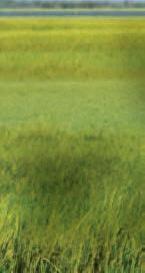




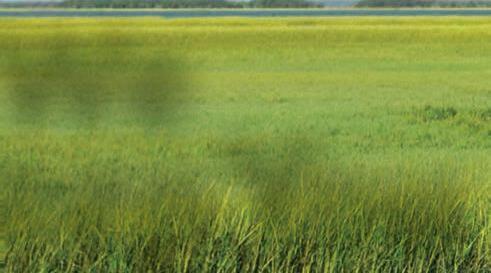







At Beaufort Memorial, our advanced orthopedics and spine care team is committed to helping you be your best and enjoy life without pain.
Whether neck or back pain is slowing you down or your activities are limited due to hip or knee pain, our board-certified specialists will personalize your care using sophisticated diagnostic and treatment options. Our advanced techniques and technologies, including Mako SmartRoboticsTM and VELYSTM robotic-assisted joint replacement, will improve function and relieve pain quickly. Many surgical patients even go home the same day.
Visit BeaufortMemorial.org/Ortho for help addressing your pain.
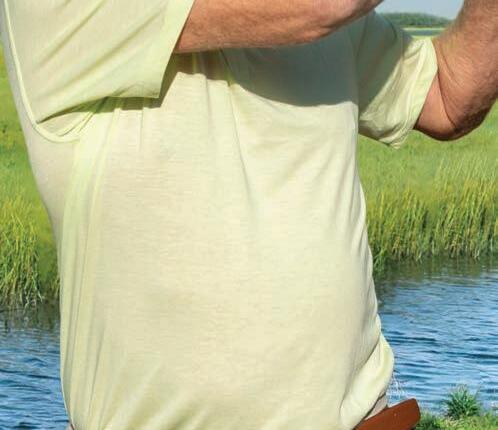
At Beaufort Memorial you’ll also find:
• Joint preservation therapies
• Numerous non-surgical treatment options




• A personalized approach to restoring mobility and joint function
• Pre-operative education classes that engage patients and caregivers in the healing process
• An Optimization Program that follows you through the process to ensure the best outcomes
• Outpatient and in-home rehab services to get you back to doing what you love faster
wWhen the first developers arrived at Palmetto Bluff with plans to transform the old paper company hunting grounds into one of the premier luxury communities on the East Coast, they received an unexpected bonus. Along with 20,000 acres of pristine Lowcountry marshland, maritime forests and cultivated fields, they inherited a man who has come to symbolize the wild nature of this special place.
“I’ve been here 33 years, so I came with the property,” said Jay Walea, executive director of the Palmetto Bluff Conservancy, and both a disciple and steward of Palmetto Bluff’s natural beauty. “When I first came here, I was about 10 years old. Now I’m the old man.”
His first introduction to the land came through his father, who worked in asset management for Union Camp Corporation. That meant regular trips to the untamed property at the edge of the world — a vast expanse the paper company maintained as hunting grounds for its executives and guests. “I told my daddy when I was 13 that I was going to come work out here. I ran hunts all the way up to college, then interned here and never left.”
His role with the conservancy requires him to wear many hats — as well as snake boots and hip waders, depending on where the day takes him. One day might mean leading a hunt for turkey, deer or hogs to help manage herd sizes. Another might involve conducting final inspections on a home to ensure it was built with respect for the surrounding ecology. Some days it means wading into a lagoon to handle a nuisance alligator. This time of year it means setting controlled fires to prevent the kind of wildfires that have plagued the Upstate.






PRESERVING THE WILD Jay Walea is the executive director of the Palmetto Bluff Conservancy, where he has spent 33 years developing, implementing, and managing environmental and stewardship programs.
“We are supposed to be the safeguards of the property, so we basically get our hands on anything and everything,” he said. “I used to always say that the most important thing we do is wildlife management. But really and truly, the most important thing we do is outreach and education.”
Through wildlife tours and seminars, Walea and his team of four Conservancy staff serve as voices for the land’s pristine beauty, helping to spread the gospel of a place that captured his heart when he was just a kid.
“My hope is that I can convince more people to put land into conservation in perpetuity. That’s my thought riding in here every morning — that we have to conserve the land,” he said. “Now that’s not the same as preserving the land. That sounds sexy, but preservation means leaving it alone and letting Mother Nature take its course. But that isn’t how it works. Conservation is where it's at — maximizing and utilizing our natural resources responsibly.”


Main Street Medical is a premier urgent care and family practice serving individuals and families in Hilton Head, South Carolina. Led by Joel Johnson III, MD, the team aims to treat all their patients with dignity and compassion by providing comprehensive medical care services that promote a healthy community.
A physician-owned practice, Main Street Medical has a large team of health care professionals able to provide a wide variety of services that include both primary and urgent care. In addition to adult and pediatric care, the team also provides women’s care, x-rays, laboratory services, medication assistance, and employment physicals.




fFor Jay Walea, who has spent 33 years traversing every forest, glen and marsh among the 20,000 acres of Palmetto Bluff, there is a sanctity to the marshland that stretches across the property.
“A lot of times I'll find myself out on the causeway at Long Island, looking out across that hard marsh. You don’t hear any backpack blowers, you don’t hear any lawnmowers. Occasionally you’ll hear the crab boats coming in to check their pots,” he said. “Looking out across there makes you feel like you’re the only person on earth, and it is definitely where I find my peace.”
Preserving that peace means conserving the land — ensuring that no matter how many new homes or neighborhoods Palmetto Bluff creates, each respects the community’s guiding ethos of maintaining nature’s balance.
“The best way to protect the marsh is to make sure you’re not letting people build right up next to it,” he said. But even with a 100-foot buffer, called the River Overlay Protection District, in place, Walea’s time-tested practices add extra protection. “When you get a heavy driving rain, you’ll still get runoff headed toward the marsh. But saving the understory and the midstory of the surrounding forests filters out those contaminants. It’s all about the marsh, but, truly, it’s about all of the land.”
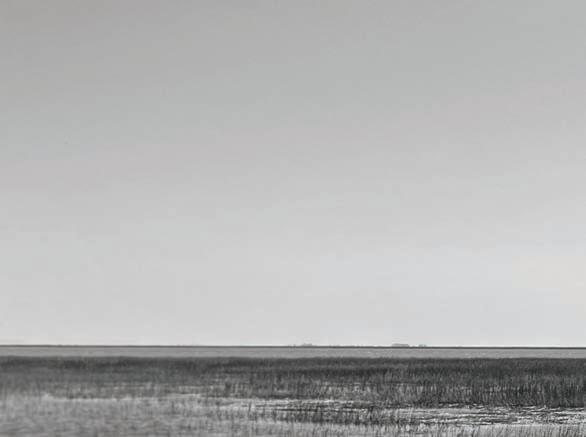
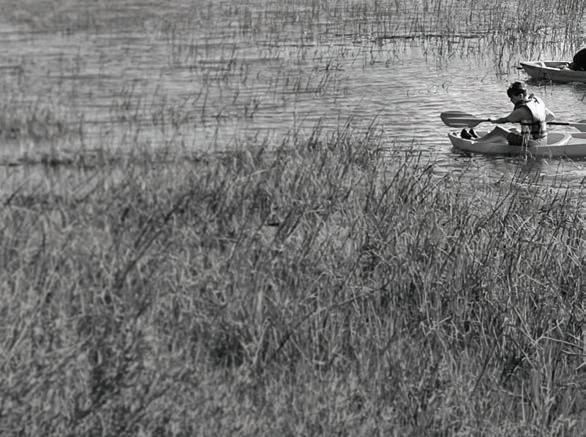
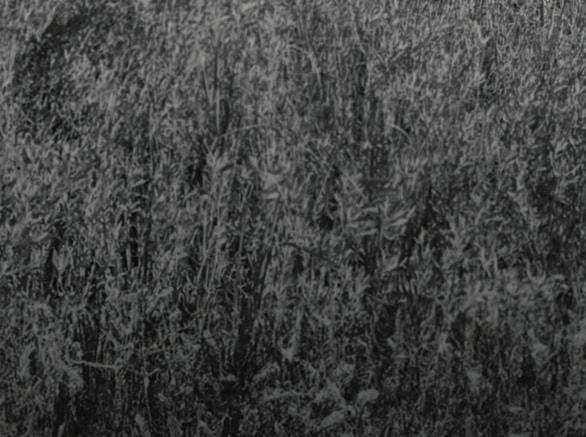
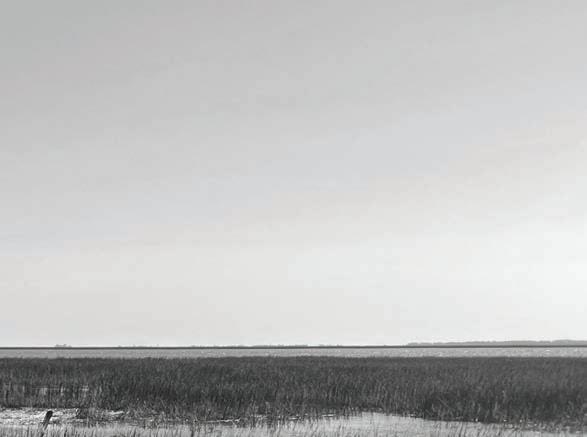






wWhen your kids visit the Port Royal Sound Foundation Maritime Center, they may see it as just another fun field trip. They won’t even realize how much invaluable knowledge they’re absorbing as they move from tank to tank, getting up close and personal with the sea life that calls our waterways and marshes home. They’ll be too busy having fun to notice how much their perspective is expanding — or how much more respect they’ll have for their Lowcountry home by the time they leave.
They may not realize it, but Jody Hayward will. Creating that understanding and expanding that perspective is what drives her.
“School kids on trips have been the bread and butter of what we do — creating a place for kids, families and visitors to come, learn, experience, get a little dirty and enjoy this environment,” she said. “These kids don’t always have the opportunity to do that, and we want to help them connect and understand how special this place is.”
Those field trips are just a small part of what the Port Royal Sound Foundation does to protect our rivers and marshes.
“We love being that resource that connects people to the water. A few years ago we started water quality monitoring, and it has grown into this robust citizen science program, with wonderful volunteers monitoring water quality all around the watershed,” she said. Those volunteers are helping the foundation gauge the health of local waters, comparing new findings to historical data for a more complete picture. “We’re so lucky to have such a pristine body of water, but we definitely have to stay on top of things and be proactive in keeping it in good shape. We’re expanding roads, building new neighborhoods and adding infrastructure to accommodate everyone moving here. We, as a whole, need to make sure we’re doing these things in the right way and in the right place.”
This ambitious broadening of the







LEADING WITH PASSION Jody Hayward is the executive director of the Port Royal Sound Foundation. Before her appointment, she was a dedicated volunteer and lead fundraiser for the PRSF Maritime Center in Okatie.
foundation’s scope has been Hayward’s signature approach since long before she came to the Lowcountry more than 20 years ago. Leaving the “white-knuckle, fast-paced” atmosphere of Atlanta for Beaufort, she quickly got involved in the community. Planning for what would become Riverview Charter School started in 2005, with her serving as co-founder when it opened just four years later.
“That was an amazingly rewarding and difficult endeavor to be a part of, but the school is flourishing. I’m so proud of all it has accomplished,” she said. “That’s really what gave me the bug for doing things that are community-based — because you can see what your hard work is doing for the community.”
Through Mike Long, then chairman of the Port Royal Sound Foundation, she began volunteering and fell in love with the mission. When the opportunity arose to lead as director, she didn’t have to be asked twice.
“That was an amazing moment for me — to jump in and help this wonderful group of founders create a museum for the public and tell the story of the waterways that cover 50 percent of our area,” she said. “We’re saturated by the Sound.”





tThe scope of the Port Royal Sound Foundation’s mission extends far beyond the static displays and exciting attractions of its maritime center. Behind the scenes its staff and volunteers are working tirelessly to conserve and protect our waterways in a multitude of ways.
“That combination of education and research is really what drives the mission to conserve the Port Royal Sound. It’s such a cycle — the more you learn, the more it fuels education, and the more people are educated, the more they want to know. That ultimately helps build this culture of conservation,” she said. “And it’s not just us—there are so many great partner organizations doing incredible work in conservation. By combining our efforts, we can accomplish so much more.”
That means initiatives like bringing on Courtney Kimmel, director of conservation, to develop a strategic plan for research. They’ve hosted research symposiums, bringing together the brightest minds in conservation. They’ve organized catch-andrelease fishing tournaments to assess fish populations. And they’ve partnered with USCB on Pritchards Island to explore the mysteries of our local ecology.
“Our focus is on painting a picture of what we know — what data we have, what we need to facilitate and who we need to connect with,” she said. “There hasn’t been a lot of research done here. It’s exciting new territory for researchers.” LL



CANCER CARE STARTS IN YOUR COMMUNITY.
We’re proud to provide compassionate, innovative infusion therapy at our newest location in Bluffton. Built with patient comfort in mind, this state-of-the art building enhances the patient experience. A water wall provides a soothing tranquil environment, a meditation chapel is available for prayer and reflection, and the furniture keeps you plugged in to your favorite devices to help pass the time — all complimented by the expert care of board certified medical oncologists, nurses and pharmacy staff.




Expect the very best from the Nancy N. and J.C. Lewis Cancer & Research Pavilion at its newest location in Bluffton, serving Hilton Head, Bluffton, Okatie, Hardeeville and Beaufort.






STORY BY B.C. RAUSCH + PHOTOS BY JOHN MCMANUS DESIGN, CRAFTSMANSHIP
At the heart of Palmetto Bluff, where Lowcountry charm meets modern sophistication, a home unlike any other stands as a testament to thoughtful design and artistic craftsmanship. This sleek, contemporary retreat — designed by Group 3 Designs — is a study in contrasts and cohesion, blending bold natural elements with state-of-the-art materials and high-end finishes.
When Group 3 Designs owner Mike Ruegamer first stepped into this project, he worked from existing architectural plans and transformed the interior, elevating the space with thoughtful interior architecture and design. Working with interior designer Taylor Stone, Ruegamer redefined the home’s flow, ensuring that every space tells a story — of functionality, luxury and a deep connection to the surrounding landscape.
With ceilings that float in layers of light, walls wrapped in dramatic stone slabs and a floor plan that frames breathtaking views, this home is nothing short of showstopping. Step inside and experience its most inspiring spaces.
A space designed for both gathering and relaxation, the living room is defined by two commanding focal points: a statement bar and a grand fireplace wall.
Ruegamer strategically placed the custom bar in this location, creating a seamless transition between the seating lounge and the entertaining kitchen. The stepped-ceiling design, featuring LED-lit channels, helps define these zones while adding a sense of depth and movement.
The fireplace, crafted from book-matched granite slabs, is an artwork in itself. The black, charcoal and gray tones bring an almost sculptural quality to the space. Paired with tailored furnishings and rich textures, the space exudes a sophisticated yet inviting ambiance.
Designed as both an entertainment hub and a functional workspace, this chef’s kitchen is the epitome of sleek sophistication. The main kitchen, meant for hosting and casual meals, contrasts with the back kitchen, a hidden powerhouse for serious cooking.
Anchoring the space is a granite-slab backsplash, providing a seamless visual flow. Group 3 went with a chrome metal finish for details like the cabinet hardware, hood trim and fixtures, maintaining a clean, polished aesthetic.
A stunning chandelier, inspired by the shape of a lotus flower, floats above the oversized island, casting a warm glow over the luxurious stone countertops. The dual sinks — one on the island for prep work, another near the window for cleanup — enhance functionality without sacrificing the aesthetic integrity of the design.

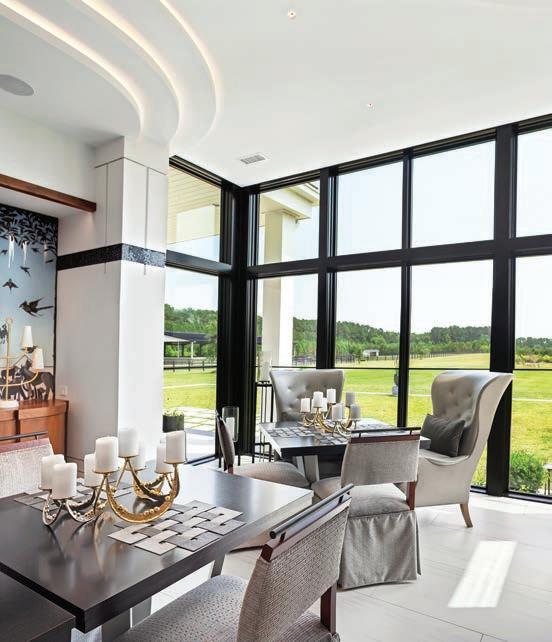

This dining room isn’t just about the table — it’s about the view. Framed by floor-to-ceiling windows, the space overlooks expansive horse pastures, a tribute to the homeowners' passion for equestrian life.
The ceiling treatment, a continuation of the living areas’ sculptural elements, directs the eye outward, drawing attention to the serene landscape. A floating walnut sideboard provides discreet storage for seasonal dinnerware and decor, while the custom modular dining table offers flexibility for both intimate meals and large gatherings.
The owners wanted a space that could feel cozy for two but expand for entertaining. The design allows for both, without losing its refined aesthetic.

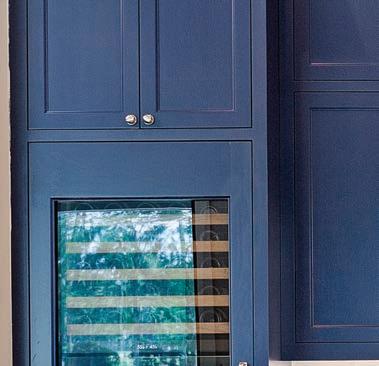
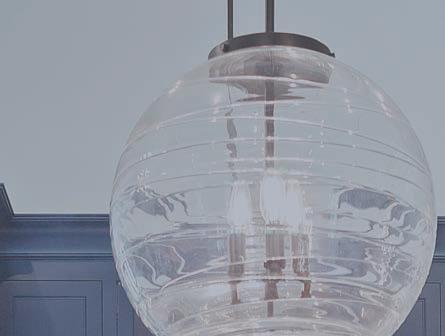






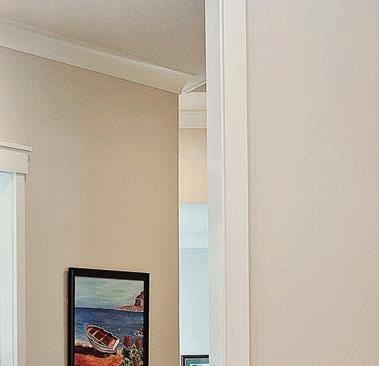





The foyer sets the tone for the home’s high-contrast elegance. A custom-designed front door, with circular glass insets, softens the strong rectilinear lines of the windows, allowing for a play of light and shadow.
A statement marble wall, juxtaposed with warm walnut wood tones, creates a striking first impression. Group 3 sourced a solid sculptural piece for the entry console, something that would anchor the space without competing with the bold stone.
The staircase, made of black granite steps with white-painted risers, adds another layer of contrast and visual intrigue.





The primary suites reflect the distinct personalities of their owners.
Hers: Soft, serene and nature-inspired
This space is a sanctuary of warmth and femininity. The design centers around a delicate floral tile accent in the master bathroom, complemented by a ginkgo leaf chandelier and soft gold finishes. Blush and beige tones infuse a sense of calm, while floor-to-ceiling sheer drapery panels frame the pastoral views outside.
His: Bold, masculine and contemporary
With grand scale and dramatic layers, this suite exudes masculine sophistication. A floating, LED-lit wall, textured oak paneling and a hidden study door create an atmosphere of exclusivity and retreat. The striking black-and-white marble vanity in the bath adds an element of refined drama.
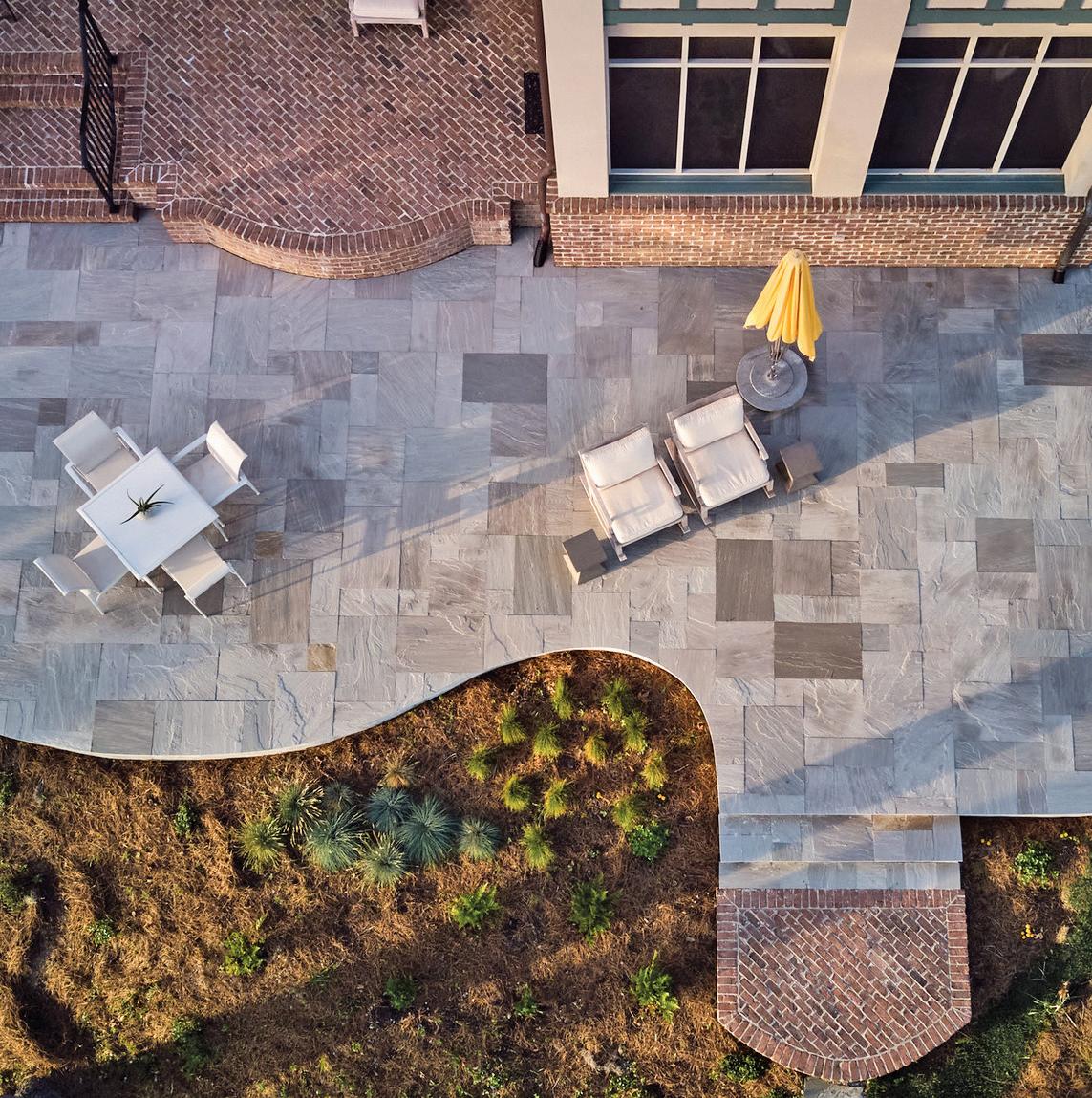

More than just a passageway, the main hallway functions as an art gallery, showcasing the homeowners' personal collection. A diamond-pattern floor design subtly guides the eye, while track lighting and sculptural fixtures create a museum-like ambiance. Adding a touch of nature, wallpaper resembling gray tree bark adorns overhead insets above doorways, introducing an organic texture that softens the structured design.




Tucked away on the secondary floor, this guest retreat offers a luxurious getaway. The room’s color palette remains neutral with pops of blue, echoing the natural tones of the surrounding landscape. Motorized roller shades and drapery panels ensure both privacy and warmth, while a striking stone slab in the bath adds a contemporary touch.
This home office is as much a gallery as it is a workspace. A custom quarter-moonshaped desk, topped with a water-like glass surface, serves as a functional sculpture. The glass top was custom-made in California, designed to capture the essence of movement and fluidity. A hidden passage connects the office to the primary suite, maintaining the seamless flow of the home. LL










STORY BY B.C. RAUSCH+ PHOTOGRAPHY BY JOHN MCMANUS

For homeowners seeking an immersive entertainment experience, this media retreat by Group 3 Designs blends luxury, comfort and functionality in perfect harmony. Designed to feel both intimate and indulgent, the space envelops guests in a cinematic world — whether they’re enjoying a blockbuster film or an exciting game-day gathering.
At the heart of the design, a curved ceiling mirrors the rest of the home’s architectural flow while drawing attention to the screen. Walls wrapped in textured wallpaper add depth and warmth, enhancing the cozy, private atmosphere.
With seating for up to seven, the room is tailored for both relaxation and entertaining. Four motion theater recliners are paired with a plush three-seat sofa, ensuring everyone has a premium viewing spot. A cocktail table anchors the layout, offering a stylish and practical centerpiece for drinks and snacks.
Lighting plays a pivotal role in setting the perfect ambiance. Dimmable fixtures allow for a seamless transition from everyday lounging to full cinematic immersion. The blend of warm tones, soft textures and deep leather seating enhances the room’s sophisticated, yet inviting, feel.
• Embrace rich textures like leather seating and tactile wall coverings for added depth.
• Incorporate architectural details such as a curved ceiling or stepped walls for visual interest.
• Opt for dimmable lighting to set the mood for any occasion.
• Create a balanced layout with intimate seating and a well-placed bar for effortless hosting.
• Use a neutral yet warm color palette, layering golden tones, rich browns and soft creams for a welcoming feel.
• Include built-in wall sconces to provide soft, indirect lighting and enhance the cozy ambiance.
• Choose a high-quality patterned rug to add warmth and soften the acoustics.
• Incorporate concealed storage for AV equipment for a clutter-free space.
• Select a minimalist, oversized digital screen for a sleek, modern aesthetic that enhances the cinematic experience. LL






Our team is devoted to providing world-class service, flawless craftsmanship and uncompromising quality in every home build–guaranteed.

Every wood feature in this Sea Pines home — from built-ins to shiplap, beams and shelving — was meticulously handcrafted by RCH Construction. The only exception? The cabinetry, along with custom-stained crown and molding, crafted in their Pennsylvania wood shop. Throughout the home, Hilton Head tributes add layers of meaning, including a stunning marsh scene by local artist Michael Karas. Above, two grand, tiered chandeliers anchor the space, their graceful presence adding just the right amount of coastal drama.







STORY BY SHEILA PAZ + PHOTOS BY KIT CARPER
cCreating a home that welcomes generations under one roof wasn’t just a wish — it was a necessity for the owner of this Sea Pines home. After 50 years of cherished memories, it was time to rebuild, but preserving the peace, comfort and timeless Lowcountry charm that had always defined the space was non-negotiable. To bring their vision to life, they turned to Angelina Carper, president and CEO of RCH Construction, whose expertise in crafting homes with heart made her the perfect choice. Designed for an active family with a steady flow of visitors, the main living area is as functional as it is inviting. An open-concept layout seamlessly connects the living room, kitchen and dining space, ensuring everyone stays connected — whether gathered around the fireplace, sharing stories at the dining table or prepping meals in the beautifully appointed kitchen. Sliding doors off the dining and living areas expand the space even further, opening onto a screened-in porch that invites relaxation with a gentle coastal breeze.




To complete the room, Christina Montecalvo and her team at A Well Dressed Home, along with home designer Mark Brummer of Shore Line Design, infused it with thoughtful Lowcountry touches. Rattan accents and woven textures mirror the lush backyard views of Harbour Town Golf Links, while soft blue hues reflect the island’s shimmering waterways. The result? A welcoming main room that feels both sophisticated and deeply rooted in its coastal surroundings — just like the island the homeowners have adored for generations. LL
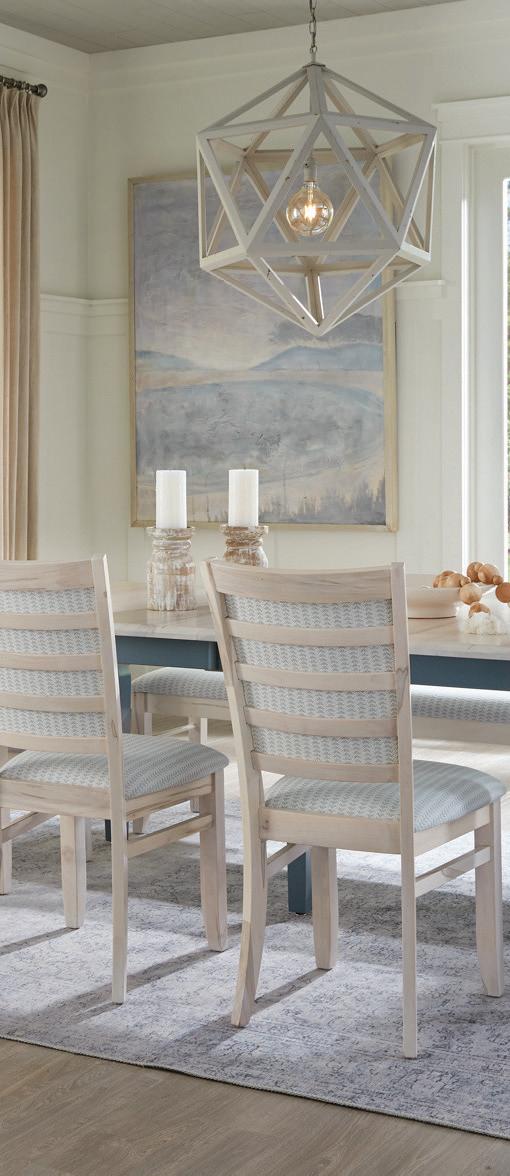







Manually raising and lowering blinds in every room — morning and night — is a workout no one signed up for. Enter automated window treatments, the seamless solution that blends convenience, style and smart technology. More than just a sleek upgrade, these intelligent shades deliver effortless light control, enhanced privacy, improved safety and even energy savings. Bob Engler from Budget Blinds shares why motorized window treatments are the ultimate game-changer for modern homes.

Say goodbye to tangled cords and hello to a safer, smarter way to shade your space. Motorized shades eliminate dangling chains, making them a worry-free choice for homes with pets and children. Need privacy in an instant? With a tap, your shades drop, shielding your home from prying eyes — whether it’s nosy neighbors or the midday glare. Bonus: Automated scheduling gives the illusion that you're home, even when you’re away, adding an extra layer of security.




Tired of playing musical blinds all day? With motorized shades you’re in control — anytime, anywhere. Adjust your window coverings with a remote, smartphone app or even a simple voice command. Yes, you can tell Alexa to lower the shades while you sip your morning coffee. Prefer a gentle sunrise wake-up instead of a blaring alarm? Schedule your shades to rise with the sun or close during peak afternoon heat to keep your home cool and comfortable. It’s effortless light control, built for modern living.
Did you know your window treatments can help cut energy costs? Motorized shades work with your smart home system to adjust based on sun exposure, reducing heat gain in the summer and helping retain warmth in the winter. The result? Lower utility bills, fewer temperature fluctuations and a cozier, more energy-efficient home year-round — all without lifting a finger.
A TOUCH OF NATURE These Woven Wood shades by Inspired Shades infuse this master bathroom with natural warmth, elegantly filtering sunlight while striking the perfect balance between privacy and soft, diffused light.























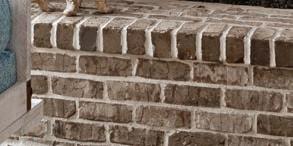










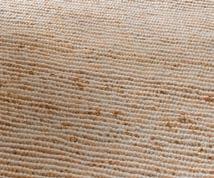


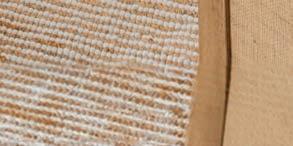
















STORY BY SHEILA PAZ
Your closet should be more than just a place to store clothes — it should be a space that inspires you every time you step inside. This stunning closet project from Closets by Design is the perfect blend of organization and style, allowing the owners to showcase their favorite pieces while maximizing functionality. Whether you want to declutter, display or add a touch of luxury, Closets by Design shares key details of the project to inspire anyone looking to transform their closet into a chic, organized paradise.
Transform your closet into a high-end boutique with a custom shoe display. Elevated shelves, glass doors and dedicated cubbies allow you to showcase your collection while keeping designer pieces dust-free. Adding interior lighting enhances the aesthetic and creates a polished, showroom-style presentation.





Keep your laundry out of sight with a sleek, space-saving tilt-out hamper. More efficient than a standalone basket, this discreet feature helps maintain a tidy space, seamlessly blending into your closet’s design while keeping laundry organized.

Keep your jewelry pristine and tangle-free with a custom velvet-lined drawer. Thoughtfully organized compartments ensure each necklace, bracelet and pair of earrings is easily visible. For added security, consider incorporating lockable storage to protect your most precious pieces.

If space allows, a closet island can elevate both style and function. Providing additional storage for sweaters, undergarments and accessories, it also serves as a striking focal point. A glass-top or custom countertop offers a place to display perfumes, decorative pieces or fresh flowers, adding a personal touch to your luxury dressing space.
























A GUEST BEDROOM INTO A MARSHSIDE RETREAT WITH A BLEND OF EARTHY GREENS AND COASTAL BLUES.
Have you ever noticed how time seems to slow down by the marsh? The breeze rustles through the spartina, herons wade unhurriedly through glassy waters, and the sky drifts effortlessly from misty blue to a golden-hour glow. This month’s color palette, featuring Sherwin-Williams paints, captures that same laid-back rhythm — perfect for a guest bedroom with a marsh view. Soft greens mirror the marsh grass, airy blues reflect the open sky and water, and warm beige evokes the sun-kissed sand, grounding the space in coastal tranquility. Just a warning: once you transform a guest bedroom into a marshside retreat, your guests may never want to leave.

DARK NIGHT (SW 6237)
Emerald Urethane
Trim Enamel, Semi-Gloss



GET THE LOOK Design a guest bedroom that blends relaxation and sophistication through a thoughtful mix of colors, textures and natural materials. A light hardwood floor anchors the space with organic warmth, while a woven area rug introduces subtle texture underfoot. Beside the bed, a sculptural pale green side table adds a modern touch, serving as the perfect spot for a small vase or a bedside book. A plush white armchair, draped with a mustard knit throw, creates a cozy corner for reading or unwinding. On the dresser a curated selection of décor adds personality and depth. Abstract artwork, metallic reading lights and crisp bedding layered with plush pillows enhance the inviting aesthetic.






SLOW GREEN (SW 6456)






Emerald Interior Paint, Matte Soft and serene, this versatile bluegreen hue captures the essence of salt marsh grass swaying in the coastal breeze. Its gentle tones effortlessly complement a variety of palettes, while its ability to reflect natural light enhances any space with an airy, organic warmth.













GREEN BAY (SW 6481)





Emerald Interior Paint, Satin Rich and sophisticated, Green Bay adds striking depth to this bedroom’s accent walls, creating a bold contrast. This deep teal-green hue enhances the room’s modern aesthetic while complementing warm wood tones, muted blues and earthy accents.









DRIED
LAVENDER (SW 9072)





Emerald Urethane Trim Enamel, Satin
A refined neutral with a whisper of color, Dried Lavender is the perfect unexpected shade for bedroom furniture. This dusty blue-gray with a hint of warmth pairs beautifully with natural wood tones and brass hardware, adding dimension to any space.






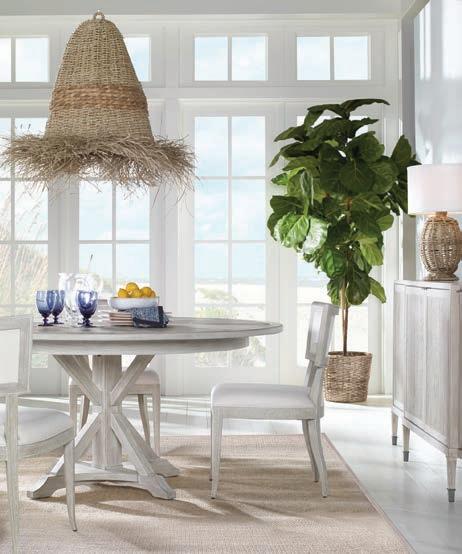



THE 2025 HGTV DREAM HOME IN BERKELEY HALL OFFERS A STYLISH RETREAT TO PERFECT YOUR SWING, STORE YOUR GEAR AND UNWIND IN COMFORT.
PHOTOS PROVIDED BY HGTV
eEach month we invite you to explore the 2025 HGTV Dream Home in Berkeley Hall, a masterpiece crafted by Shoreline Construction, Court Atkins Group and HGTV designer Brian Patrick Flynn. This month we open the doors to the home’s detached garage — more than just a place to park. Designed with golf enthusiasts in mind, this stylish space offers an area to sharpen skills, store essentials and relax after a round on Berkeley Hall’s North Course, located just steps away.

SHARPEN YOUR SWING
Hidden behind doors, a hightech golf simulator offers a premium practice experience at home. Featuring an overhead launch monitor and high-speed cameras, this system provides instant shot feedback on a virtual driving range. Delivering some of the most precise data available, it helps golfers refine their skills year-round. When not in use, the simulator can be concealed, maintaining the garage’s clean and functional design.

KICK BACK AND RELAX
The garage lounge provides the perfect spot to unwind post-round or catch up with neighbors. Wooden chairs with water-resistant cushions and an acacia pedestal coffee table enhance both comfort and convenience. A wall-mounted ring-toss game adds entertainment, while the durable epoxy flooring ensures easy maintenance. A custom art installation made from golf balls in various hues brings a playful and creative touch to the space.


SMART STORAGE SOLUTIONS
A freestanding white multi-use sports rack keeps golf gear organized. Open shelves provide easy access to golf shoes, towels and other essentials, ensuring everything is within reach before heading out to the course.
Get the look
• James Hardie Artisan V-Groove
Siding
• Wayfair Acasia Coffee Table
• Wayfair Amina Acacia Chair
• Wayfair Topeka Sports Rack
• Wayfair Anzio “Gone Golfing” Doormat
• Beachcrest Home Everard Rattan Accent Stool
• Murphy Golf Simulator
• GoSports Hook21 Ring Swing Game
• Paint: Sherwin-Williams Delft (SW 9134)




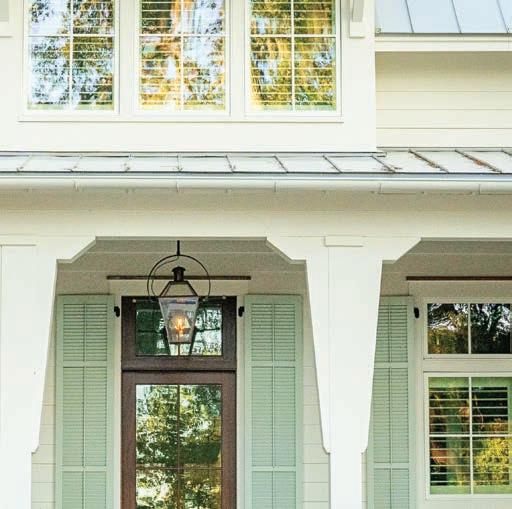


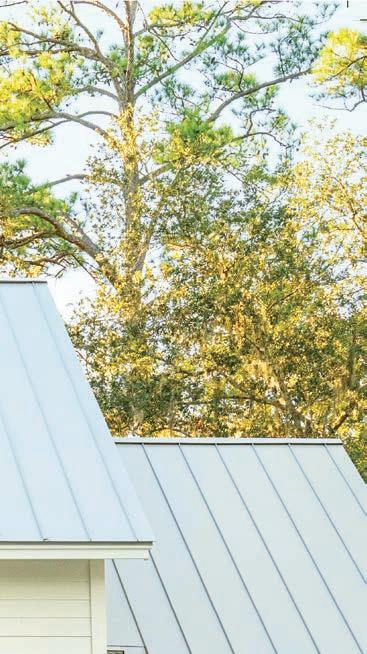



tSTORY BY SHEILA PAZ + PHOTO BY RUTHE RITTERBECK
The exquisite dahlia café au lait is making a graceful appearance this month. Kim Epley, artistic director at The Studio at Farmer Blue — a 12-acre, cut-flower farm in Seabrook — showcases her love of color, blending an array of local, seasonal, fresh-cut blooms. This dahlia is known for its large, ruffled petals and creamy-to-blush hues, a true reflection of Southern grandeur — graceful, hospitable and elegant, much like a well-loved heirloom porch swing or a perfectly pressed seersucker suit.

Dreamy color palette:
Soft shades of blush, peach and ivory are a warm and inviting addition to any room.
Vintage vessel charm:
An aged, footed urn adds old-world elegance, making the arrangement feel like a work of art.
Lush, airy composition:
The balance between large, showy dahlias, smaller blooms and trailing greenery creates movement and visual harmony.
Fresh water daily. Dahlias are thirsty flowers — replace the water daily to keep them hydrated and looking their best.
Trim for longevity. Cut stems at an angle every few days to improve water absorption and extend vase life.
Keep cool and shaded. Place the arrangement in a cool, shaded area away from direct sunlight to prevent premature wilting.




























STORY BY AMBER KUEHN
Editor’s note: The Lowcountry’s
is more than a landscape —


a living, breathing ecosystem. In this special
marine biologist Amber Kuehn takes us on a journey through its tides, wildlife and rhythms, weaving a lifetime of experiences into a single perfect day.



iI’ve had the privilege of growing up in the heat and humidity of the Lowcountry, a place where gentle breezes displace the heavy, ambient atmosphere — just like a dolphin moving through the salt water, causing my boat to lift unexpectedly as it pushes the May River aside and passes underneath. The Lowcountry air is the same temperature as my breath. I know the breeze is moving around me only because my hair tickles my skin. Relief from the heat comes only when I am covered in beads of sweat or dripping from a dip in the salt water. I have experienced countless natural wonders in the Lowcountry — often on random days and in unexpected moments — since childhood. Some are simple, yet they awaken my spirit, which longs for my attention. If I could gather these fleeting moments into a single perfect day, it would be the best day of my life.
Before I could explore the waterways, I learned to walk barefoot, lightly on the pinecone "stickers" in the maritime forest. I was headed to The Log, a swimming hole named for a massive log that had washed up there. In the late ‘70s few children lived nearby — few residents at all, really — so young explorers wandered freely. Meandering among towering pine trees, I collected cicada molts clinging to their trunks, careful to avoid the sharp stems of saw palmettos. Emerging from the forest, I stepped onto warm sand at the water’s edge.
When the tide ebbs and exposes the pluff mud, the fiddler crabs open their burrows, releasing hydrogen sulfide gas — the unmistakable scent that reminds us the bacteria in the mud are doing their job, decomposing organic matter. The fiddlers emerge among the reeds, foraging and mingling. Males wave their oversized claws in a motion resembling a fiddle bow, signaling to females and warning rival males to stay away. As they scurry together across the flats, temporarily exposed to predators, their open burrows allow air to reach the roots of the marsh grass.




















I remember barreling down the sandy slope at The Log, feet pounding as I ambushed the fiddler crabs. Their stalked eyes detected my rapid approach, their dainty legs sensed the vibrations in the sand, and they fled — hundreds of them retreating in synchronized formation, claws raised like soldiers, defending their comrades. I froze in awe. "That’s the most fiddlers I’ve ever seen!" Their shadows trailed behind them, creating a second identical regiment. At the time, I didn’t know this was a gift, but my spirit did. Moments of wonder, unexpected and fleeting, often found me when I was alone.










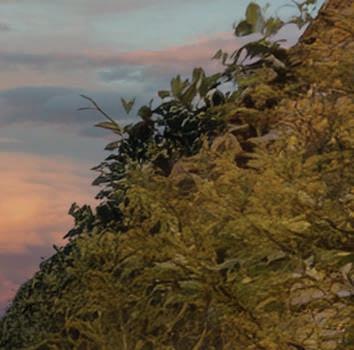







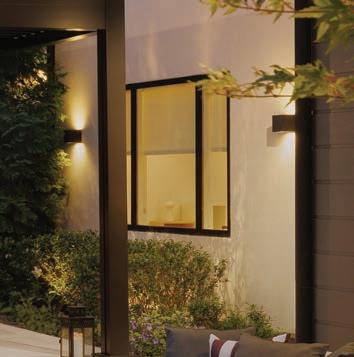










I dared not approach the green curtain of the marsh, where oysters stood vertically, guarding the pluff-mud stage. Their razorsharp, newly formed shell edges gleamed in the sunlight, a clear warning. Without realizing it, the smells and sounds of the ebbing tide became ingrained in me. If someone had asked me to describe it as a child, I might have simply said, it just feels like low tide. As an adult, I discovered the chorus of purpose, the symphony of the marsh at work. As the tide retreats, I listen for the faint clicking of oyster shells closing tightly to conserve moisture on their gills. A thin layer of viscous decay mixed with salt water settles over the fiddler-crab burrows, forming bubbles that pop audibly as gas escapes the pluff mud. Thousands of tiny legs hum as fiddler crabs move through the marsh with the rustling grass. Then, slack tide stills everything. The rhythm shifts from ebb to flow. The soft “click, plop, hmm” fades as water returns, and the oysters slowly open, slightly separating their shells as the tide brings a primordial soup of larval marine life. The oysters begin filtering the nutrient-rich water, expelling what they cannot consume in a beautiful display — thousands of tiny fountains — before the rising tide cloaks them once again.
Marsh grass traps fine silt from the water, forming the pluff-mud flats. Its hollow, bamboo-like stalks stand tall at low tide, stabilized by joints every few inches. Absorbing saltwater through its roots, the grass desalinates, excreting excess salt through its blades. A perennial, marsh grass transforms with the seasons. In spring bright green shoots emerge from the mud, thickening into an emerald field by summer. By fall, golden seed-heavy tips bow toward the water, dropping seeds to continue the cycle. In winter the stalks darken and break apart, but the roots remain, anchoring the mud flat until fresh green blades return in spring.






Customer satisfaction i s our top priority.At Old Tow n Floor ing,we recogniz e that a oorcan serve as the focal point ofany room enhancing the look and feelofan entirespace. at i s why producing ourow n oors and sourcing thebest suppliers ofthemost luxuriou s materialhas been ourgoal. We provide qualit y hardwood ooring,vinyl plank ooring andinnovative oor ing solutions with remarkable designs for ever y application!









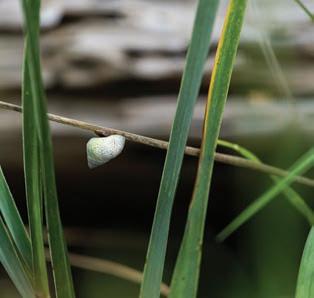
At 12, I felt invincible navigating my small motorboat on the May River. I sped across the water, feeling free — yet I never saw anything great at that speed. It was only when I idled, wary of sandbars, that the marsh revealed its secrets. In narrow tidal creeks, minnows hiding in the reeds sensed pressure from the water pushed by my boat. They leapt ahead, fleeing an unseen predator. I imagined they were welcoming me. As the creek shallowed, my paddle skimmed the bottom. Just as I turned to leave, shrimp burst from the water like a rainbow over the bow — hundreds of them, some landing on the deck, their tails popping frantically in search of water. Stunned, I felt pure joy. My spirit leapt beside me, still in awe.
Scrambling forward, I returned each shrimp to the water. The last one swam away slowly, slightly injured, but safe. I exhaled, feeling an unexpected calm, as the unseen marsh hens — clapper rails — cackled nervously in the reeds. I had never seen these elusive birds, but their calls, along with the periwinkle snails clinging to the swaying marsh grass and darting marsh wrens, were part of the marsh expression. As I exited the creek, sunlight scattered through thick salt crystals on the green blades. It was a good show.


As the tide floods the mud flats, juvenile fish, blue crabs and shrimp return to the vast, protective acreage of marsh grass to hide from predators. Beaufort County holds more of this precious habitat than anywhere else — over 200,000 acres of Spartina alterniflora (recently reclassified as Sporobolus alterniflorus, though we’ll lovingly ignore that terrible new name).
As the day ends, the sun sinks into the salt marsh. Golden light stretches across the reeds, and the last direct rays pierce the Spanish moss hanging from the live oaks. Patterns of light dance on the pine straw, shifting with the breeze. The cicadas, no longer hesitant, begin their evening chorus. Tilting my head back, I hear their deafening song fully. Looking forward, the sound flows over my head, slightly muted. Discovering this trick delighted me — another simple moment of unexpected joy. Walking home along the bluff to my great-grandmother’s house, a neighbor “blessed my heart,” wondering why I was bobbing my head back and forth so strangely. Gramma Sue smiled. Her feet are bare. She is beside herself. And together, they are enjoying the performance. LL







STORY BY AMBER KUEHN
sSporobolus alterniflorus, commonly known as smooth cordgrass or marsh grass, is a perennial plant that marks the changing seasons in the Lowcountry. Its blades shift from emerald green in summer to amber in fall, eventually turning brown in winter. As marsh grass dies back, the brown reeds break away, carried off by the rising tide to make way for new growth — an essential cycle that sustains the marsh ecosystem.



When the tide flows inland after slack tide, offshore wrack accumulates in front of Hilton Head beaches. The surf tumbles these bundles before depositing them at the highest tide mark. Wrack formations on the beach align parallel to the shoreline, forming distinct north-south lines. The precise location of these deposits depends on the phase of the moon:
Spring tide: A full moon event deposits wrack closer to the dunes.
King tide: When the gravitational pull of the sun and moon align, marsh grass from the farthest reaches of the wetland is swept to shore, creating larger wrack deposits even closer to the dunes.




The ebbing tide and coastal winds transport large bundles of dead reeds out of Lowcountry waterways, past boats in Calibogue Sound and, eventually into the ocean. These floating reeds, known as wrack, begin to decompose. Up close, wrack appears fuzzy with detritus — tiny bits of decayed plant matter that serve as a food source for small marine organisms.

















At times, thick accumulations of wrack form small natural barriers along the beach. While some may see this as debris, wrack plays a crucial role in dune formation. The spaces between reeds trap windblown sand, laying the foundation for new dunes. Over time, layers of sand cover the wrack, and nutrients from the decaying reeds nourish sea oats and other vegetation. These plants take root, stabilizing the dunes and reducing erosion.

To counteract the impact of foot traffic, the Town installs sand fencing to trap sand and facilitate dune growth. These fences are strategically placed in a “V” shape for two key reasons:
1. To protect sea turtles: Gaps in the fencing allow turtles to exit safely after nesting. If a turtle encounters the fence, the angled design guides her toward the water.
2. To enhance sand accumulation: The “V” shape increases sand capture at its angle, helping dunes form more efficiently.
As soon as a noticeable mound develops, vegetation is planted to reinforce dune stability.

Strong dunes provide critical habitat for wildlife, including nesting endangered loggerhead sea turtles and ghost crabs that burrow in the sand. Dunes serve as the first line of defense for Hilton Head’s barrier island during storms. Unfortunately, natural dune formation is hindered by human activity. Hilton Head Island, often named “America’s Favorite Island,” welcomes about 3 million visitors annually.
Signs remind beachgoers to stay off the dunes, as even a single footpath can disrupt this fragile ecosystem. It is illegal to remove or cut dune vegetation, and maintaining these areas is essential for Hilton Head’s longterm coastal resilience.
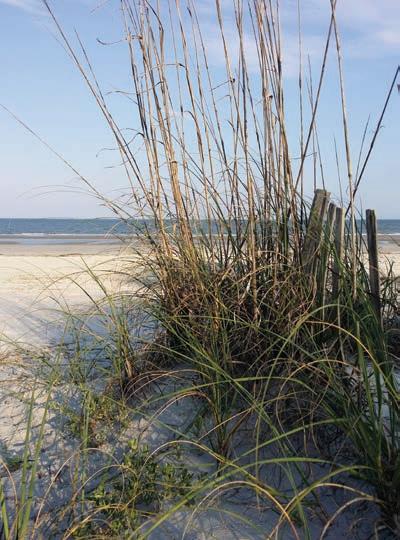
Now that you know these fences are not barriers to dunes but rather tools to build them, please keep personal belongings like bikes, chairs and towels away from them. Being a good steward of the beach reflects Hilton Head Island’s commitment to protecting natural resources and ensuring environmental sustainability. LL

As the official real estate company for Palmetto Bluff, we are dedicated
With
listings, and insider knowledge of upcoming amenities and neighborhoods, we
of
and insight you won’t find anywhere else. Contact us today to start your home journey at the Bluff.

STORY BY AMBER KUEHN

tThe Port Royal area watershed in Beaufort County is unique, boasting more marsh grass in its marine (saltwater) watershed than any other county in the United States.
Affectionately called the "Nursery of the Ocean," it encompasses 200,000
acres of marsh grass, flooded twice daily by the tides — the "Rhythm of the South." Each tidal cycle in Beaufort County lasts approximately 6 hours, 12 minutes, and 23 seconds, comprising two high and two low tides over a total of 24 hours, 49 minutes,
and 32 seconds. This slight extension beyond 24 hours causes a daily delay of 49 minutes and 32 seconds. While the duration of this rhythm remains constant, the volume and speed vary with the moon's phase and related gravitational pull. Within each interval,
TIDAL THREADS The Port Royal Sound area encompasses a vast network of interconnected tidal embayments, each playing a vital role in shaping its unique marine watershed. Expansive stretches of salt marsh weave through the region, forming a dynamic and intricate aquatic ecosystem.

water flows faster in the middle of the tidal swing, slower at the beginning and end, and pauses during slack tide before changing direction. This pattern resembles a musical score with a 49-minute, 32-second encore. Although the timing of the tides shifts daily, it is predictable years in advance.





























Coastal vibes with XCVI are all about embracing comfort and style inspired by the sea. Think breezy fabrics, relaxed silhouettes, and earthy tones that reflect the beauty of coastal living.







At high tide, saltwater connects the marsh fields to deeper channels, providing juvenile marine life refuge from predators among the submerged marsh reeds. This creates a game of hide and seek where predators are at a significant disadvantage. Dolphins, for instance, are not typically seen swimming through marsh grass in search of prey at high tide. Instead, they seem to socialize until the low-tide "dinner bell" rings. Dolphins are intelligent and understand that the small fish they consume must follow the receding water, moving away from the safety of the marsh grass with the ebbing tide. These juvenile fish, along with sub-adult blue crabs, shrimp, and others, tend to congregate near the edge of the mudflat, where dolphins patrol a "buffet line." Locals often use cast nets at low tide to catch bait, small shrimp and minnows. If invited to go crabbing with string and raw chicken, plan for low tide as well. Wading birds stand very still as they hunt in the shallow areas of the waterway at low tide, just outside the nursery. The rhythm of the tide dictates the intensity of predation. High-tide flooding of the marsh enhances juvenile seafood survivability, allowing them to grow large enough to be excluded from some predators' menus.






In the shallow fingers of the Lowcountry waterways, water temperature rises with air temperature. In August surface water temperatures can reach 98 degrees, creating a warm, cozy blanket in the Nursery of the Ocean. Larval organisms are microscopic, numbering in the millions. One blue crab can produce 2 to 8 million larvae, with only one in a million surviving to maturity; the rest become food for other developing organisms in the nursery that are slightly larger. The nursery provides ample food, as various developmental stages offer a range of food sizes, making them all snacks for each other.

SHORELINE STRATEGY Bottlenose dolphins exhibit a unique hunting behavior known as strand feeding, particularly observed along the mudflats of South Carolina and Georgia. During low tide small groups of dolphins collaborate to herd schools of fish toward the shoreline. They then create a wave that propels both the fish and themselves onto the muddy banks. The dolphins quickly consume the stranded prey before sliding back into the water.

A LIVING FILTER A thriving Lowcountry mudflat, where marsh grass, oysters and fiddler crabs work in harmony to sustain a pristine coastal ecosystem, serves as nature’s filtration system — purifying the waterways while providing vital habitat for countless marine species in the Nursery of the Ocean.
Recognizing that natural processes build upon each other is enlightening. The environment is a web of interdependence. The mudflat is formed by silt collected from the water by marsh grass and held together by its roots. Bacteria within the mudflat process decayed matter to cleanse the waterway. Fiddler crabs living in the mudflat release resulting gases and scour the surface. The marsh is bordered by oysters, each filtering 50 gallons of water daily. The tide flushes the Lowcountry waterways twice daily. Despite limited light penetration, the Lowcountry waterway is considered pristine. Although the water appears dark green due to trillions of larval microorganisms blocking sunlight, it is crystal clear upon close inspection, teeming with life in the Nursery of the Ocean. This story begins with the marsh grass. LL
















STORY BY BAILEY GILLIAM + PHOTOGRAPHY BY MARY ALICE TARTLER

LISTEN UP
Scan this QR code to hear the call of the Baltimore

LONG-DISTANCE TRAVELERS Baltimore orioles are migratory, traveling thousands of miles between their breeding grounds in eastern and central North America, including southern Canada and the eastern U.S., and their wintering sites in Mexico, Central America and northern South America. The Lowcountry serves as an important stopover point during migration, where these striking birds refuel on nectar, fruit and insects before continuing their journey.
tThe Baltimore oriole isn’t just a striking bird — it’s a living emblem of Maryland, proudly wearing the same bold orange and black as the heraldic crest of England’s Baltimore family. This colorful songbird is the official state bird, the inspiration behind the Baltimore Orioles baseball team and a cherished symbol of Maryland’s culture and identity. But beyond its deep ties to the state, the Baltimore oriole is a fascinating creature with a colorful, acrobatic lifestyle that captivates bird lovers across the country — even those living far to the south. For bird watchers in the Lowcountry, spotting a Baltimore oriole is a rare and thrilling event. Their fiery plumage can occasionally be spotted during migration: in spring (late March through early May) as they journey north to their breeding grounds, and again in fall (late August through October) as they return south for winter. Though their presence is fleeting, the anticipation of catching a glimpse of these dazzling birds makes the wait worthwhile.
Baltimore orioles are graceful, high-energy foragers, darting through treetops in search of their favorite foods: ripe fruit, nectar and insects. They flit effortlessly between branches, sometimes hanging upside down to pluck insects from leaves or sip nectar from flowers. With their slender, pointed beaks, they use an unusual feeding technique called "gaping"— piercing soft fruit, then slicing it open to lap up the juice with their brush-tipped tongues.
These birds are also notoriously picky eaters, favoring only the deepest, ripest hues of fruit — the darkest mulberries, the richest cherries and the deepest-purple grapes — ignoring anything pale, even if it’s fully ripe. In spring and fall they gorge on nectar and fruit to fuel their long migrations, while in summer their diet shifts to insects to nourish their growing young. Whether flitting between tree branches or visiting backyard feeders, the Baltimore oriole is a flash of brilliant orange against the greenery, always on the hunt for its next sweet indulgence.
Inviting Baltimore orioles into your yard can be a rewarding experience, though it requires a bit of effort. Local birder Mary Alice Tartler shares her top tips for enticing these beauties to your feeders:
"Provide food they love, like orange halves placed on a platform or hung from a tree," Tartler said. "Offer nectar-rich flowers or feeders with native trumpet vines, honeysuckles or coral bells. They also enjoy berries, cherries and grapes, and many are drawn to suet, especially during migration. Be sure to provide a shallow dish of fresh water with twigs or rocks for perching while drinking. Like most birds, Baltimore orioles love to bathe, so a birdbath, fountain or mister will help keep them coming back. They prefer mid- to high-level perches in trees such as oak, maple, and elm, which offer additional food and shelter. Good luck attracting these stunning birds!"


Get everything you could possibly need for your backyard birding needs at Wild Birds Unlimited at the Festival Centre at Indigo Park on Hilton Head Island.
FOOD & ACCESSORIES
• Oriole feeder
• Fresh fruit (oranges, grapes and other juicy fruits)
• Jelly
• Hummingbird & oriole nectar
• Sugar water
• Mealworms








STORY + PHOTOGRAPHY BY GWEN CALLAS-MILLER

Our Lowcountry wetlands and coastal waters provide rich habitats that attract a diverse array of wading birds during their annual nesting season. Wading birds typically nest in colonies, primarily selecting areas that offer safety and an abundance of food. The density of these colonies ensures more eyes are on alert to help protect nests from predators. A colony of nesting birds is known as a rookery.
Part of the excitement of nesting season is watching as the rookery transforms into a bustling neighborhood, with different parent species engaged in a flurry of mating behaviors, nest building, territorial spats and childcare — continuing until they become empty nesters. With a few exceptions, nesting season for wading birds in the Lowcountry typically runs from mid-March to mid-October.
The wading birds frequently found in our local rookeries include great egrets, snowy egrets, little blue herons, tricolored herons, black-crowned and yellow-crowned night herons, green herons, white ibises and wood storks. Roseate spoonbills have become increasingly common in the Lowcountry in recent years, much to the delight of birdwatchers who admire their striking pink color. Great blue herons often prefer nesting in colonies with other great blues rather than in multi-species rookeries.
Two well-known rookeries in Beaufort County are Cypress Wetlands in Port Royal and Pinckney Island National Wildlife Refuge. Both are surrounded by water, creating a natural safety buffer against predators such as raccoons, snakes and rats. One key factor in the success of these rookeries is the presence of alligators. While alligators occasionally seize the opportunity to snatch an unfortunate wading parent or fallen nestling, their presence helps protect the rookery by deterring many predators that prey on eggs and chicks.
Over the next few pages, you'll discover useful insights for identifying common wading-bird species and understanding their nesting habits.
Great egrets are known for their long legs, S-shaped necks and striking mating plumage. During the spring mating season, they develop delicate, lacy plumes called aigrettes. Their lores — the area between their eyes and bills — turn from olive-yellow to a bright green. The male performs an intricate mating dance, fanning his plumes and lifting his bill skyward.
Great egrets select a new mate each year. The male chooses the nest location, and the pair works together to build a somewhat flimsy nest of stems, sticks and twigs. The female typically lays three to four pale blue-green eggs, which incubate for about 23 to 27 days. Both parents take turns incubating the eggs and feeding their young. The offspring are usually ready to fly in six to seven weeks.
Like many other birds, great egrets were nearly wiped out in the 1800s when they were hunted for their long, lush feathers, which were highly sought after for adorning hats and clothing. At the time, their plumes were valued at twice the price of gold. Fortunately, protective laws were enacted, allowing their population to recover. Today the Lowcountry is graced with a thriving population of these elegant birds.
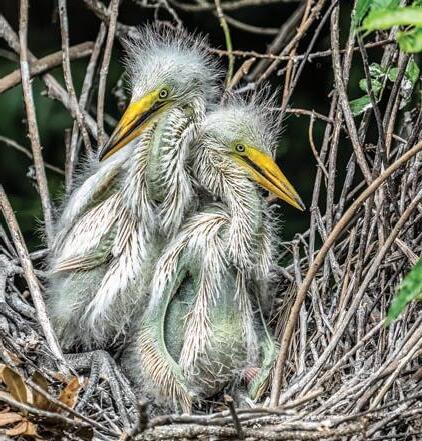

Snowy egrets are medium-sized birds with big personalities. Their most recognizable feature is their bright yellow feet, often called “golden slippers.” Social by nature, snowy egrets forage well alongside other egrets and herons but are also highly vocal, especially when competing for nesting sites and mates. During mating season, the lores — the colored patch between their eyes and beak — change from bright yellow to a deep reddish hue, and their yellow feet darken slightly.
The male snowy egret begins building a nest before securing a mate. His courtship display is both loud and dramatic, involving body pumping with his bill pointed skyward, aerial tumbling and quick turns. Once he attracts a female, she completes the nest using materials he provides. Snowy egrets typically lay two to six pale greenish-blue eggs, which incubate for about 25 days.
It is believed that snowy egrets do not recognize their mates outside of their nesting site. To confirm their partner’s identity, they perform an elaborate greeting ritual upon returning to the nest. Both parents take turns incubating the eggs, with the incoming parent often presenting a stick to the other during shift changes. On rare occasions snowy egrets have been known to mate with other species, such as tricolored herons, little blue herons and cattle egrets, producing hybrid offspring.















Great blue herons are the most recognizable of the heron species and are commonly seen due to their adaptability to various habitats. Their overall coloration is grayish-blue, with a distinctive wide black stripe over the eye that blends into blue head plumes. They also have a striking yellow, dagger-like bill.
As the tallest heron species in North America, great blue herons stand at an impressive 4 1/2 feet tall with a wingspan of over 6 1/2 feet. Despite their large size, they weigh only 5–6 pounds due to their hollow bone structure. Their adaptable diet allows them to thrive in a wide range of waterways, ecosystems and climates, including swamps, marshes, rivers and lakes.
Great blue herons often breed in colonies with others of their species but may also nest in multi-species rookeries. The male selects a nesting site and performs a mating display to attract a partner. Once paired, both parents take turns incubating their three to six pale blue eggs for 25–30 days. The young take about 60 days to fledge.
Unique among birds, great blue herons have specialized “bib” feathers on their chest that grow continuously and never molt. Using their middle toe, they comb these feathers into a fine, talcum-like powder, which they then use to preen and groom their entire body. This powder absorbs fish oil and other debris and is believed to help condition their feathers.

Standing about 25 inches tall, tricolored herons are larger than snowy egrets but smaller than great blue herons. Their name comes from their unique coloration, which features varying shades of bluish-gray, lavender along the neck and pure white on the chest and belly. The flash of white on their underside helps distinguish them in a rookery where multiple species are present. During mating season their lores turn a striking cobalt blue, and their legs change from yellow to a pinkish-red hue.
The male selects the nesting site and gathers sticks, twigs and grasses, which the female uses to build the nest. She typically lays three to five pale greenish-blue eggs, which hatch in about 21–25 days. Both parents take turns bringing food to the nestlings. The chicks grow quickly and remain in the nest for just over a month.
Tricolored herons are often seen foraging in the shallow waters of swamps and other waterways. They are known for their energetic hunting style, which includes pirouettes, sharp turns and sudden stops as they pursue fish and crustaceans. They may also use a technique called "canopy feeding," where they form an umbrella with their wings to create a shaded area that lures fish into striking range.









Little blue herons undergo a dramatic transformation from juvenile to adult. As adults, they are a striking grayish-blue with deep purple tones on the head and neck. Their legs are green, and they have a blue-gray bill with a dark tip. However, as nestlings and juveniles, little blue herons are entirely white, with tiny dark tips on their outer wings. At this stage, they are often mistaken for juvenile snowy egrets. The best way to differentiate them is by examining their bills and legs: little blue herons have a thicker gray-black bill and dull green legs, while juvenile snowy egrets have a thinner yellow-green bill and black legs.
Once paired for mating, the male gathers materials for the female to build their nest. A typical clutch consists of three to four pale bluish-green eggs, which incubate for approximately 22 days. During the nesting phase you might observe what appears to be an intense struggle between parent and young. Nestlings instinctively grab onto the parent's bill, triggering regurgitation of food. As the chicks grow larger and stronger, feeding can become a challenge for the parent, as one wrong move could result in injury. Nestlings remain dependent on both parents for about six weeks.
In their second year of life, little blue herons display a striking calico pattern of white and blue as they transition from their juvenile plumage to adult coloration. By their third year they have fully developed their distinctive blue hues.








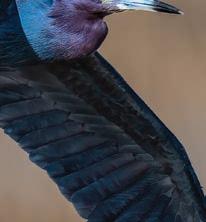



they can raise their crown feathers into a crest.
Green herons have a stocky build and reach about 16 inches in length, roughly the size of a crow. From a distance they appear dark, but in the right light their striking colors are revealed — a blue-green back and head, a reddish-brown neck and chest and soft gray wings with a cream-colored pattern. When threatened, they can raise their crown feathers into a crest.
onto the water’s surface to lure small fish, then swiftly spear or
Green herons are clever hunters and one of the few bird species known to use tools to fish. They drop insects or feathers onto the water’s surface to lure small fish, then swiftly spear or snatch them with their sharp bill. When not hunting, they tend to remain hidden within dense vegetation.
These herons nest in a variety of locations, often choosing tree. While they generally prefer to nest away from other birds,

These herons nest in a variety of locations, often choosing shrubs or trees positioned over water. Nests can be built anywhere from ground level to more than 30 feet high in a tree. While they generally prefer to nest away from other birds, they may occasionally join colonies of their own species or other waders. The male selects the nesting site and begins construction to attract a mate. Once paired, he continues gathering sticks, passing them to the female as she arranges the nest to her liking.

The female typically lays two to five pale green eggs which hatch after 19-21 days. Nestlings remain in the nest for about 16 days, receiving food from both parents before fledging. Even after leaving the nest, young green herons often stay near their parents for several weeks as they learn to hunt.
The female typically lays two to five pale green eggs which after leaving the nest, young green herons often stay near their






Beautiful Stately Home overlooking double fairway and lagoon views of the private Golf Club of Indigo Run. This custom-built home has a very sophisticated exterior elevation with its use of brick and stucco. This spacious design offers 4 bed\4 full baths and 2 half baths, plus a bonus room and study. Formal Living\Dining room with Heart of Pine floors and walls of windows, Chef’s kitchen with top-of-the-line appliances and Butlers pantry opening to a large family room. Private Primary suite with updated bathroom. Lush landscaping, screen porch and large patio and a 3-car garage. This unique home is a must see.





Join the owners of Wild Birds Unlimited Hilton Head for every aspect of backyard birding. From equipment and outings, to solutions and resources.
Baltimore Orioles enjoy berries, cherries and grapes, and many are drawn to suet, especially during migration. Be sure to provide a shallow dish of fresh water with twigs or rocks for perching while drinking.



The wood stork is second only to the great blue heron in size and is the only native stork species in North America. Standing just over three feet tall with a five-foot wingspan, it is a striking presence in coastal wetlands. Its dominant plumage is white with black wingtips, and its unfeathered, scaly-looking head is one of its most distinctive and recognizable features. Wood storks can live long lives, with the oldest banded bird recorded at over 22 years.
YEARS CELEBRATING OF SAVING SONGBIRDS




Once classified as endangered, wood storks were moved to the protected list about a decade ago. However, many conservationists believe their survival remains a concern. They historically nested primarily in Florida, but agricultural expansion and changing rainfall patterns forced them to expand their range into the coastal marshes of the Carolinas, Georgia and Alabama. In recent years the number of mating pairs in our area has grown, and they can be seen building nests in the tops of rookery shrubs at Port Royal’s Cypress Wetlands, among other locations.
Though physically large, wood storks are mild-mannered and make excellent neighbors. They are devoted mates and parents and rarely engage in territorial conflicts. They typically raise a single brood each year, consisting of two to four nestlings. The female lays three to five pale cream-colored eggs, and both parents share incubation duties for about 30 days. While heron species generally fledge in 30-45 days, wood stork hatchlings remain with their parents for approximately 55 days.
On particularly hot days, observant birdwatchers may spot a parent regurgitating water over its chicks or shading them with its wings to keep them cool. Nestlings are highly vocal and active, but as they mature and leave the nest, they lose their ability to vocalize. The loud cries of their youth are gradually replaced by soft hissing and grunting sounds.
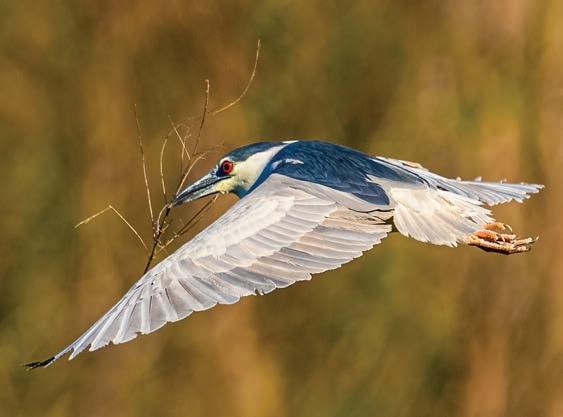
We are fortunate to have both black-crowned and yellowcrowned night herons in our area. While they sometimes nest among other species, they often prefer colonies of their own. You can find them nesting in groups high up in large trees, typically 30 feet or higher. These herons are territorial and will readily defend their nests.
Both species typically lay two to five eggs, which incubate for around 24 days. As with many bird species, the eggs hatch at different times, resulting in noticeable size differences among the nestlings. The smallest of the clutch often struggles to compete with its larger siblings for food.
While adult yellow-crowned and black-crowned night herons are easy to distinguish, their immature forms share similar coloring and can be difficult to tell apart. A key identifier is the bill: juvenile yellow-crowned night herons have a thick black bill, whereas black-crowned juveniles have a bill with yellow and black tones, which gradually turns completely black as they mature.
Yellow-crowned night herons stand about two feet tall with a somewhat stocky, compact build. They have short legs and relatively large heads. Adults have a primarily soft gray body and are best identified by their black head with a white cheek patch and a yellow "crown" with plumes on top of their head. Juveniles are brown with white spots on their backs and wings.
The male black-crowned night heron initiates the nest-building process. Once he finds a mate, he continues collecting materials and passes them to the female, who arranges them into place. Interestingly, black-crowned night heron parents have been known to raise chicks of other species in their nests, apparently failing to recognize the difference. Young black-crowned night herons leave the nest at around one month old but require another two weeks before they can fly. In the meantime, they move through the vegetation on foot, foraging for food.




Though still fewer in number compared to other wading birds nesting in the Lowcountry, the stunning Roseate Spoonbill — with its hot pink plumage, dark red eyes and partly bald head — has become a more frequent sight in recent years. Before this, spoonbills that made their way to our area were mostly errant juveniles or a few post-breeding wanderers.
Roseate spoonbills are considered the spoonbill species of the Americas, found from the southeastern U.S. to central Argentina. It is believed that their range is shifting northward due to climate change.
There are six species of spoonbills worldwide, and all but the roseate are white. They get their name from their distinctive, flat, kitchen tong-like bill, which they sweep side to side in the water while hunting for small fish and crustaceans. Like flamingos, their pink coloration comes from their diet. While their long legs, body shape and partly bald head resemble those of a wood stork, they are more closely related to ibises.
Spoonbills nest in rookeries alongside other wading bird species, with both the male and female sharing parenting duties. The female builds the nest with materials provided by the male and lays two to three white eggs speckled with brown. Both parents take turns incubating the eggs for about 23 days. After hatching, they continue to feed the young, which fledge roughly five to seven weeks later. Interestingly, spoonbill chicks are not born with their characteristic flat bills — this distinctive shape fully develops by about six weeks of age.


White ibises are highly social birds that prefer to travel in flocks. They often forage and nest in the same areas as herons and egrets, but their nesting cycle begins as those species are in their final stages.
During courtship, males attract a mate with an elaborate display of head shaking and preening. The final step in mate selection is surprisingly aggressive — the male grabs and shakes the female by the head. Fortunately, the rest of their bonding process is more cordial, involving mutual preening and the exchange of sticks when they greet each other. Males become highly protective of both the nest and their mate, aggressively defending against other birds attempting to steal nesting materials or make advances toward their partner.
Parenting is a shared responsibility, with both the male and female incubating their two to four dull white, mottled brown eggs. The chicks leave the nest between five and eight weeks of age but remain in the colony until they are capable of foraging and fending for themselves.
White ibises undergo a dramatic color transformation over their first two to three years. As nestlings, they are dark brown with brown eyes and an orange bill with brown stripes. As they mature, their plumage becomes mottled brown and white. By adulthood they are entirely white except for their black-tipped wings, their striking blue eyes, a red bill and pinkish-red legs. LL



“There are no strangers here. Only friends you haven’t yet met”—William Butler Yeats
We invite you to discover the robust lifestyle at Hampton Hall.
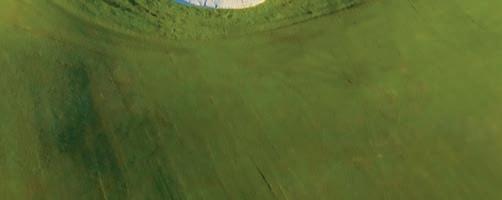







The salt marshes of the Lowcountry are teeming with diverse wildlife, from tiny invertebrates to apex predators. Here’s a look at some of the fascinating animals that call these coastal wetlands home.

Marsh periwinkle snails: Often seen clinging to cordgrass, these small snails feed on algae and help regulate the growth of marsh vegetation.
Blue crabs: A staple of the Lowcountry seafood scene, blue crabs thrive in the brackish waters of the marsh.
Fiddler crabs: Recognizable by their oversized claws, these tiny crabs scuttle across the mudflats, digging burrows and playing a key role in the marsh ecosystem.
Shrimp: Essential to both the ecosystem and the local economy, these shrimp species (white, brown and pink) use the salt marsh as a nursery before heading out to deeper waters.

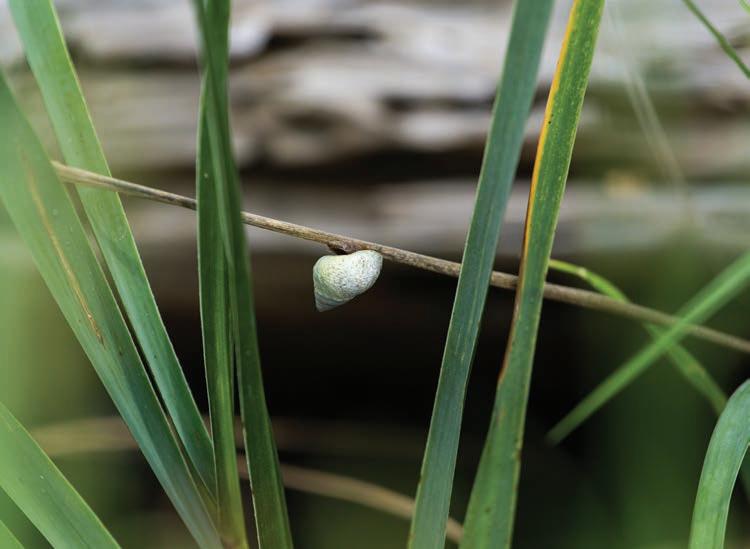

Clapper rails: A secretive marsh bird that blends into the reeds and is more often heard than seen.
Great blue herons: This majestic wading bird hunts along the marsh edges, stalking fish and amphibians.
Snowy and great egrets: These elegant white birds are commonly seen standing motionless before striking at unsuspecting fish.
Brown pelicans: Often spotted gliding over the water, diving for fish or resting on docks.
Osprey: Known as the "fish hawk," this raptor dives into the water to catch fish with incredible precision.


Diamondback terrapin: A unique turtle species that thrives in the brackish waters of the salt marsh.
American alligator: Though more commonly associated with freshwater, alligators are often spotted in brackish marsh areas. Green anoles: These small, color-changing lizards can be found clinging to marsh vegetation.

Otters: Playful and agile, river otters navigate the marsh creeks in search of fish and crustaceans.
Atlantic bottlenose dolphin: These intelligent marine mammals are often seen in the tidal creeks, sometimes engaging in "strand feeding," a unique hunting behavior.
Marsh rice rat: A small nocturnal rodent that forages among the tall grasses.
Raccoons: Adaptable and opportunistic, raccoons forage for shellfish and other marsh delicacies.
Marsh rabbits: These salt marsh-dwelling rabbits are smaller than their woodland relatives, with darker fur that helps them blend into the reeds.

Speckled trout: Often found in the creeks and estuaries, this game fish is prized for its striking spots and delicious flavor.
Redfish: A favorite of anglers, redfish rely on the marsh for food and shelter, especially in their juvenile stages.
Mullet: Frequently seen leaping out of the water, these fish are a primary food source for many marsh predators.
Flounder: Their flat bodies and camouflaged coloration allow them to blend into the marsh bottom while they ambush prey. LL






Outstanding Gifts at Unbelievable Prices. Gorgeous Free Giftwrap Always. Thank You for Shopping Local!




STORY BY BAILEY GILLIAM + PHOTOS BY JEANNE PADDISON
sSkunks have long been defined by their notorious ability to release a noxious spray, often evoking fear and unease in those who cross their path. However, as Jeanne Paddison, executive director of the Savannah Wildlife Rescue Center (SWRC), points out, these creatures are far more misunderstood than their pungent reputation suggests.
“They’re incredibly gentle, non-confrontational animals,” Paddison explains. Contrary to popular belief, their first instinct isn’t to spray but to warn potential threats by stamping their front feet. Only when they feel truly endangered do they unleash their defensive weapon. "They don’t want to spray anybody," she says. "Once they spray, they’re vulnerable for about 10 days until their body produces another supply.”
Few stories embody the resilience of wildlife quite like that of Eddie, a skunk whose life took a devastating turn before finding sanctuary at SWRC. Rescued from a catastrophic accident north of Atlanta, Eddie’s injuries were severe — yet his spirit remained unbroken.
"He had been run over by a bush hog and needed multiple surgeries," recalls Paddison. "A compound fracture in his back right leg, a broken upper jaw, five teeth pulled, his jaw realigned, a crushed septum and a deep slice from his nose to his ear that went into his nasal cavity, leaving him unable to eat on his own. His back was so badly damaged that you could see his intestines. We had to perform surgery after surgery, gradually bringing the skin closer together."
Despite the overwhelming odds, Eddie’s determination to survive was undeniable.
"We should have euthanized him," Paddison admits. "But we didn’t — because this animal had more will to live than you could imagine. Skunks have much more to offer than we give them credit for.”


A STORY OF SURVIVAL Eddie’s journey to SWRC began with tragedy — run over by a bush hog, he suffered severe injuries. Despite overwhelming odds, his will to survive was undeniable. The SWRC team performed multiple surgeries, slowly restoring his health. Though he could never return to the wild, Eddie found a new purpose as an educational ambassador, helping to dispel myths about skunks.

THREE LITTLE FORAGERS Pictured are Hunny, Bunny and Sunny, three skunks that were rehabilitated at the Savannah Wildlife Rescue Center. These curious foragers enjoy a varied diet, feasting on insects, fruits, berries, eggs and the occasional small rodent, making them important contributors to pest control in the wild.
Eddie not only survived but thrived, though his injuries meant he could never return to the wild. Instead, he found a new purpose as an educational ambassador at SWRC, joining Olive the opossum in teaching the public about the importance of wildlife rehabilitation.
Last year Eddie passed away, surrounded by those who had cared for and loved him. His story stands as a powerful testament to the resilience of skunks — and the unwavering dedication of rehabilitators like Paddison, who fight for second chances when the world has given up.
Despite their infamous spray, skunks are often misunderstood.
“The fear of getting sprayed leads to panicked calls and overreactions,” Paddison explains. In reality, skunks rarely resort to their defensive spray unless they feel genuinely threatened. “They’re extremely vulnerable — poor eyesight, slow-moving,” she adds. “They prefer to avoid conflict rather than create it.”





















Three young skunks — fittingly named Ready, Aim and Fire — perfectly illustrate the classic tail-raising warning skunks often give before releasing their notorious spray.
While many (literally) turn up their noses at skunks, these nocturnal foragers provide an invaluable service: natural pest control. Skunks help keep insect and rodent populations in check, reducing the need for chemical pesticides and offering a surprising benefit to homeowners. Their diet includes beetles, grubs, wasps, mice and other common pests that can wreak havoc in gardens and yards. “They’re doing us a service,” Paddison points out. “We should really appreciate them for that.”
Skunks may have a bad reputation, but these shy, nocturnal creatures are more interested in avoiding conflict than causing trouble. Knowing how to handle skunk encounters can prevent unnecessary panic — and unwanted sprays.
Don’t panic if you see a skunk during the day. Skunks may be active in daylight for various reasons, such as feeding their young or foraging in areas where food — like pet food or trash — is easily accessible. “Skunks are sometimes out during the day, especially when people leave out pet food,” Paddison explains. “This behavior alone is not a cause for alarm.”
Back away slowly. If you find yourself close to a skunk, stay calm and retreat quietly. “Skunks will give you ample warning if they feel threatened,” Paddison advises. Signs to watch for include foot-stamping, tail-raising, hissing and a slight forward charge. “If you see these signals, simply back away slowly and quietly.” Skunks are not naturally aggressive and will often move away if given the chance.
Be patient with unwanted guests. If a skunk has taken up residence under your deck or shed, resist the urge to take immediate action. “Skunks will leave once their young are old enough,” Paddison explains. The best approach is to wait for them to vacate, then seal off entry points to prevent future visitors. Attempting to trap them can lead to orphaned young left behind, making it a far more harmful solution than simply waiting them out. LL

KEEP YOUR PAWS TO YOURSELF Don’t let his adorable face fool you — this little skunk, named Stinker, comes with a powerful defense. To avoid a smelly surprise, keep dogs leashed or supervised at night, as skunks are most active after dark and won’t hesitate to spray if they feel threatened.
Curious dogs often get a little too close to skunks — and end up paying the price. If your pup comes bounding inside reeking of skunk spray, don’t panic. While a tomato juice bath is a well-known remedy, it only masks the odor rather than neutralizing it. For a more effective solution, try this proven formula from the Savannah Wildlife Rescue Center — it breaks down the odor-causing compounds, eliminating the stench instead of just covering it up. If your dog gets sprayed in the face, be prepared for some lingering bad breath!
INGREDIENTS:
1 quart hydrogen peroxide 1/4 cup baking soda 1 teaspoon liquid dish soap






DIRECTIONS [1] In a large bowl, mix the hydrogen peroxide, baking soda, and liquid dish soap. [2] Using a washcloth, apply the solution to the affected area. Let it sit briefly before rinsing thoroughly. [3] Follow up with a regular shampoo bath for your pet (or anything else that got sprayed).





















If you find an injured or orphaned skunk, contact one of these organizations for help: Savannah Wildlife Rescue Center: 912-596-1237
Paws Animal Wildlife Sanctuary: 864-683-3190
Tiffany VanBlaricum: 843-422-2654

Have you been told there is NOTHING to do about your neuropathy? We have ANSWERS.
Dr. Ken’s NON-INVASIVE Neuropathy Relief Program has helped many in Beaufort County restore their bodies.
His promise to you is to recommend the BEST treatment option, morally, ethically, and physically to help you reach your goals.
PATIENT STORY:
“For years I had been developing tingling and stinging in my toes. It was just getting worse and worse. I was only sleeping 2-3 hours a night. I knew I had to do something about it. I can’t be more pleased with the results I have. The stinging is gone, and I can sleep 6 hours! My only regret was not meeting Dr. Ken 12 years earlier.” – Jim C.









With sunshine, sea air and blooming beauty, this month is made for the outdoors.
aApril in the Lowcountry welcomes spring in full bloom — mild mornings, sunlit afternoons and refreshing sea breezes. Highs in the 70s and lows in the 50s create ideal conditions for beach walks, boat days, golf rounds and backyard gatherings. Azaleas, dogwoods and wisteria add bursts of color, while Easter festivities, peak garden season and the iconic RBC Heritage golf tournament invite outdoor adventures. Fittingly, April’s name comes from the Latin aperire, meaning "to open," as nature fully awakens. With insights from the 2025 Old Farmer’s Almanac and Grow Great Vegetables South Carolina, here’s your guide to making the most of the season.
April in the Lowcountry ushers in warmer days with occasional spring showers. This year’s forecast predicts above-average temperatures with rainfall staying close to normal.
Average temperature: 67 degrees (3° above average)
Precipitation: 2 1/2 inches (1 inch below average)
FORECAST BY WEEK
April 1-7: Rainy periods, warm
April 8-11: Sunny, cool
April 12-18: Sunny, warm
April 19-30: Isolated thunderstorms; cool, then warm

April’s night sky shines with celestial wonders.
April 13: This month’s full moon, also known as the Egg Moon, will light up the sky.
April 21: Mercury reaches its greatest western elongation, making it more visible before sunrise.
April 22-23: The Lyrid meteor shower peaks, with up to 20 meteors per hour streaking across the sky.
April 27: A new moon brings darker skies — ideal for stargazing and spotting faint constellations.

Stay in sync with the rhythms of the Lowcountry coast. Scan this QR code for the latest tide and current predictions from NOAA.

With each day, the Lowcountry enjoys more sunlight, a perfect prelude to summer’s heat.

Sunrise: 6:35 a.m.-7:09 a.m. (earlier each morning)
Sunset: 7:44 p.m.-8:04 p.m. (later each day)

PREP Tend to indoor seedlings, install stakes for peas and pole beans, weed and thin greens and root vegetables, hill up potatoes, and mulch to retain moisture and control weeds. Set up drip irrigation for efficient watering and weed perennials, as needed.
PLANT As temperatures rise, it’s time for serious garden center shopping and planting. Indoors: Begin hardening off tomatoes, peppers, eggplants and celery 1-2 weeks before transplanting. Pot up lettuce and any remaining tomatoes, peppers and eggplants into larger containers. Outdoors: Sow cantaloupes and watermelons, along with replacement tomatoes and flowers. Planting by bloom and soil temperature ensures optimal growth for warm-season crops. When lilacs bloom, it's time to direct sow snap beans, cucumbers, sunflowers, edamame and sesame. As the soil warms to 65 degrees, peanuts, lima beans and sweet corn can be sown. Once it reaches 70 degrees, southern peas, squash and watermelon can go into the ground. Finally, at 75 degrees, it's safe to sow okra, cantaloupes and sweet potatoes. Transplants: Set out cabbage, broccoli, celery, tomatoes, peppers and eggplant.
HARVEST Enjoy fresh picks of asparagus, collards, garlic greens, garlic scallions, herbs, kale, lettuce, mizuna, onions, radishes, early raspberries, rhubarb, strawberries, senposai and spinach.
Timing is everything! These are the optimal days for key activities in April:

Fishing: April 1-12, 27-30
Buying a house: April 1, 28
Moving: April 2-3, 29-30
Traveling for pleasure: April 6-7
Getting married: April 11-12
Entertain guests: April 6-7
Perming hair: April 21-22
Deep cleaning: April 25-26
Starting a project: April 28
Laying shingles: April 6-7
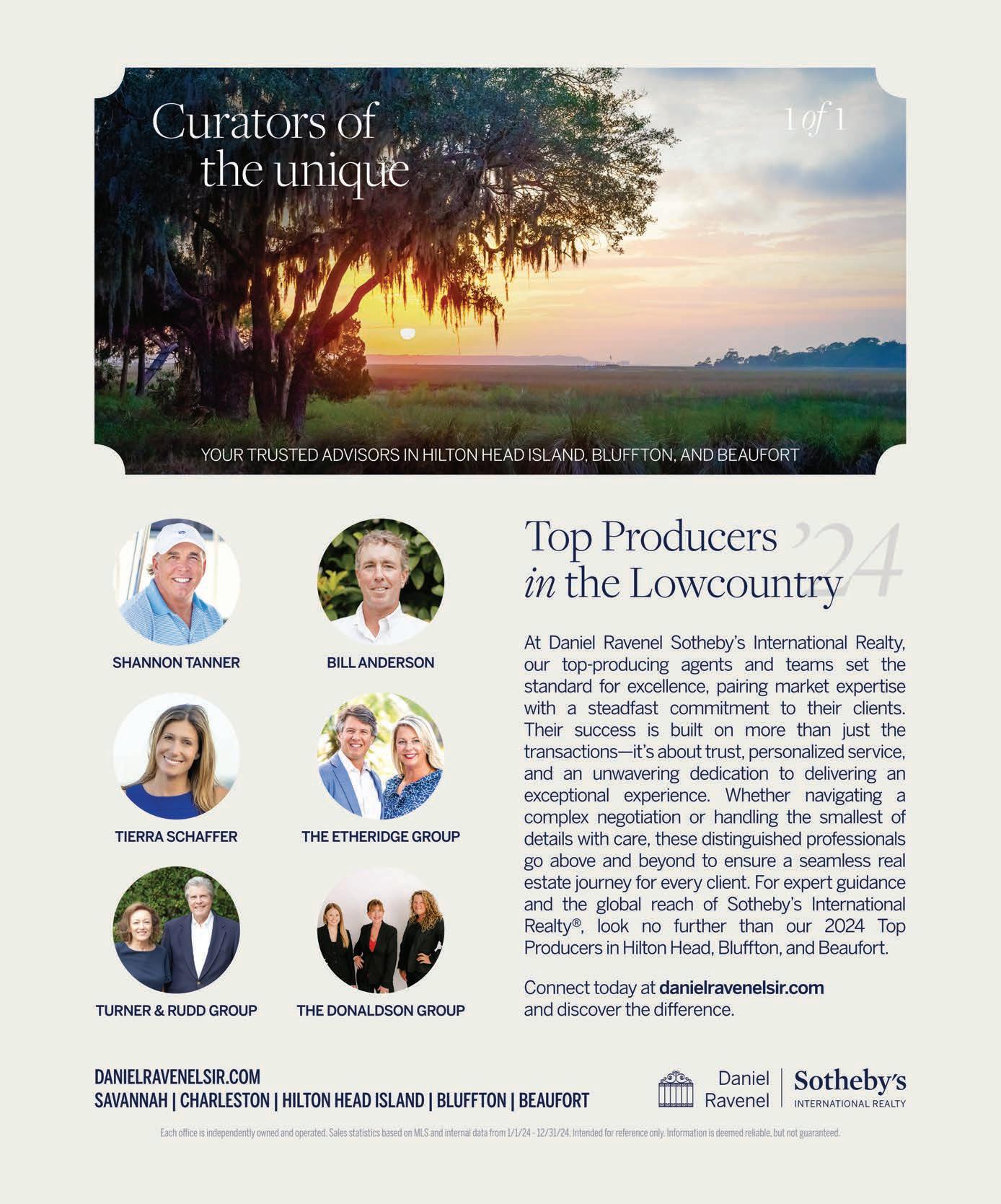
The Lowcountry’s marshlands are a paradise for outdoor enthusiasts and their four-legged companions. With winding tidal creeks, scenic boardwalks and soft sandy paths, it’s easy to see why dogs love exploring this dynamic landscape. But with great adventure comes great responsibility. The marsh is a delicate ecosystem, and responsible dog ownership ensures that both nature and our furry friends thrive. Here’s what you need to know before setting out on your next marshland adventure.


Before exploring the Lowcountry’s marshlands with your dog, check local leash laws and regulations. Some areas, like Pinckney Island National Wildlife Refuge, require leashes at all times, while others, such as Hunting Island State Park, allow leashed pets on trails but restrict beach access during nesting seasons. No matter where you go, always follow posted rules, respect the environment, and bring pet essentials like waste bags, fresh water and a towel for muddy paws. Here are a few dog-friendly walking areas with fantastic marsh views.
HILTON HEAD ISLAND
Jarvis Creek Park: A scenic spot with winding paths, picnic areas and a freshwater pond.
Fish Haul Beach Park: A quiet, natural beach where leashed dogs can explore at low tide. Mitchelville Freedom Park: A historic and peaceful area with wooded trails leading to the marsh.
Shelter Cove Sculpture Trail: A unique blend of art and nature, with pet-friendly pathways.
BLUFFTON
Bluffton Oyster Factory Park: A waterfront gem with open green spaces and stunning views.
Buckwalter Place Greenway: A wellmaintained walking path, perfect for leisurely strolls.
Victoria Bluff Heritage Preserve: A serene, wooded escape teeming with wildlife.
BEAUFORT AREA
Spanish Moss Trail: A shaded rail-trail that’s great for longer walks.
Cypress Wetlands: A beautiful boardwalk loop with stunning bird-watching opportunities.
C.C. Haigh Jr. Boat Landing: A peaceful riverfront setting, perfect for a quiet nature walk.

The marsh is always changing — one minute it’s solid ground, the next it’s a watery channel. Pluff mud, that thick, sticky Lowcountry sludge, works like quicksand, trapping paws and clinging to fur. A quick walk can turn into a messy ordeal, and for smaller dogs, even a risky one. If your pup gets stuck, stay calm and encourage them to move toward you instead of pulling them out. To avoid trouble, check tide schedules, stick to well-traveled paths, and keep your dog leashed. Don’t forget a towel — muddy paws are pretty much guaranteed.

The marsh is home to an incredible array of wildlife, and while it’s a fascinating place to explore, it also comes with a few risks. Keeping your pup leashed and staying aware of your surroundings will help prevent unwanted encounters.
Watch for oyster shells: These sharp shells can easily cut paws, so keeping your dog on trails or investing in protective booties can help. Avoid toxic plants and creatures: Some marsh plants, like poison ivy, can irritate dogs, while jellyfish and blue crabs may defend themselves if disturbed.
Beware of alligators: Never let your dog swim or approach the banks of freshwater lagoons or drainage ponds, as alligators often bask there.
A well-mannered dog makes marsh walks enjoyable for everyone. Follow these etiquette tips for the best experience.
Leash your dog where required: Even if they’re friendly, not everyone is comfortable around dogs.
Yield to others on trails: Step aside for hikers, bikers and families enjoying the marsh.
Keep barking to a minimum: Loud noises can disturb wildlife and other visitors.
Respect private property: Stick to public trails and avoid trespassing on docks or marshfront properties.





Dogs that love to chase can unintentionally stress marsh birds that rely on the wetlands for food and shelter. Birds like egrets, herons and sandpipers are particularly vulnerable when resting or nesting. By keeping dogs under control, we can help ensure that these beautiful birds continue to thrive in our marshes.

• Keep your dog leashed near nesting zones and protected areas.
• Avoid letting your dog run through dunes and sensitive marsh habitats, which are crucial nesting grounds for shorebirds.
• If you notice birds flying away in distress, it’s a sign that your pup is getting too close.
The Lowcountry can get sweltering, and marshes tend to hold onto heat and humidity. To keep your dog comfortable, plan your outings around the most pleasant times of the day.

Avoid walking in the heat of the day, especially during summer months, and always bring plenty of fresh water to keep your dog hydrated.
Early mornings: Cooler temperatures and stunning sunrises make for a great start to the day.
Evenings: Sunset strolls let you and your pup avoid peak heat while enjoying the golden marsh glow.
Fall and spring: These seasons offer mild weather, making them ideal for longer excursions without the risk of overheating.
Accidents happen, so it’s best to be prepared.
For cuts from oyster shells: Rinse the wound with clean water, apply pet-safe antiseptic, and wrap with a bandage.
For overheating: Move them to shade, offer water, and cool them with damp towels.
For pluff mud mishaps: Stay calm, call your dog toward you, and avoid pulling them out forcefully.
For snake bites or alligator encounters: Seek veterinary care immediately. LL


This wiggly cuddlebug is ready to bring boundless joy to his forever home.

hHubert is looking for a love that lasts. This affectionate and playful terrier mix first arrived at Hilton Head Humane as a tiny, underweight pup, found alone on a freezing winter night. But despite his rough start, Hubert has always been full of joy — wiggling, wagging and soaking up every cuddle he can get. Though he was once adopted, a change in circumstances brought him back to the shelter. Now, at 1 1/2 years old, Hubert is bigger, smarter and more eager than ever to find his perfect match. He’s even attending Board and Train to fine-tune his skills, ensuring he’ll be the best companion a family could ask for. If you’re looking for a loyal, loving and endlessly affectionate pup, Hubert is ready to be your new best friend!
MORE ABOUT HUBERT
Colors: Brown Age: 1 1/2 Weight: 40 pounds
Likes: Cuddles (the closer, the better — if he could physically merge with you, he would), playing and collecting toys like they’re rare artifacts. Dislikes: Too much stimulation. Hubert is a one-dog entertainment system and does not require additional special effects. Adopt: Visit Hubert at Hilton Head Humane between 11 a.m. and 4 p.m. daily. For more details, call 843-681-8686 or view his profile at hhhumane.org
Max Medina should have been named Romeo, Casanova or Don Juan — because he’s all about love! Whether you’re human, feline, canine or something else entirely, this affectionate tabby is ready to snuggle, purring like an engine on full throttle. One of the rare cats who loves belly rubs, he also enjoys snoozing on his back, stretching out like he owns the place. As Hilton Head Humane’s office cat, he’s realized the working life isn’t for him — he’s looking for a stay-at-home gig where he can cuddle, snack, and charm his way into everyone’s heart. If you need a best friend who would easily be voted Mr. Congeniality and Homecoming King, Max Medina is your guy!













When you walk on an older paver driveway you will notice it is dirty, the colors have faded, and the sand joints have weed growth. 90% of the time this scenario requires more than just a simple pressure washing – it requires a restoration.
As Hilton Head’s premier paver restoration company our team has the knowledge, experience, and professionalism to restore your paver driveway to its former beauty.
Just know that the whispers you will hear from your neighbors are not about you personally, but about the incredible restoration of your home’s curb appeal.
If your driveway needs some love, give us a call to schedule your free estimate!


Tucked away on Hilton Head’s north end, where the tide murmurs and Spartina grass sways, a quiet boardwalk stretches toward Port Royal Sound. Just across Mitchelville Road from Barker Field, this hidden gem offers a peaceful retreat — a place to pause, breathe and take in the sweeping marsh views, perhaps through the binoculars stationed at the boardwalk’s edge. This tranquil setting provides the perfect stage for marshside style — breezy, effortless fashion that moves with the rhythm of the coast. Light layers, soft neutrals and relaxed silhouettes echo the beauty of the landscape, embracing comfort without compromising style. From airy linen tees and cropped denim to billowy jumpsuits and flowing fabrics, these looks drift as effortlessly as the tide, proving that simplicity is a statement of its own.
A special thanks to the Zimbron family for stepping in as models. As founders of The Spirit of Sebastian Foundation, they have transformed personal loss into a mission of hope, helping locals overcome drug and alcohol addiction and rebuild their lives. Like the ever-resilient marshlands, their story is one of renewal — a reminder that even in life’s ebb and flow, strength and beauty always find their way back to the surface.

Javier Zimbron’s Southern Tide look is classic yet relaxed — perfect for taking in the view. Ana Maria Zimbron’s Spartina 449 dress, with its breezy silhouette and soft florals, flows as effortlessly as the marsh grass in the wind.


Lowcountry style is all about effortless elegance — where the breeze sets the mood, and comfort never takes a backseat to sophistication. These four looks from local boutiques capture the essence of coastal living, whether you're savoring a salty breeze on a marshside stroll, gathering with friends for an oyster roast or toasting to golden hour on a sunset cruise though the wetlands. Think breezy linens, sun-washed hues and silhouettes that move as freely as the tide — easygoing yet refined, just like life on the water.






hues






















































Light, breezy textures and an effortless coastal vibe make this look a springtime essential. The sleeveless blouse and relaxed denim strike the ideal balance between warm days and cool breezes, while the studded sandals add a touch of edge. No other hat quite gets our “salty” sense of humor. Available at
The Haven Boutique



Playful charm meets polished ease with this crisp striped blouse and tailored pants. A champagne-print scarf adds a touch of festive fun — because in the Lowcountry, bubbly is always in style.
Available at Currents
















Bold color and lightweight layers come together for breezy spring days. The island blue jacket adds a pop of vibrance, while the playful plaid and soft coral skirt keep things fun. Island blue always makes a statement. Available at Palmettoes



Sporty charm meets classic Lowcountry style in this adorable ensemble. Pastel hues, a pleated skirt and playful accessories make it the ideal look for a little lady at the RBC Heritage. Available at Island Child


Left: Sofia Zimbron’s Outside Hilton Head look is effortlessly cool, pairing a classic white tee with relaxed neutral denim for a laid-back, coastal vibe. Right: Camile Zimbron’s Maggie & Me jumpsuit flows with ease, offering comfort and movement, perfect for soaking in the ocean breeze.

From intricately embroidered hats that capture the essence of the Lowcountry’s beauty to bold statement jewelry designed to turn heads, these stylish pieces from local boutiques embody a flawless fusion of artistry, craftsmanship and Southern elegance.


Now available at Island Girl, The Artist Jay’s handcrafted cuffs redefine statement jewelry. Featuring fluid, sculptural metalwork and striking glass inlays, each piece is a fusion of artistry and bold design. Whether you're drawn to the organic, wave-like curves or the mesmerizing colors, these one-of-a-kind accessories add a distinctive, artistic touch to any outfit.
Don’t let those cold, gray, "I’m-not-leaving-thehouse" mornings fool you — warmer weather is just around the corner, ready to make its grand entrance. And when it does, you’ll want to greet it in something bright, bold and beautiful, like this sleeveless maxi shirt dress in kelly green with hot pink stripes. Find your new favorite dress at The Back Door, and who knows? You might just toast the season with a Paloma by the pool.




Brims on the Bluff elevates hat fashion with hand-embroidered designs that celebrate the beauty of the Lowcountry. Each piece, like this oyster-inspired creation, is a tribute to the coastal lifestyle — crafted with intricate stitching, rich textures and thoughtful embellishments like braided accents and delicate chains.


John Bayley Clothier now carries Heritage plaid golf shoes, designed exclusively by Armin Oehler. Inspired by the RBC Heritage, these custom-made shoes blend classic Southern style with premium craftsmanship. With rich tartan plaid, soft suede and a bold red sole, they’re a standout on and off the green.

Coastal style should be as effortless as an ocean breeze, and this look captures April’s laid-back charm with ease. Javier Zimbron embraces the season’s mild temperatures in breathable fabrics, versatile layers and footwear ready for wherever the day leads. Sleek shades cut the glare, while a relaxed button-down moves with him — perfect for a morning boardwalk stroll by the water or a carefree afternoon at the park with family.




























































No marshside style is complete without the perfect pair of sunglasses. These sleek frames offer both sun protection and effortless cool, making them ideal for any coastal outing.
Available at Eyeland Optique
Nothing says Lowcountry living like a breezy button-down shirt. Lightweight and comfortable, this relaxed-fit staple is perfect for soaking up the scenery. Bonus points for a no-tuck, laid-back style.
Available at Palmettoes
Comfortable and versatile, these perfectly tailored pants are built for all-day wear. And when the marsh-dwelling no-see-ums make an appearance, you’ll be glad for the extra coverage.
Available at
John Bayley Clothier
Rugged yet stylish, these Keen sandals are designed for both land and water, offering the perfect balance of durability and comfort. Whether strolling the boardwalk or venturing into the marsh, they’ll keep up with every step.
Available at Outside Hilton Head



















for
Treat yourself (or someone special) to the intriguing people and places, food and fashion, culture and creativity of LOCAL Life Magazine.
OVER $125 value for just $25.
• Annual subscription to LOCAL Life ($20 value)
• Hilton Head Symphony offer
• A free appetizer at The Sandbar.
• $50 gift certificate at Moor Spa
• $20 gift certificate at Black Marlin
• Exclusive local guides
• Exclusive online content
And every Insider gets a birthday treat from Carolina Coffee and Crumbs.
Scan to join or fill out and send the card with your payment near the front of this magazine.



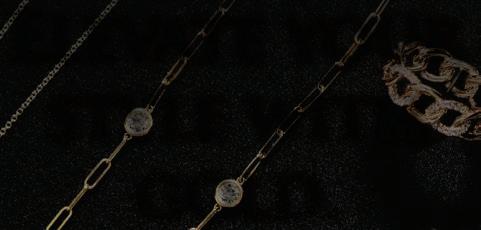





With over 75 years of combined experience in the jewelry industry, our knowledgeable staff specializes in matching your personality and style with jewelry that you will love wearing for years to come.

Made with real-touch technology, these flowers look and feel incredibly lifelike. Elevate your centerpieces with these stunning, long-lasting blooms.
Available at Le Cookery


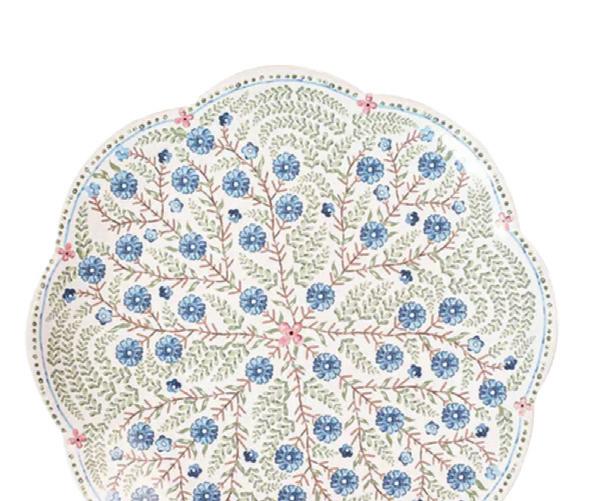





BURN BRIGHTLY
The romance of a Southern morning, captured in a candle. Hand-poured with clean-burning apricot and coconut wax into a 15-oz. Mai Tai glass — perfect for repurposing once the candle is gone.
Available at Hilton Head Soap Co.



As the weather warms, flowers and wildlife emerge. Capture the beauty of spring in your home with this elegant pair of ibis statues. Available at J. Banks Design

Serve your culinary masterpieces in style with this ceramic plate, featuring a beautiful blue bloom pattern.
Available at Cassandra's Kitchen


I LILAC YOU
Spring has arrived at The Pelican’s Pouch with a stunning collection of curated artwork by Susan Hood.
Available at The Pelican's Pouch

Spring has sprung! Refresh your home with vibrant, bloom-inspired decor that celebrates the season.

Bring the beauty of spring indoors with this stunning potted orchid.
Available at Pyramids















This two-quart tea kettle by MacKenzie-Childs features a beautiful floral design — perfect for a springtime afternoon tea party.
Available at Forsythe Jewelers










FLUTTERING BY





Add a touch of spring to your kitchen with this elegant set of two sack towels, featuring a floral and butterfly design.
Available at Gifted

Inspired by the colors of a sunset, this beautiful mahjong set is the perfect game for a springtime gathering.
Available at Marsh on the May

















These floral pinch bowls are perfect for serving sauces, oils and other spreads at your spring table.
Available at Hilton Head Oils and Balsamics
STORY BY RICHARD THOMAS
tThe bitter conflict between Loyalists and Patriots in what is now Bluffton saw numerous clashes, but one of the most brutal occurred in late 1780. Tory Dick Pendarvis, captain of the May River Loyalist Militia, killed Patriot James Doharty, captain of the Beaufort District Southward Regiment of Foot, at his home on Bear Island.
What happened when Pendarvis arrived unexpectedly at Doharty’s home depends on which version of the story you believe. On the day of the clash, Doharty had gathered several key leaders of the Southward Regiment of Foot at his residence, including Capt. Thomas Talbird of Beaufort and Capt. John Leaycraft of Hilton Head, along with his younger brother William — both of whom were Doharty’s nephews. Up to this point, both versions of the story align, but from here they diverge.
The Loyalist account, published in the Royal Georgia Gazette on Jan. 4, 1781, claims that as Pendarvis and his men approached the house, Doharty and his six or seven companions opened fire, killing one of Pendarvis’s men and wounding another. In response, Pendarvis and his men returned fire, killing Doharty while the rest of his men fled.
The Patriot version tells a very different story. According to Joseph Johnson’s 1851 work, Traditions and Reminiscences of the American Revolution in the South, Doharty had been warned that a group of Tories was coming to murder him, so he planned to ambush his attackers. However, just as he and his assembled Patriot allies were leaving the house to set their trap, Pendarvis and his men arrived. Through the deepening darkness, the head of the Tory column called out, “Are you Capt. Doharty?” After instructing his comrades to hide, be ready to fire, and escape if necessary,

Dick
warned of an attack, planned an
Doharty stepped forward, extending his hand in greeting as he replied, “I am.” Sensing that they were walking into an ambush, the Loyalists fired, wounding Doharty. As he fell to the ground, Pendarvis fired again, delivering the fatal shot.
Talbird and John Leaycraft, watching from the shadows, managed to escape in their boats across Mackay’s Creek, but 14-yearold William Leaycraft was found hiding in the house. The Tories dragged him outside, tied a rope around his neck, and repeatedly hoisted him over a tree limb, demanding that he reveal the whereabouts of the others. Despite the torture and the threat of death, young Leaycraft refused. Admiring his courage, the Tories ultimately released him, and he fled into the woods. John Leaycraft, along with other members of the Hilton Head militia, swore to avenge his uncle’s murder and his brother’s
reflect the deep local divisions of the Revolutionary War.
ordeal. This version of the story, passed down in family letters and local Revolutionary War accounts, remains the most widely echoed in these parts.
Shortly afterward, members of the Beaufort District Southward Regiment joined Harden’s Rangers in maneuvers near the Pocotaligo River. The earlier Patriot victory at Fort Balfour, followed by their subsequent withdrawal, had left Loyalist partisans in southern Beaufort District particularly vulnerable. As Harden’s dispersed militiamen began conducting spontaneous raids — many of them verging on lawlessness — Loyalists sought temporary refuge wherever they could. At some point, word reached John Leaycraft that Pendarvis was at home, preparing to flee to the British garrison in St. Augustine. Depending on which version of the story you follow, Leaycraft received this intelligence either at his home

on Hilton Head Island or near Fort Balfour. One account claims that he and a group of Hilton Head militiamen — soon to be known as the Bloody Legion — set out directly from the island for Montpelier. Another version suggests they rode at breakneck speed from Fort Balfour, covering a distance of some 30 miles in their pursuit.
Riding stealthily down the arched oak lane leading to the stately Pendarvis home on the May River, Leaycraft and his men were spotted by an enslaved person who ran ahead to warn his master. Recognizing Leaycraft — who was infamous in the area for his deep-seated hatred of Pendarvis —

the enslaved person relayed what he had seen, including the number of muskets and pistols the militia carried. Upon hearing the warning, Pendarvis and his lieutenant, William Patterson, rushed to gather the last of their supplies and made their way toward a boat moored at the Pendarvis dock. When Leaycraft and his men reached the home, they found the two Loyalists in the midst of loading their vessel for a hurried departure. What happened next, however, depends on which version of the story you believe. LL
July 2025 marks a monumental milestone: the 250th anniversary of the Beaufort District’s pivotal role in the American Revolution. Encompassing today’s Beaufort, Hampton and Jasper counties, as well as parts of Allendale County, this region played a critical part in the fight for independence. To honor the district’s legacy, LOCAL Life partnered with the Beaufort County 250 Committee to present a 12-part series celebrating the courage and determination of those who lived through one of America’s most defining moments.
Everard Auctions is always accepting quality consignments, from single items to large estates and collections. Send photos of your items to amanda@everard.com or call to schedule an appointment.
Our online multi-platform format reaches a global audience and maximizes your items value.
FOR MORE INFORMATION.









Treading Lightly

My heart and soul is in the Lowcountry.”
STORY BY CAROLYN MALES

aA blue morpho butterfly flits through a thicket of gaucheand-ink tropical blooms. Meanwhile, a pelican has alit inside another watercolor, where he stands in profile, his eye focused on a kaleidoscope of rainbow-hued fish, as if contemplating his next meal.
We have entered the world of wildlife artist Kathy Crowther. Her renderings of flora and fauna from the Lowcountry, the tropics, the Rockies, Canada and beyond spill over mat borders as if reaching out, pulling our focus into the frame. Audubon, the Impressionists, Japanese paintings and other influences echo through these large watercolors, albeit with Crowther’s unique perspective often tinged with sly humor or whimsy.
When I meet with the artist at the I. Pinckney Simons Gallery in Beaufort, she and her husband, Al, have just escaped snow and ice at their mountain-top home near Pike’s Peak in Colorado. Until the pandemic, they had lived on Dataw Island but moved west to be closer to their children and grandchildren. However, each winter, when they're drawn back to the Lowcountry’s lush greenery, wildlife and mild winter weather (happily they avoided this January's outlier snow event), the couple returns for their annual two-month winter stay here.
[LOCAL Life] You grew up and raised your family in Ohio. What brought you to the Lowcountry?
[Kathy Crowther] When Al retired, he said, “We're going to get away from the snow.” (We had heating cables on our roof!) We were thinking Charleston or Savannah, but then we found Beaufort, which reminded us of Chagrin Falls, Ohio, where we raised our family. When we moved here in 2006, I felt like every day was Christmas — there were palm trees, Spanish moss, resurrection fern, bottle brush… and the birds! Everything was new for me to paint, and I just really dove into it.






[LL] Before egrets, pelicans, herons and buntings captured your eye, what did you paint?
[KC] When I was a kid, I liked writing my own stories and illustrating them, so my mom took me to the Cleveland Institute of Art for a class, and some of her friends began commissioning me to do nature paintings. Then when Al and I were first married, we lived on a farm in West Virginia. Andrew Wyeth was a big influence. I pulled a saddle, wagon and old farm equipment out of the barn and painted them in sepia tones. In my 30s, my best friend was an antique dealer, and I found a big, beautiful Audubon book at a house sale. I still have it on my coffee table.
[LL] Many water-media artists constrain their paintings within a mat placed between their subject and its frame, but your paintings stretch beyond those inner boundaries. What prompted this?
[KC] It was a mistake! Years ago I was at an outdoor show and was doing paintings with borders. One of them I was working on had an arched border that I’d painted too low, and I was unhappy with it. My mother-in-law had come to the show with me and said, “Well, Kathy, for heaven’s sake, just paint over and above the mat so you get your height in.” So I did. I painted the ivy branches spilling up and over the mat. That painting sold the next day.





April 8–May 9 Mon-Sat 10am-4pm, Sun 12-4pm and 90 minutes before every Arts Center performance











Opening Reception: Wed, April 9 • 5-7pm
Enjoy refreshments and meet the artist • Free and open to the public

Gallery Talk: Tues, April 15 • 1pm
Learn more about the artist and his process







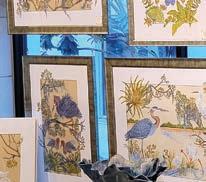



[LL] Those elaborately patterned borders that convey a storybook feel were hallmarks of your work for so long. Then in more recent years, you leaned into a more simplified borderless approach. Now I see the borders have returned, but now they’re circular.
[KC] I’m calling this new series Kaleidoscope. When we were in Costa Rica in December, we were walking on the beach, and I saw those beautiful blue morpho butterflies. I thought that when I paint them, I want the wings to touch — just like the bursts you see in a kaleidoscope. So I’m using a circular format with repetitive patterns: some with flowers and butterflies, some with birds and fish.
[LL] Right now I’m standing in front of a parliament of your owl paintings, and each and every one of them is looking at me, following me with their eyes when I shift from side to side.
[KC] I always start with the bird’s eye because then the composition becomes alive to me. With the owls, I kept thinking about how they always seem to be looking right at you. So I played around and realized that if I begin with two little dots of white pearl ink in the eyes, circle them with my pen and then fill that in with dark around them, the eyes will appear as if they’re watching your every move.
[LL] All your paintings, with their precise lines, obviously take a steady hand and concentration. Yet whenever we meet, I’m impressed with all your energy. How do you harness that “electricity” into a disciplined focus?
[KC] I cannot wait to get out of bed in the morning! I get up around 5 a.m. every day, make a cup of coffee and start painting for a couple of hours. I do have a lot of energy, so I’ll take a break around 10 and burn off some by playing pickleball. Then when I get back, I paint some more. But there are days when I really get into a piece and just can’t pull myself away, and I’ll paint from 5 in the morning until 5 at night.
[LL] I see you’re not only in galleries here and in Edisto but also several in Colorado. Are you going to reach a time when you say, oh, I need a vacation?
[KC] No! Painting is as important as breathing air. LL
A brush with nature
See more of Kathy Crowther’s wildlife art at I. Pinckney Simons Gallery in Beaufort (ipsgallery.com) or online at kathycrowtherllc.com.


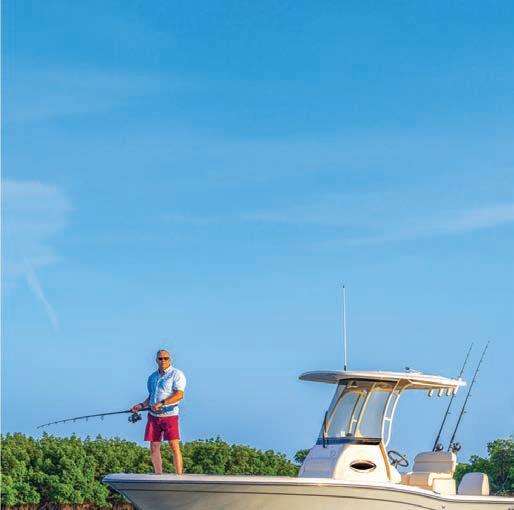











Toward the distant ship, the fogbank rolls. Fraught, wearied, and alone on darkened waves, with no time to lose, the fisherman rows.
Get back, or else he’s lost at sea, he knows. He’s strayed so far, too far to be seen or saved, and faster, toward the ship, the fogbank rolls.
Above the ship, clouds brighten, purple and rose, but the fogbank thickens, and the masts are vague. No time to lose. Onward, the fisherman rows, then, for a moment, stops. He turns and holds both oars quite still, insults the sky, and prays.
Closer to the ship, the fogbank rolls, and soon, it’s sure to cut him off. His sole hope is to find more strength. Ignoring pains, with now less time to lose, again he rows.
His two big halibut he won’t unload; he’ll carry the catch no matter what it weighs. Toward the distant ship, the fogbank rolls. With no time to lose, the fisherman rows.
— Gregory E. Lucas



Poetry trail site map



Unwind and enjoy life’s finer moments with family and friends while we take care of the rest. Choose your next Grady-White at our Okatie or Hilton Head locations.



The Poetry Trail of Hilton Head Island beautifully blends technology, creative writing, public art and community spirit. Featuring the voices of 24 local poets, it offers a unique and inspiring lens through which to experience the Lowcountry. Scan this QR code to explore the full trail.






tThe golden glow of Spartina grass sways in the coastal breeze, casting a mesmerizing interplay of light and shadow across the marshlands. Like a living canvas, this ever-changing landscape shifts with the tides and seasons, offering boundless inspiration to those who pause to admire its beauty. It beckons local artists — painters, photographers and mixed-media visionaries — compelling them to capture its essence in their own unique ways. Across the Lowcountry, galleries proudly showcase these works, celebrating the deep connection between art and nature. Here, we present some of our favorite pieces — each a stunning tribute to the enduring splendor of the Lowcountry’s marshlands. LL
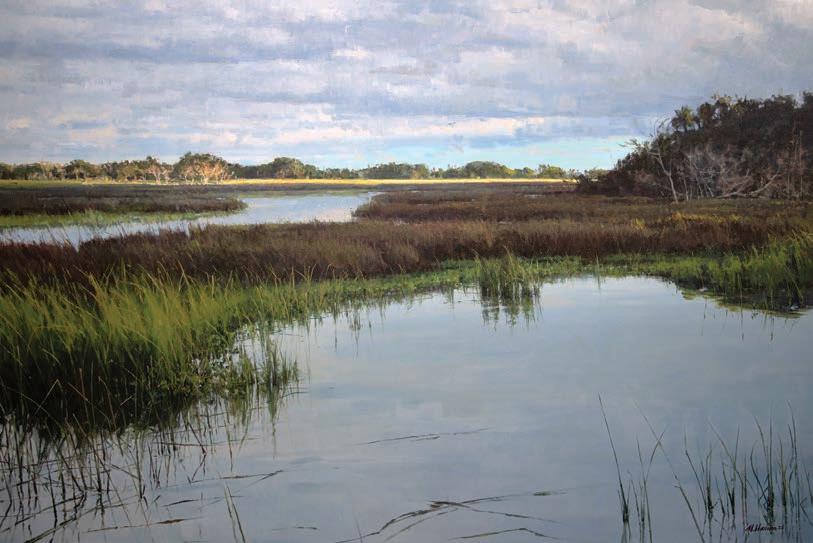

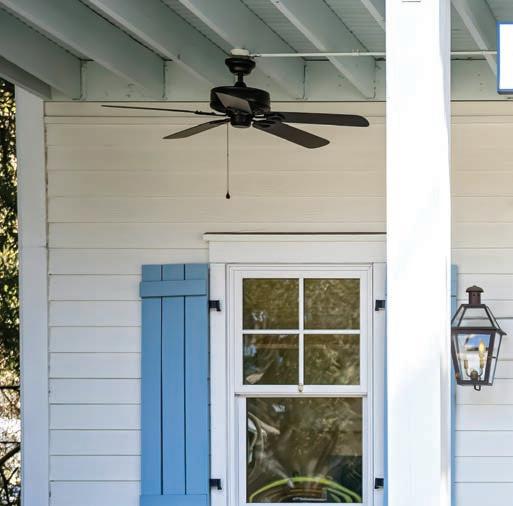










We all crave natural light, especially indoors. Recreate the feeling of natural daylight throughout your home with Lutron’s Ketra Natural Show settings, seamlessly integrated with HomeWorks.
Make the most of your wallpaper, tile, and other materials with Lutron’s Ketra. Its vibrant lighting gives you the flexibility to enhance the fabrics and textures of any space.
Make an appointment to visit our showroom and experience this luxurious e ect in person.

















AVAILABLE 24/7



EMERGENCY SURGERY
Doctors on staff in hospital for emergent procedures
INTENSIVE CARE
Oxygen Support I Fluid Therapy Pain Management
EMERGENCY CARE
Wound Care I Trauma I Toxicity
Urgent Surgeries I Diagnostic Imaging
Full In-House Laboratory
HOSPITALIZATION
Overnight Continuous Doctor
Supervised Patient Care
WEEKDAYS 6P-8A* SAT 12P - MON 8A*
* Doctor Supervised
Currently Located Inside












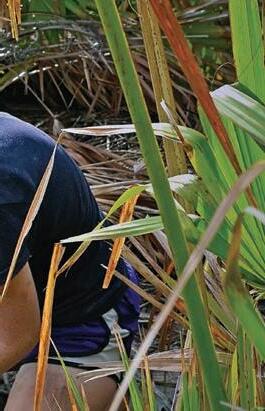





STORY BY BAILEY GILLIAM

This simple salad brings together sweet, savory and peppery flavors for a perfect spring dish. Start with a fresh bed of arugula, adding sliced strawberries for a burst of sweetness. Fold in thin slices of prosciutto or another cured meat for a salty, delicate contrast. Crumble in goat cheese or feta for creaminess, then sprinkle with toasted almonds for a satisfying crunch. Finish with a drizzle of balsamic glaze or a light lemon vinaigrette to enhance the flavors.

Arugula may have a reputation as the spicy troublemaker of the salad world, but it’s actually a well-behaved member of the cruciferous vegetable family. Also known as rocket, rucola or roquette (because one name just isn’t enough), this leafy green has been adding a peppery punch to plates for centuries. It was even believed to be a medicinal herb and aphrodisiac — though if that were true, we’d probably see a lot more arugula enthusiasts out there. Here in the Lowcountry, arugula thrives in the mild climate, making it a go-to for cooks who love a little zing in their dishes. Whether it’s jazzing up a shrimp salad, topping a crispy flatbread or mingling with local honey and pecans, arugula knows how to make an entrance. This guide breaks down everything you need to know about this feisty little green — from its bold flavor and culinary tricks to the health perks that might just justify that extra handful.
Arugula may not pack the same nutritional punch as heavyweights like kale or spinach, but don’t count it out — it still brings plenty of benefits to the table. This leafy green is rich in essential vitamins and minerals, particularly calcium and vitamin K, which are key players in maintaining strong bones and reducing the risk of osteoporosis. Looking out for your heart? Studies have linked cruciferous vegetables like arugula to a lower risk of cardiovascular disease, thanks to their anti-inflammatory and heart-supporting properties. Arugula is also a good source of fiber, helping to regulate blood sugar levels and potentially reducing insulin resistance. Another standout feature? Antioxidants — these compounds help protect cells from damage and support overall health. Plus, arugula contains glucosinolates, natural compounds that have been studied for their potential cancer-fighting properties. One note of caution: while vitamin K is a bone health champion, it also plays a role in blood clotting. If you’re on blood thinners, it’s best to enjoy arugula in moderation.


This salad from the team at Michael Anthony’s features a hearty base of peppery arugula, which complements the earthy sweetness of roasted beets, the crispness of fennel and the tartness of apples. Tossed in a bright citrus vinaigrette and garnished with fresh parsley and mint, it’s a refreshing and vibrant dish that’s both flavorful and satisfying.
INGREDIENTS
2 medium-sized beets (about 4-6 ounces each)
1 small fennel bulb, trimmed, halved lengthwise and cored
1 medium-sized apple, halved and cored
4 cups arugula
1/4 cup fresh parsley, minced
1/4 cup fresh mint, minced
1/4 cup extra virgin olive oil
2 tablespoon white wine vinegar
1 teaspoon orange zest + 1 tablespoon fresh juice
3/4 teaspoons sea salt
1/2 teaspoon honey
1/4 teaspoon black pepper Walnuts, for garnish
DIRECTIONS [1] Place beets in a medium saucepan with cold water to cover. Bring to a boil over high heat; reduce heat to low, and simmer until beets are tender (35 to 40 minutes). Drain and reserve until cool enough to handle. Peel beets and cut into wedges. [2] While beets are cooling, use a mandolin or sharp knife to cut fennel bulb and apple into very thin slices. Place in a large bowl with beet wedges, arugula, parsley and mint. [3] Whisk together oil, vinegar, zest, juice, salt, honey and pepper in a small bowl. Drizzle vinaigrette over beet mixture, and toss to coat. Top with crushed walnuts. Serve immediately.



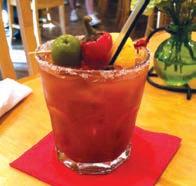
































Arugula thrives in the mild Lowcountry climate, making it an easy and rewarding addition to local gardens. With its preference for cool weather and full sun, it’s perfect for early spring and fall planting, germinating in soil as cool as 40 degrees. Whether you plant it in containers, raised beds or garden plots, arugula flourishes in nutrient-rich, well-drained soil. Keeping the soil evenly moist prevents bolting, especially during the region’s warm spells. Baby leaves are ready to harvest in just a few weeks, while mature greens take about a month.

Baby arugula offers a milder, more delicate flavor compared to mature arugula, which has a stronger taste and rougher texture. Snip individual leaves for a steady supply, or pull the whole plant for a bountiful harvest.
When selecting arugula at the grocery store or farmers' market, look for smaller, bright green leaves with no signs of wilting, browning or yellowing. Whether sold loose or packaged, the leaves should be dry and crisp, never slimy or overly damp. While arugula is available year-round, its peak seasons are early spring and fall, when farmers' markets often carry the freshest, most flavorful varieties. Bunched arugula usually has larger leaves with a bolder taste, while loose-leaf arugula tends to be smaller and milder. A little dirt is normal on farm-fresh greens, but avoid any leaves that look overly soggy or damaged. To keep arugula fresh, rinse and pat dry, then wrap loosely in a paper towel and store in a plastic bag or container in the crisper drawer. Since arugula is delicate, use it within a few days for the best flavor and texture.

Arugula isn’t your average leafy green — it’s a peppery powerhouse with spicy, nutty and slightly tart notes that set it apart from milder salad greens. Its zesty bite makes it a standout in salads, sandwiches, pizzas and even pesto, adding depth and contrast to every dish. Its small, spiky leaves vary in intensity — larger leaves bring bolder heat, while older ones can develop a hint of bitterness. Tender yet crisp, arugula has a texture similar to raw spinach but softens into a delicate, milder green when cooked. It pairs exceptionally well with citrus, salty cheeses and rich, cheesy dishes. For a creative twist, toss it onto a pizza postbake, blend it into a punchy pesto, or sauté it for a quick side dish. You can even swap it for spinach in pastas and soups to elevate everyday meals.
Here are a few other ways to enjoy arugula:
• Tuck it into sandwiches and wraps for a peppery crunch.
















• Blend it into smoothies for an unexpected nutrient boost.
• Stir it into scrambled eggs or omelets for a fresh, vibrant twist.

• Pile it onto burgers as a flavorful alternative to lettuce.

• Use it in grain bowls with quinoa, farro or couscous.

• Layer it under roasted veggies for a warm salad effect.
• Mix it into hummus or dips for an herby kick. LL
Grilled cheese sandwiches are the ultimate comfort food, but a little creativity can take them from classic to gourmet. In this elevated version, peppery arugula plays a starring role, balancing the richness of melted cheddar and the savory bite of ham with a fresh, slightly spicy contrast. Paired with juicy cherry tomatoes and crisp, golden-brown bread, the arugula adds depth and vibrancy, turning a simple sandwich into a bold, flavor-packed experience.

INGREDIENTS (MAKES 2 SANDWICHES)
4 slices of whole wheat or sourdough bread
4 slices of ham (thinly sliced)
4 slices of cheddar cheese
1/2 cup cherry tomatoes, sliced in half 1/2 cup fresh arugula
2 tablespoons butter (softened)
1 teaspoon olive oil
A pinch of flaky sea salt (for garnish)
DIRECTIONS[1] Wash and slice the cherry tomatoes in half. Butter one side of each slice of bread. Place two slices of bread, buttered side down, on a clean surface. Layer each with a slice of cheddar cheese, two slices of ham, cherry tomatoes, fresh arugula and another slice of cheese. Top with the remaining bread slices, buttered side up. [2] Heat a grill pan or skillet over medium heat. Add a drizzle of olive oil for extra crispiness. Place the sandwiches in the pan, and press gently with a spatula. Cook for 3-4 minutes per side until the bread is golden brown with grill marks and the cheese is melted. [3] Remove from heat and let the sandwiches rest for a minute. Sprinkle with a pinch of flaky sea salt for extra flavor. Slice diagonally and serve warm.


RECIPE OF THE MONTH
STORY BY BAILEY GILLIAM

tThe Lowcountry’s salt marshes are the lifeblood of coastal cuisine, where oysters are plucked fresh, shrimp leap into waiting skillets, and blue crabs, stone crabs and clams thrive in tidal creeks. Beneath the surface, redfish, sheepshead, trout and flounder weave through the grasses, bringing fresh-caught flavor to Southern tables. In this edition of Local Flavor, we’re diving into the marsh’s bounty with expert tips, regionally inspired recipes and a taste of tradition. Whether you're a seasoned cook or new to Lowcountry flavors, this guide will help you bring the taste of the tides home — one unforgettable bite at a time.


NUNZIO RESTAURANT + BAR
This coastal-inspired creation from Chef Nunzio Patruno is a true celebration of the sea, blending the briny richness of mussels, clams, shrimp, scallops and calamari in a light, aromatic broth. Rooted in the traditions of Ligurian cuisine, this zuppetta harmonizes the natural sweetness of fresh seafood with the earthiness of potatoes and the crisp bite of string beans. Customize it with your favorite shellfish to make it your own, and don’t forget the finishing touches — crusty garlic bread and a drizzle of extra virgin olive oil — to elevate every bite.
INGREDIENTS (Serves 8)
1 lb of small new potatoes, sliced into 1/4-inches
1 lb of string beans
2 garlic cloves, chopped
1 bunch of scallions, chopped
1 small long hot pepper, chopped
1 glass of white wine
1 cup of tomato sauce
1 lb of mussels
24 clams
24 medium shrimp
24 scallops
1 cup of sliced calamari
2 ounces of extra virgin olive oil
1 cup of fish broth
1 tablespoon chopped parsley
Salt and pepper
DIRECTIONS [1] In a large, deep sauté pan cook down the garlic until golden, then, add the long hot pepper and scallions and cook for two minutes. Add a glass of white wine and let the wine evaporate. [2] Add the potatoes and string beans and cover with tomato sauce and fish broth. Bring to a boil and cook for about ten minutes with the lid on. [3] Then, add all the seafood, salt, pepper and parsley, and cover with the lid. [4] When the mussels and clams open, remove the pot from the stove and set aside. Serve the Zuppetta in a dish bowl with garlic bread and drizzled extra virgin olive oil.










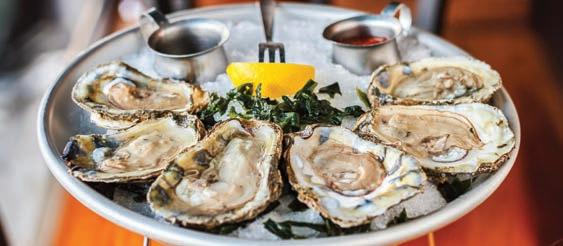
HOLY TEQUILA
“My favorite marshland ingredient is an easy one and a Lowcountry favorite of many: the oyster! One of my favorite childhood memories was growing up on Laurel Bay's Military Base (which bordered the Broad River). Although I didn't know much about oysters at the time (and really had no idea what months I was picking them or the legalities of them at the time), I would grab one or two out of the river and open them with my pocket knife and enjoy a snack. I wonder if they were Broad River blades, which I've served many times. Now as an adult, I love them raw, but my favorite way to have them is with all the friends and family around, then steaming the oysters with 2 cinder blocks, a piece of sheet metal and some old worn-down towels over a fire. A little hot sauce, and you’re all set. Nothing beats it.”
– Chef Michael Beele
THE SANDBAR BEACH EATS
“We love to grill oysters on the half shell. Ours typically come from the Gulf of Mexico. We top them with pecorino pepper butter and serve with a warm baguette.”
– Erika Waronsky


“My favorite marshland ingredient would be sheepshead. We love to feature it on our menu whenever we can get it. It is a delicious white flaky fish, but it is really hard to come by. There's not a big commercial market for it.”
– Chef Melissa Coocran
MONTAGE PALMETTO BLUFF
“I would probably say sea beans, as they are something that does not get a lot of attention, and they have a very distinctive taste that is really unlike anything else.”
– Chef Nathan Beriau

What is a soft-shell crab, and why is it so hard to find?







As spring arrives in the Lowcountry, a seasonal delicacy emerges — soft-shell crabs. At Hudson’s Seafood House on the Docks, owner Andrew Carmines explains why these crabs are so highly sought after.
"As the water warms, crabs begin molting their old exoskeletons. They remain soft for only a short time before their new shells start to harden," Carmines says.
This brief soft phase makes soft-shell crabs a unique and tender treat. Unlike regular crabs with hard, protective shells, soft-shell crabs can be eaten whole, including the shell, because they’ve just shed their exoskeleton and are in a vulnerable, pliable state.
"This molting process makes soft-shell crabs incredibly tender and flavorful, allowing you to enjoy the entire crab without the need to crack open a hard shell," Carmines adds.
Their delicate texture and rich flavor make them a favorite among seafood lovers. Soft-shell crabs are typically available from late March to early June, creating a limited window to enjoy this seasonal specialty. At Hudson’s they take it a step further with an in-house shedding operation, where more than 10,000 crabs are prepared each season. Their state-of-the-art system keeps live crabs in tanks, carefully monitored until they molt.
"Once the crabs shed their old shells, we separate them and prepare them for our guests," Carmines says.
Soft-shell crabs can be prepared in various ways to highlight their tender texture. Whether lightly fried, sautéed with fresh herbs and garlic or grilled to perfection, they are a versatile dish that emphasizes the crab's natural sweetness.
"Each preparation method enhances the delicate flavor and texture, making every bite a true treat for the senses," Carmines says.






Sometimes simplicity is the secret to an unforgettable dish, and Vantia White Clam Sauce is the perfect example. A classic Italian pasta sauce often overshadowed by its red counterparts, this white clam sauce is rich, briny and absolutely delicious. Imported directly from Italy, it’s crafted from a traditional Sicilian recipe, bringing the flavors of the Mediterranean straight to your kitchen. Made with shelled baby clams, olive oil, garlic, parsley and a touch of onion, it delivers an authentic and elegant taste with every bite.
“Sometimes, there’s nothing more satisfyingly delicious than a classic Italian pasta dish,” says Chef Trey Place of Michael Anthony’s Cucina Italiana. “Vantia White Clam Sauce is packed full of clams and enhanced with white wine and herbs, elevating the natural flavors to new heights. This is a cut above anything you’ll find at your local grocer.”
Pairing the sauce with the right pasta is essential for maximizing its flavor. Chef Place recommends Mancini Premium Estate Spaghettini, describing it as “crafted like a fine estate wine.” The slow-dried wheat used in this pasta gives it an unparalleled texture, while its bronze dies create a porous surface that holds the sauce beautifully. When paired with Vantia White Clam Sauce, it transforms into a truly exceptional dish.
“A jar is plenty for a pound of pasta, which easily serves six people,” making it perfect for gatherings. For an extra touch of indulgence, serve it alongside a crisp, mineral-driven white wine to complement the briny richness of the sauce.

White clam sauce often doesn’t get the recognition it deserves in the world of pasta sauces. However, once you try it, you’ll quickly understand why this understated classic belongs in your culinary repertoire. Simple yet sophisticated, it pairs beautifully with spaghettini or any long pasta, offering a taste of Sicily in every bite.
If you're feeling adventurous and want to try making your own version, Chef Place suggests using fresh clams for the most authentic flavor. However, Cento Whole Shelled Baby Clams make an excellent substitute, closely mirroring the quality of those found in Vantia’s sauce. All of these ingredients can be purchased at Michael Anthony’s Market Café.
For those ready to take their pasta night to the next level, here’s Chef Trey Place’s recipe for homemade clam sauce — a delicious way to bring the taste of Italy into your own kitchen.

1 pound linguine
24 assorted clams, scrubbed and washed (or 1 8-10 oz can of baby clams)
1/4 cup olive oil
2 tablespoons minced garlic
1 cup cherry tomatoes, quartered
3 tablespoons Italian parsley, chopped
1 tablespoon Sicilian red peppers, minced
3/4 cup dry white wine
1 cup vegetable broth
DIRECTIONS [1] Cook the linguine according to package directions until al dente. [2] In a large sauté pan, heat olive oil. Add clams. Add the garlic, crushed red pepper and cherry tomatoes. Sauté approximately 2-3 minutes. Deglaze the pan with the wine and then add vegetable broth. [3] When all clams are open, remove them and arrange around four large plates. Return the sauce to the stove and bring to a simmer. [4] Add the cooked and well-drained linguine (or pasta of choice) to the sauce. Add the Italian parsley and toss to mix well. [5] Divide the pasta between the 4 plates of arranged clams. Drizzle with extra virgin olive oil and serve.


This culinary journey showcases soulfully prepared local ingredients and their evolution from West Africa to the Caribbean, through South America, to the Lowcountry.
Ultimately an elevated pairing of cultures to be celebrated through taste. Collectively Ọkàn deeply impacts community through engaging local farmers, empowering employees, and compelling guests.








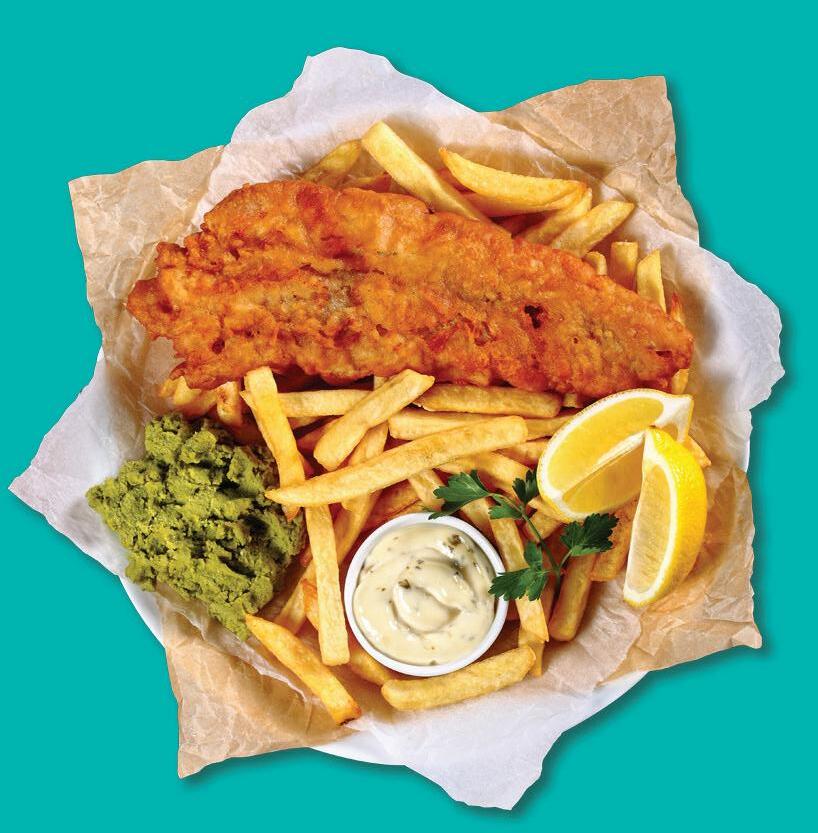


















cChoosing the perfect shrimp can be tricky, but with a few simple guidelines from Carrie Hirsch, the Culinary & Events Coordinator at the Technical College of the Lowcountry, you’ll know exactly what to look for the next time you're at the seafood counter. From freshness to texture, here’s everything you need to ensure you’re picking the best shrimp for your meal.



Go to the right place: When it comes to buying shrimp, the source is key. According to Hirsch, “Shrimp are highly perishable, so it’s important to buy from the right fishmonger — don’t skimp on the price!” Quality and freshness are directly tied to where you buy your seafood, so visit a reputable fish market or seafood store. If you’re looking for fresh shrimp, it’s worth paying a little extra to ensure you’re getting the best product available.
Check the color: The color of shrimp can tell you a lot about its freshness. Hirsch emphasizes, “When buying shrimp, look for a translucent pink or gray color with smooth shells, tightly curled tails, and a firm texture—these are signs of freshness.” Avoid shrimp that appear dull or discolored, as this could indicate age or improper handling. Fresh shrimp should have a clean, translucent look.
Always buy whole: While it might seem easier to purchase pre-cleaned shrimp, buying whole shrimp can make a significant difference in both cost and quality. “It takes more effort to clean the shrimp yourself, but it’s less expensive, and pre-cleaned shrimp often sit around longer in the store because they cost more,” Hirsch explains. “Some recipes call for the head to be left on, which enhances flavor because the fats and natural juices remain intact.” If you’re up for a little extra work, buying shrimp with their shells or heads on can boost both flavor and savings.
Smell test: Fresh shrimp should have a clean, ocean-like scent. Hirsch warns, “Red flag: If there’s even a hint of an ammonia smell, that’s a definite sign the shrimp is spoiled. Rinsing it off or cooking bad shrimp just means you’ve got cleaned, bad, cooked shrimp!” Always give shrimp a quick sniff before buying—any off-putting odor is a sure sign to walk away.
Check the texture: The texture of shrimp is another clear indicator of freshness. Hirsch advises, “Avoid shrimp with a slimy or mushy texture or cracked shells.” Fresh shrimp should feel firm to the touch, with smooth, intact shells. She also shares a humorous line from poet Ogden Nash:
"The Shrimp: A shrimp who sought his lady shrimp / Could catch no glimpse. Not even a glimp. / At times, translucence / Is rather a nuisance.”
But seriously, always look for shrimp that retain their shape and firmness — this is a sign of good quality.
Avoid frozen shrimp: One key tip Hirsch emphasizes is to steer clear of frozen shrimp, particularly imported varieties. “My favorite bumper sticker reads: ‘Friends don’t let friends buy imported shrimp.’” Frozen shrimp often undergo processing that can compromise flavor and freshness. Additionally, many imported shrimp come with environmental and ethical concerns. Whenever possible, opt for fresh, local shrimp that hasn’t been frozen to ensure the best taste and quality.
The local advantage: In the Lowcountry, shrimp aren’t just a dish — they’re a way of life. Hirsch notes, “Graceful shrimp trawlers, surrounded by circling birds hoping for a snack, can be seen from the pristine beaches and waterways of the Lowcountry. It’s one of the reasons we’re destined to live our best lives here — and why we have bragging rights about our shrimp being the best on the planet!”
When buying shrimp, Hirsch stresses, “There are two things I feel very strongly about — only buy local (or at least domestic), and never buy frozen.” Supporting local shrimpers not only ensures you're getting the freshest product, but it also helps sustain the local fishing industry.
Don’t blame the shrimp: Hirsch also advises being mindful of how you cook shrimp. “Whether you’re sautéing, frying, boiling, or baking — if overcooked, shrimp become rubbery, so always be extra attentive.” Overcooking shrimp is a common mistake, so keep a close eye on them to maintain their delicate, tender texture.
Presentation perfection: Finally, for an extra touch of flair, Hirsch recommends always leaving the tails on when serving shrimp. “To enhance the presentation, always leave the tails on when serving shrimp and grits — it’s a showstopper!” Not only does this add to the visual appeal of your dish, but it also enhances the eating experience, giving diners something to hold on to as they enjoy their shrimp.
HILTON HEAD ISLAND
Benny Hudson Seafood
South End Seafood
Spanish Wells Seafood & Produce
Piggly Wiggly
Barnacle Bill’s
Hudson’s Seafood House on the Docks
BLUFFTON
Russo’s Fresh Seafood
Nantucket’s Meat & Fish Market
Bluffton Oyster Company
Lemon Island Seafood
Lowcountry Fresh Market & Cafe
BEAUFORT AREA
Sea Eagle Market
Gay Fish Co.
Bradley Seafood Market
CJ Seafood Express









Oysters, the nutrient-rich bivalve mollusks, are packed with protein, omega-3 fatty acids and essential minerals like zinc and selenium. Their distinct flavors, however, are shaped by their environment — factors such as water temperature, salinity and the types of plankton in the area.
“Oysters are like wine; they carry the flavor of the place they come from. The water temperature, the salinity, the plankton — it all comes together to make each oyster unique,” says chef Chris Carge, executive chef at Black Marlin.






At Black Marlin, sourcing the freshest oysters starts with working closely alongside local oystermen. “What I love about oysters is how they tell the story of where they’re from. You can taste the local environment in each one,” Carge said.
Among the local favorites are the Eastern oyster (Crassostrea virginica), prized for its teardrop shape and briny finish, and the cluster or blade oysters, which are often roasted for a rich, salty bite.



“We wait for low tide before harvesting select oysters, and that’s when we get the bigger, meatier cups,” explains Carge. Black Marlin partners with Lady’s Island Oyster Company to source triploid oysters, cultivated in floating cages for a steady, year-round supply. “Frank and Julie do amazing work — those oysters are clean, crisp, and perfect for serving anytime,” he adds.
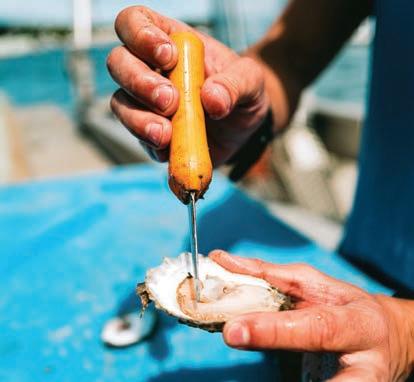
For Carge, freshness is paramount. “No oyster should be more than five days out of the water. The difference between a fresh oyster and an old one is night and day.”
To ensure peak quality, Black Marlin sources Northeastern oysters from Island Creek Oyster Farm in Duxbury, Mass., and Perrin Creek Oyster Company in Virginia, with deliveries arriving within 24 hours of harvest.
While both coasts offer exceptional oysters, Carge favors East Coast varieties for their briny, crisp finish. “We love East Coast oysters because of their salinity. The briny, clean finish is exactly what we’re looking for,” he says.
Pacific oysters, on the other hand, tend to have smaller cups and a more earthy, mineral-forward taste. Still, the Lowcountry remains a standout region for oyster lovers. Carge calls it “the Napa Valley of oysters,” crediting the area’s tides, saltwater and abundant sunshine for producing large, flavorful oysters with a distinct, clean taste.
Whether enjoyed raw, roasted or paired with wine, oysters offer a uniquely immersive culinary experience. As Carge puts it, “When you eat an oyster, you’re eating the story of that place. That’s what makes oysters so incredible.” LL







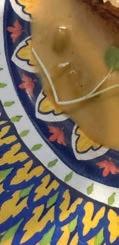





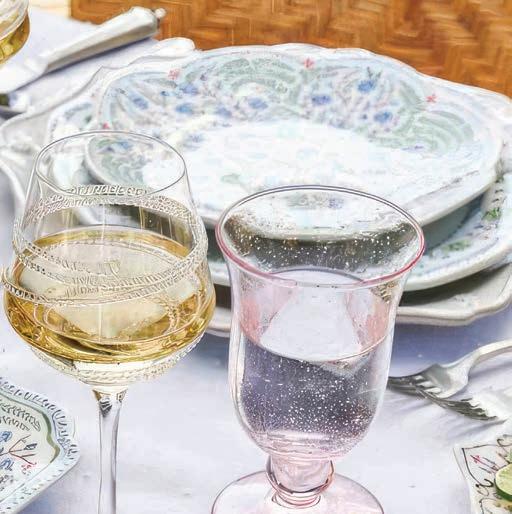








The local dining scene is heating up with a fresh wave of restaurants bringing everything from laid-back bites to globally inspired flavors. Whether you're in the mood for a burger and a beer or an elegant evening out, these new spots are serving up something for everyone.

5 Lagoon Road, Hilton Head
After a full renovation, the restaurant formerly known as Rockfish HHI has transformed into Dive Bar & Grille. Expect a relaxed, welcoming atmosphere with an updated menu that puts a fresh spin on classic bar fare.
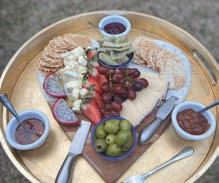
Spring Island
Bluffton Crossings (near Buffalo Wild Wings)
This isn’t just a restaurant — it’s a full-on hospitality hub. Lowcountry Kitchen offers catering, bar service, floristry and event design, but it’s also open for weekday lunch, serving up fresh salads, sandwiches and power bowls for those looking for a quick but delicious bite.
Spring Island’s newest addition to the food scene is a mobile favorite, dishing out small plates and handhelds for special events. Keep an eye out for where it will be serving next.



Reilley’s Plaza, Hilton Head
The team behind Coastal Restaurants and Bars (CRAB) has done it again — this time with a burger joint that knows how to do comfort food right. Expect mouthwatering burgers, crispy fries and plenty of cold drinks to wash it all down.
Sonesta Resort. Hilton Head
This new gastropub at the Sonesta Resort is all about good vibes, great food and even better drinks. With ocean views and a menu that doesn’t disappoint, it’s the perfect place to unwind after a day at the beach.

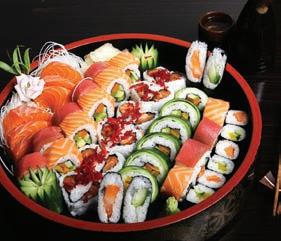
349 Hope Pond Way, Bluffton
If you’re craving rich, flavorful ramen or beautifully crafted sushi, Sakura Ramen & Sushi has you covered. Whether you’re grabbing a quick lunch or making it a night out, this spot is a must-visit for lovers of Japanese cuisine.

Main Street, Hilton Head
This sweet-tooth haven is about to shake things up on Hilton Head. Known for its indulgent milkshakes, handcrafted chocolates and other desserts, this franchise is sure to be a hit.
Northridge Plaza, Hilton Head
A brand-new sushi and hibachi spot is gearing up to open next to HomeGoods, bringing more Japanese flavors to the island. Stay tuned for its grand opening.

One of the Lowcountry’s favorite sweet treats is hitting the road. Palmetto Pops, known for its artisanal, gourmet ice pops made with fresh fruit, is rolling out an ice cream truck just in time for the warmer months. Keep an eye out for its first stops.


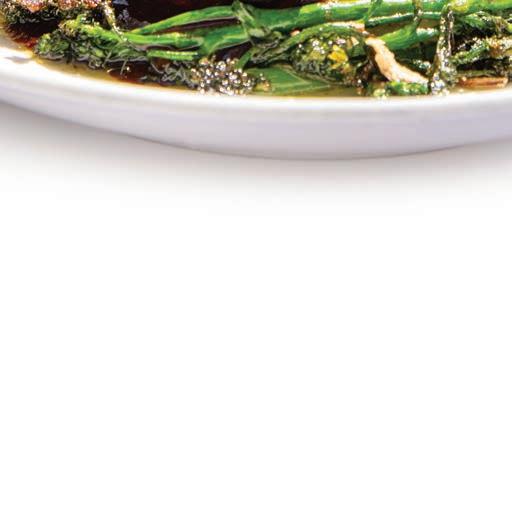

Open 7 nights a week • Dinner 5:00 - 9:00 p.m. Reservations recommended, call 844.627.1665 after noon daily or visit: AlexandersRestaurant.com Located in Palmetto Dunes 76 Queens Folly Rd • Hilton Head Island SCAN TO RESERVE A TABLE BANFI WINE DINNER THURSDAY, APRIL 24 • 6:00 - 8:30 PM Prix Fixe Menu with Wine Pairing

for exceptional coastal cuisine with a new orleans influence, featuring an excellent wine selection, full bar, outdoor seating and entertainment
open daily at 5pm sunday brunch 11-2 call for reservations 843-802-4744





From new restaurant openings and exciting renovations to heartfelt farewells and culinary milestones, the Lowcountry’s food scene is buzzing with activity. Whether you're looking for the latest dining destinations, behind-the-scenes updates or ways to bring local flavors into your own kitchen, we’ve got the scoop. Dig in and discover what’s cooking.




20 hatton place | hilton head island 843.802.4744 | celestehhi.com




Exciting changes are underway at South Beach Marina, where renovations surrounding The Salty Dog promise a fresh new look. Demolition is in progress, with construction set to begin soon — but don't worry, work will pause during the busy season so visitors can still enjoy the marina. Plans include a stunning new restaurant, a reimagined Jake’s Cargo store and additional retail shops and office space on the second floor. Stay tuned for updates, and if you want a sneak peek, check out the live video feed at saltydog.com/demo

Holy Tequila’s glowup: A fresh new look
After a round of renovations last month, Holy Tequila is sporting a stylish new bar area and upgraded indoor seating. Whether you're a longtime fan or a first-time visitor, now’s the perfect time to stop by and see the transformation for yourself. holytequila.com
Things are heating up at Okán, where 1000kán, their new Late Night Saturdays, is now in full swing. Every Saturday night, DJ Ash keeps the energy high with a mix of Afrobeats, Afro-Soul, R&B, Amapiano and Caribbean vibes, while Chef Bernard serves up a brand-new late-night menu. If you’re 21 and up and looking for a lively way to spend your Saturday night, 1000kán is the place to be after 10 p.m. okanbluffton.com


Exciting things are in the works at Michael Anthony’s Cucina Italiana. The restaurant has acquired the space next door to expand The Market Cafe, adding a dedicated market area where guests can watch chefs handcraft fresh pasta and other specialty items. The existing Market Cafe will continue offering a casual dining experience, while the main dining room retains its signature elegance. More pasta? More reasons to visit!
michael-anthonys.com
Shrimp lovers in Georgia are getting a side of truth with their seafood. Thanks to HB 117, passed by Representative Jesse Petrea, restaurants are now required to disclose whether their shrimp is imported. With many foreign shrimp farms using antibiotics and other chemicals in crowded environments, and the FDA only inspecting 0.7% of imported shrimp, this law aims to give diners the transparency they deserve. While imported shrimp from countries like India, China, Vietnam, Ecuador, Thailand and Indonesia still remains an option, Georgians can now make more informed choices about what lands on their plate.
The Technical College of the Lowcountry’s Culinary Institute of the South has unveiled the Foodseum, a one-of-a-kind interactive museum celebrating the rich food heritage of the South. This immersive experience showcases exhibits on Lowcountry agriculture, legendary Southern chefs and beloved local food traditions. Visitors can dive into hands-on displays, attend guest lectures and explore revolving exhibits covering topics like Gullah and Geechee cuisine, seafood and the farm-to-table movement. Whether you're a history buff or a foodie, the Foodseum is set to become a must-visit destination for anyone looking to savor the stories behind the region’s flavors. tcl.edu

Although Thai Food by Madame Sue may have closed, her flavors are living on in a new way. Her e-cookbook, Thaifoodbymadamsue, has soared to bestseller status on Amazon/KDP, and now a hardcover edition is just weeks away. For those who miss her incredible Thai cuisine, the cookbook is the next best thing — packed with authentic recipes, easy-to-follow instructions and vibrant photos. If you’ve been craving her signature flavors since her takeout spot closed last November, this is your chance to bring them into your own kitchen.
Big changes are simmering at Charlie’s Coastal Bistro. After seven years of leading the kitchen, Chef Josh is stepping down as head chef, leaving behind a legacy of innovation, mentorship and, of course, his contributions to the Charlie’s cookbook. While his presence will be missed, the bistro is in good hands with Chef Joe, who has been part of the team for six years. With roots in an Italian family and training under Claude of Claude & Uli’s, Joe brings a passion for French techniques and international flavors. Guests can look forward to a fresh take on classic dishes as he takes the helm. charliesgreenstar.com










Hilton Head Island lost a true icon last month with the passing of Jim Lisenby, better known as "Pool Bar Jim." For decades he wasn’t just a poolside bartender — he was a storyteller, a smiling fixture of island life and the mastermind behind some of the best frozen cocktails the Lowcountry has ever sipped. His legendary Pain Killer, Lava Flow and Mudslide weren’t just drinks; they were experiences, served with a warm smile, a bushy white mustache and a signature Hawaiian shirt that was as colorful as his personality. But Jim’s impact went far beyond the bar. He had a way of making everyone feel like an old friend, turning casual visitors into loyal regulars and first-timers into lifelong fans. His generosity, kindness and love for the island community made him a legend in every sense of the word. So, raise your plastic cup (and don’t forget the extra sidecar) to a life well lived and a man who made every beach day a little better. Cheers to you, Pool Bar Jim.


Bullies BBQ, Lucky Beach Bar + Kitchen, Limoncello, and Doughcountry Bread & Pastry have permanently closed.
Burnt Church Distillery’s six-grain bourbon, Anita's Choice, is now available at Sam's Club in Bluffton.
Buoy Bar at Omni Hilton Head Oceanfront Resort, The Dunes House, Splash Bar at The Westin Hilton Head Island Resort & Spa and Nonna Marie’s Gelato are officially open for the season.
Lu’s Famous Cheese Straws & Catering and Southern Grazing Charcuterie Bar are the newest additions to Bluffton's Farmers Market.
Lowcountry Jerky is now available for online purchase — because good jerky should always be within reach.
SliderBar is leveling up its menu by making its own sausages in-house.
Agave now offers online ordering and delivery, making taco cravings easier to satisfy.
The Sportsman at Melrose toasted to one year in business.
Palmetto Bay Sunrise Café celebrated 23 years of serving breakfast favorites. Barnacle Bill’s Fresh Seafood Market marked 45 years of supplying fresh seafood. Red Stripes Caribbean Cuisine & Lounge rang in 13 years of island-inspired dining.
Benny’s Coastal Kitchen celebrated one year of waterfront dining.
Meg's Sweet Treats turned six — because every milestone deserves cake!
UPDATED HOURS YOU SHOULD KNOW
The Smokehouse has switched to summer hours, serving food until 10 p.m. every night except Sundays.
The Breakwater Bar now opens at 4 p.m. daily — perfect for happy hour, handcrafted cocktails and unwinding in the heart of downtown Beaufort.
Street Meet is now open 11 a.m. to 11:30 p.m., seven days a week.
Jamaica Joe’z is now open seven days a week from 11 a.m. to 5 p.m.
Scott’s Fish Market Waterfront Restaurant and Bar is serving lunch again from 11 a.m. to 2 p.m., Wednesday through Saturday.
Ralphie’s Pizza is now open for Monday lunch.
Southern Sweets in Beaufort has shifted to summer hours: 11 a.m. to 8 p.m. (Sunday-Thursday) and 11 a.m. to 9 p.m. (Friday-Saturday).
Lillian’s Steaks and Seafood Restaurant has discontinued weekday lunch service (Tuesday-Friday).
Rotten Little Bastard Distillery now operates on Saturdays from 1-7 p.m.
Nakama Sushi Bar & Grill at Crave Station is now open seven days a week.
Throughout March Burnt Church Distillery donated a portion of sales to SOAR Special Recreation and Bigvision Community.
Sonesta Resort Hilton Head Island generously provided pasta for Hilton Head Boy Scout Troop 245’s Annual Spaghetti Dinner.
Giuseppi’s Pizza & Pasta Hilton Head Island donated 35 pizzas to Sandalwood Community Food Pantry as part of Slice Out Hunger's nationwide hunger relief initiatives.
The Sandbar Beach Eats hosted a fundraiser night for Saint Francis by the Sea School, donating 50% of sales to the cause.
Fat Baby’s Pizza & Subs sponsored All About Cats' “Cats Me If You Can” 5K Run/Walk.
Street Meet held a fundraiser to support The Island Academy of Hilton Head. Cactus Street Cantina donated 10% of March’s bowl sales to Pockets Full of Sunshine.
Hearth Wood Fired Pizza created a special cocktail, The High and Tight, with a portion of sales benefiting Team 5 and CAPA Beaufort.
Honey & Thistle donated proceeds from their monthly wine tasting to Memory Matters.
NEW OFFERINGS & CHANGES
Lot 9 Brewing Company now serves wine and non-alcoholic beverages alongside its craft brews.
Alfred’s Restaurant has introduced a new line of booze-free craft cocktails with adaptogens, called Curious Elixirs.
Breakwater Restaurant & Bar has switched from OpenTable to Resy for reservations.
A9 Hot Pot & Korean BBQ has unveiled a new menu with more à la carte options.
Locals Raw Bar has created an exciting new sushi menu, featuring innovative techniques and ingredients inspired by the chef’s experience at Herons at The Umstead Hotel and Spa.
Mexicali Fresh Bluffton is under new management — and with it comes a new menu.
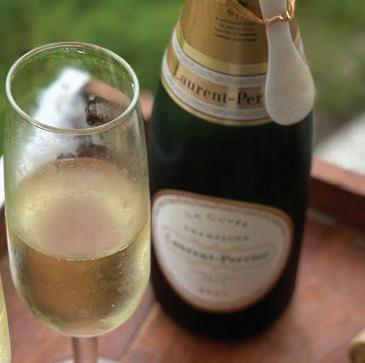


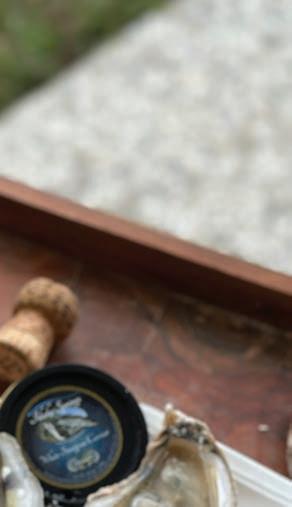



STORY BY B.C. RAUSCH

This year’s Defending Champion Burger, crafted by reigning RBC Heritage champion Scottie Scheffler, brings bold flavors to Fraser’s Tavern. Featuring a hand-pattied house blend of short rib, brisket and chuck, this chargrilled masterpiece is served on a toasted, hearth-baked, sesameseed bun and topped with crispy applewood bacon, melty pepper jack cheese, fried jalapeños and crispy onions, all finished with a zesty Old Bay aioli.
It seems it isn’t only the victors who reap the spoils. Since its debut three years ago, more than 4,400 Defending Champion Burgers have been served at Sea Pines Resort’s Fraser’s Tavern, turning this Masters Club Dinner-inspired tradition into a must-try for golf fans and burger lovers alike.
The first iteration of the burger, crafted by 2023 RBC Heritage champion Matt Fitzpatrick, featured a winning combination: a short rib, brisket and chuck patty served in a hearth-baked, sesame-seed bun, topped with applewood-smoked bacon, Swiss cheese and garlic herb aioli.
When Scottie Scheffler claimed the tartan jacket last year, he put his own fiery Texas spin on the recipe. Similar to his 2023 Masters Champions Dinner — where he treated golf’s elite to bold, Lone Star flavors — Scheffler stuck with the same highquality beef and crispy bacon but cranked up the heat. His Defending Champion Burger features pepper jack cheese, fried jalapeños, crispy onions and a zesty Old Bay aioli, mirroring the spice-forward profile of his Augusta National feast.













As Scheffler returns to defend his title this month, he’ll have the chance to refuel with his signature creation before teeing off in the first round of the 2025 RBC Heritage. And for those who haven’t had a bite yet, it’s not just a burger — it’s a chance to give back. With each burger sold ($19.95), $1 goes to a charity supported by the Heritage Classic Foundation.
Scottie Scheffler, the world's top-ranked golfer, has a penchant for bold, hearty comfort foods with a spicy kick. His Defending Champion Burger at Fraser’s Tavern is a perfect match for his flavor-packed palate.
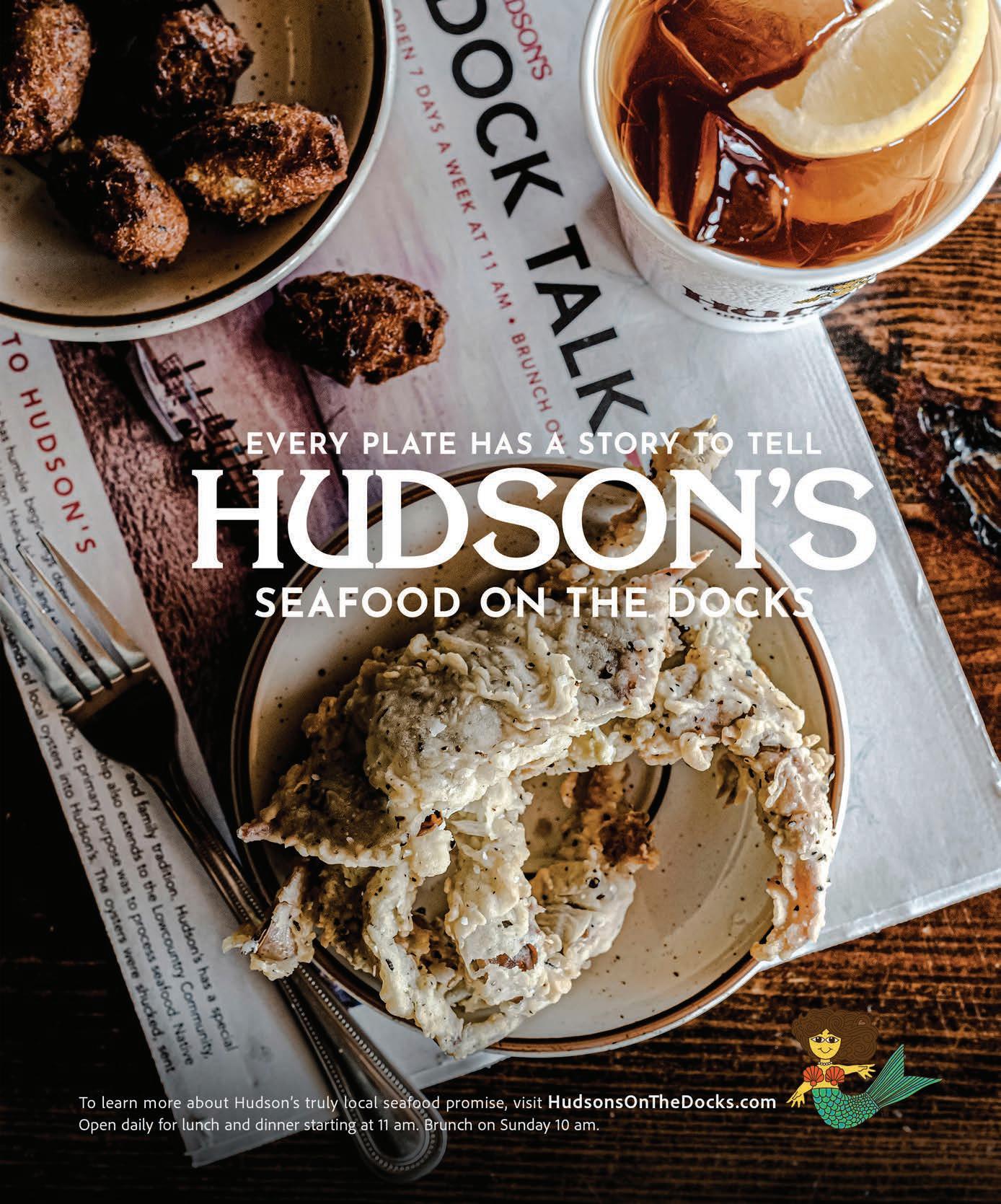

wWinning the Masters (April 10-13) comes with two distinguished honors: slipping into the legendary green jacket and hosting the exclusive Masters Club Dinner for past winners the following year. In 2023 Scottie Scheffler designed a menu that celebrated his Texas roots with bold, crowd-pleasing flavors — a feast worthy of Augusta National’s finest. And for 2025?
Possibly more of the same. During an October appearance on Golf’s Subpar podcast, Scheffler hinted that he might run it back for his April 8 dinner at Augusta National.
"I'm wondering if I should just have the same exact menu," he mused. "It was pretty good. It's all my favorite foods. I don't know really what I could do differently. I think it would be kind of fun just to have the exact same food."

For a golfer renowned for his consistency, the approach tracks — if the flavors (and the game) are dialed in, why change course? Bring some Masters magic to your own table with these dishes inspired by Sheffler’s winning Masters Club Dinner menu. LL


























Margaret Pearman is a certified sommelier under the Court of Master Sommeliers and curates the award-winning wine list at Charlie’s Coastal Bistro. Here is her sipping suggestion for April:
This exceptional Walla Walla Valley Cabernet is the perfect pour for celebrating traditions, old and new.
aA few years back, I had the pleasure of sitting down with Kevin Bozado of Hanatoro Winery. He was touring the South, introducing his family’s Cabernet Sauvignon from Walla Walla Valley, Washington. Even though the winery was far away, his roots had grown much closer to our local area. As the Senior Director of Club and Hospitality at Augusta National, Kevin has climbed the ladder of the hospitality industry, dedicated to delivering excellence. He found a great mentor in his stepfather, Steve Thomson, who has managed some of Oregon’s most prestigious wineries. Thomson has served as CEO of Cristom Vineyards since 2015 and was previously the Executive Vice President of King Estate from 1999 to 2015. It seemed only natural for the family to create their own wine.

With strong connections in the wine industry, Steve Thomson and his wife, Karen, invested in a vineyard project in 2004. The site was planted on a steep slope at 1,300 feet in elevation, featuring a unique microclimate characterized by cool winds and ancient basalt covered in volcanic loess soil. These conditions are ideal for Cabernet Sauvignon, Merlot, Cabernet Franc, Petit Verdot and Malbec. In 2010 Steve asked Kevin to partner with him to create Hanatoro. The name originates from a festival held in the ancient city of Kyoto, Japan, meaning "the path of light and flowers." It celebrates heritage, craftsmanship, community, beauty and honor. The Thomsons have become regular visitors of the festival over the years. They are committed to crafting a single bottling of the best grapes produced from the site each year, meaning the blend differs from vintage to vintage.
As members of the hospitality community, the Thomsons have focused distribution on high-end restaurants, resorts, private clubs and particularly the golf community. I regularly have the pleasure of seeing the Thomsons at Charlie’s, as they are part-time residents of our area. So as we celebrate our community’s gathering at the RBC Heritage golf tournament, it would only be fitting to open a bottle of Hanatoro and toast to the tradition we have created for our island.
In the Lowcountry, where the salty breeze is a way of life, it’s only fitting that cocktails follow suit. A salted rim isn’t just a garnish — it’s a game-changer!
From the tart refreshment of a Paloma to the vibrant allure of a Prickly Pear Margarita, these locally crafted cocktails prove that a pinch of salt can make all the difference. Cheers to a little salt — and a lot of flavor!

Bright, crisp, and effortlessly refreshing, this Paloma from Holy Tequila chef Michael Beeler swaps out tequila for Deep Eddy Grapefruit Vodka, offering a zesty twist on the classic.
INGREDIENTS
1 lime, cut into 6 wedges
2 ounces Deep Eddy Grapefruit Vodka Grapefruit Jarritos soda Coarse salt
DIRECTIONS [1] Muddle the lime wedges in a shaker. [2] Add Deep Eddy Grapefruit Vodka and shake well with ice. [3] Strain into a salt-rimmed glass filled with ice. [4] Top with Grapefruit Jarritos and enjoy.
A vibrant take on the classic Margarita, this version from Lauren Jordan at Cactus Street Cantina features the delicate sweetness of prickly pear syrup — derived from the fruit of the cactus, known as "tuna."

INGREDIENTS
2 ounces Lunazul Blanco Tequila
1 ounce Cointreau
1 ounce agave nectar
1/2 ounce prickly pear syrup (recipe below)
2 ounces fresh lime juice
Coarse salt
DIRECTIONS [1] Combine all ingredients in a shaker with ice and shake well.
[2] Strain into a salt-rimmed glass over fresh ice. [3] Garnish with a lime wedge and sip away!
INGREDIENTS
4-5 prickly pears (also known as cactus fruit or "tuna")
1 cup granulated sugar
3/4 cup water
1 tablespoon fresh lemon juice
DIRECTIONS [1] Wearing gloves, slice off both ends of each prickly pear. Make a shallow cut lengthwise and peel away the skin. [2] Cut the peeled fruit into chunks and blend until smooth. Strain through a fine-mesh sieve or cheesecloth into a saucepan, discarding seeds and pulp. [3] Add sugar and water to the saucepan with the prickly pear juice. Bring to a gentle simmer over medium heat, stirring occasionally, until the sugar dissolves completely (about 5 minutes). [4] Stir in lemon juice, then remove from heat and let cool. Transfer to a clean glass jar or bottle and refrigerate for up to 2 weeks.










The RBC Heritage Presented by Boeing returns to Hilton Head Island from April 14-20, bringing world-class golf, coastal charm and a weeklong celebration. As the first stop after the Masters, this fan-favorite tournament gives golf’s biggest names a chance to shake off Augusta’s pressure and embrace the relaxed yet competitive spirit of one of the PGA Tour’s most iconic events. Now a Signature Event with a stacked field, the RBC Heritage blends elite competition with laid-back Lowcountry vibes, making it a must-watch for golf fans worldwide. But here’s the thing — this tournament isn’t just about the golf. For locals it’s the ultimate social spectacle, a cherished spring tradition and a guaranteed reunion with familiar faces from tournaments past. The energy is electric, plaid is the unofficial uniform, and the Calibogue Sound provides a breathtaking backdrop to an unforgettable week. Whether you're following every leaderboard shake-up or are just there for the celebration, the RBC Heritage stands as the Lowcountry’s premier event of the year.

BIG CROWDS, BIG NAMES, BIG IMPACT Each year more than 100,000 spectators from across the U.S. and around the world descend upon Hilton Head Island to experience the RBC Heritage. Beyond the fairways, the event delivers a major economic impact, generating an estimated $134.9 million annually for South Carolina. As fans line the course, they witness a leaderboard stacked with golf’s biggest names and rising stars, all vying for the coveted plaid jacket on one of the most challenging and picturesque courses on the PGA Tour.

Scan this QR code for your all-access pass to the 2025 RBC Heritage Presented by Boeing. Discover prime viewing spots, must-have essentials, top food and drink options, special events, style tips, the best ways to get there, the ideal days to attend and more. Everything you need for an unforgettable tournament experience — right at your fingertips.











BACK-TO-BACK BRILLIANCE With his victory at last year’s RBC Heritage, Scottie Scheffler carved out a place in golf history, becoming the first player since Bernhard Langer in 1985 to win an event immediately following a Masters triumph. His win at Harbour Town came in just his second appearance at the tournament, improving on an impressive T11 finish in his 2023 debut. After securing the title, Scheffler was presented with the signature tartan jacket — though the fit was oversized to fit over three layers of clothing. Tournament organizers offered to send him a properly tailored version, but he opted to keep the roomy original. Given his now-famous post-Masters celebration, where he sported his green jacket at Inwood Tavern in Dallas, we can only assume the tartan was destined for its own night on the town.

RAISE A GLASS The Elijah Craig Speakeasy is one of two exciting new, on-course lounges debuting at this year’s RBC Heritage. Offering a stylish retreat for fans, this exclusive tent at 1&9 Village will serve four signature cocktails in a relaxed lounge setting, providing the perfect spot to sip and socialize while taking in the tournament action.
This year’s tournament introduces additions to enhance the spectator experience. On-course lounges will provide premium drinks and social settings, including the new Lunazul Tequila Cantina and Elijah Craig Speakeasy, joining returning favorites like the Tito’s Stillhouse and the Michelob Ultra Bar. Beyond the golf, these standout events will add to the tournament’s unique charm:

Bluffton’s own Stee, a fan favorite from The Voice (Season 24), will set the stage with his rendition of the National Anthem during the opening ceremony at noon on April 15 at the 18th green.
Easter Sunday brings festive giveaways and photo ops with the Easter Bunny and Sir William Innes, the tournament’s tartan-clad mascot.





At the RBC Heritage the opening ceremonies end with a bang — literally. The tournament’s signature cannon shot blends history with the excitement of the game. Last year, 2023 champion Matt Fitzpatrick took the honors. This year, it’s defending champion Scottie Scheffler’s turn. As the replica 18th-century cannon fires, he’ll launch a golf ball into the Calibogue Sound, officially signaling the start of South Carolina’s premier golf event.
This innovative fan experience allows spectators to hear the crisp sound of a tee shot through headphones, offering a whole new perspective on the game.






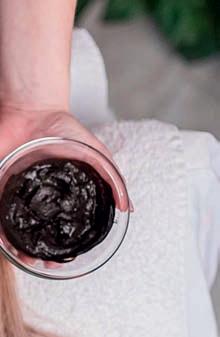
Over $1000!

Our Luminosity Skin Glow
Our Eartherapy Mud Bath
Alleviate tension with our Signature Tranquility Massage
and drinks by Healthy Habit
The Eartherapy Signature Lux Facial with Calming Scalp Massage
Finish the day with our Soothe the Soul Foot Massage
And, you get to keep your plush Moor Spa Hilton Head robe after your day
$100 gift card from Birdie James






Offering Custom Made Clothing and Tuxedo Rentals


monday-friday 10am-5:30pm saturday 10am-4pm
village at wexford, suite j4b
hilton head island
843-715-0713

ELEVATED EXPERIENCE Now featuring two stories, the Calibogue Club is located between the 17th green and the 18th tee, with a satellite location at the 8th green. Tickets are $575 per day and include a climate-controlled venue with indoor/outdoor seating, a complimentary lunch buffet, a full-service bar with snacks and VIP parking.
Spectators can now take advantage of concession-stand gift cards, making it easier to grab a bite at one of the nine concession stands or surprise a friend with a meal. Partnering with SERG Restaurant Group, the tournament is adding to its culinary offerings, including an expanded menu and seating area near the 17th hole. For those seeking a premium viewing experience, the Heritage Lawn Club ($275) debuts as a private venue with panoramic views of the Calibogue Sound, the 18th tee and the Heritage Lawn, offering exclusive food and beverage service. Meanwhile, the ever-popular Calibogue Club ($575) has expanded into a two-story structure, providing even better sightlines of the action.
Doc’s BBQ at 15: Located just behind the 15th green, this is as close as you can get without swinging a club. Feel the energy of the tournament while enjoying prime views from tiered seating, plus a climatecontrolled lounge perfect for a midday cool-down. A $375 per day pass includes a complimentary lunch buffet, full-service bar with snacks and an unbeatable spot to soak in the action.

Lighthouse Club: Perched on the legendary 18th green, this two-story, open-air skybox serves up some of the best views in the game. With a $475 per day ticket, you'll also score access to the observation deck at the 10th green, along with a complimentary lunch buffet and a full-service bar stocked with snacks. This is where unforgettable finishes are witnessed in style.

SPECTATE IN STYLE An artist’s rendering unveils the Heritage Lawn Club, an exclusive new private venue that will offer 360-degree views of the Calibogue Sound, the 18th tee and the Heritage Lawn. This open-air retreat provides a premium spectator experience, blending stunning scenery with top-tier amenities. Tickets are $275 per day and include two drink vouchers with food and additional beverages available for purchase inside the venue.
Ultimate Patron Pass: The “all-access, allin” golden ticket for those who want it all. At $1,000 per day, this VIP pass grants you entry to Doc’s BBQ at 15, the Lighthouse Club and the Calibogue Club, plus on-site parking. If you want to experience the tournament from every prime vantage point, this is your pass to the best seats in the house.


As a former violent crimes prosecutor for the State of South Carolina, Ben’s extensive trial and complex litigation experience brings a unique perspective to your personal injury or insurance bad faith case.
Scan for a free and con dential initial consultation.




For fans who live for the leaderboard drama, the PGA Tour app offers real-time, “inside-theropes” access with live leaderboards, play-by-play updates, video highlights, in-depth stats and 3D shot tracking — a must-have whether you're roaming the course or watching from home. If you're on-site, keep up with every clutch putt and leaderboard shake-up by checking the video boards at 1&9 Village, Heritage Lawn and the 15th green. Sustainability remains at the heart of the tournament, with Coca-Cola’s recycling initiatives and Palmetto Electric’s green energy support powering the event for a 17th consecutive year. Even the event T-shirts worn by Bluffton High’s football ecology team are made from recycled materials.





We help successful business owners and affluent families make good decisions with their wealth:

The Village at Wexford Hilton Head Island 843.420.1993
infohh@allianceg.com agplowcountry.com




















No matter which of our championship, Fazio-designed courses you choose to play on any given day - Devil’s Elbow South or Devil’s Elbow Northyou’ll soon discover that it’s in the details, and the immaculate and immediate attention our professional crews pay to each and every one of them, that combine to create an unparalleled Lowcountry private golf lifestyle experience. Perfected practice facilities, a professionally staffed and fully-equipped Golf Shop, and member tournament events are a matter of course when you live and play in Moss Creek.
Beyond the fairways, the RBC Heritage extends its impact far into the community. The tournament supports nearly 100 registered charities, with a strong focus on the Heritage Classic Foundation Scholarship Endowment Fund for 2025, which provides needsbased scholarships to local students. Since 1987, $56.9 million has been distributed to those in need across South Carolina and Georgia. In 2024 alone, nearly $4 million was awarded to charitable organizations, the arts, medical institutions and college scholarships.

SERVICE ABOVE SELF Each year, the Rotary Club of Hilton Head Island contributes over 150 volunteers, collectively logging more than 2,000 hours of service at the RBC Heritage.










A record-breaking 1,700 volunteers will be working behind the scenes to ensure the RBC Heritage remains one of the smoothest-run and most communitydriven tournaments on the PGA Tour. Volunteers play a vital role, and nearly anyone can participate — as long as they’ll be within 1 1/2 hours of Hilton Head Island during tournament week and can commit to at least 16 hours (or four shifts, depending on the role). Some positions require additional training, and there is a $125 volunteer registration fee, which includes an official RBC Heritage volunteer uniform (hat, jacket, shirt and badge), a meal ticket for each shift (redeemable at any concession stand), preferred parking with shuttle transportation, an invitation to the Volunteer Appreciation Party and the opportunity to purchase discounted tickets. Interested in joining the team? Email volunteers@heritageclassicfoundation.com to join the waiting list.

TUESDAY, APRIL 15
Opening Ceremony, 18th green, noon Pro practice rounds, all day
WEDNESDAY, APRIL 16
RBC Heritage Pro-Am, 7 a.m.-5 p.m.
RBC Heritage Golf Outing (no pros), 12:30 p.m.-6 p.m.
THURSDAY, APRIL 17
First round: 7:45 a.m.-6 p.m.
FRIDAY, APRIL 18
Second round: 7:45 a.m.-6 p.m.
SATURDAY, APRIL 19
Third round: 7:45 a.m.-6 p.m.
Plaid Nation Games, Heritage Lawn, noon-2 p.m.
SUNDAY, APRIL 20
Easter Sunrise Service, Liberty Oak, 7:30 a.m.
Final round: 7:45 a.m.-6 p.m.

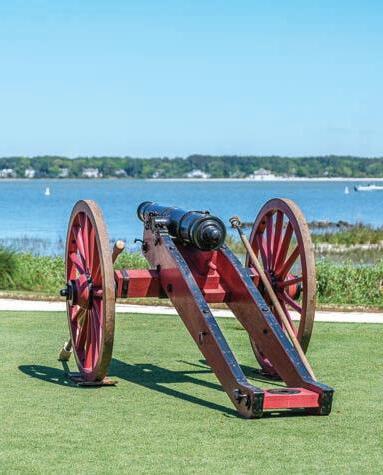


First round: Thursday, April 17
The Golf Channel, 2-6 p.m.
Second round: Friday, April 18
The Golf Channel, 2-6 p.m.
Third round: Saturday, April 19
The Golf Channel, 1-3 p.m.
CBS, 3-6 p.m.
Final round: Sunday, April 20
The Golf Channel, 1-3 p.m. CBS, 3-6 p.m.




THE PGA TOUR SHARES THE WEATHER DECISIONS BEHIND LAST YEAR’S RBC HERITAGE
PHOTOS BY ARNO DIMMLING

aA late-afternoon storm disrupted last year’s RBC Heritage, halting play on Sunday for more than two and a half hours and ultimately forcing a Monday finish — one that unfolded without spectators. The delay frustrated not only golf fans but also some of the world’s top players, who, after enduring a challenging two-week stretch that included the Masters followed by a Signature Event, found themselves spending an extra night in a hotel instead of heading home.
With nearly every weather forecast predicting the storm, why didn’t the PGA Tour adjust the final-round tee times in advance? To find out, we reached out to Gary Young, senior vice president of rules and competitions for the PGA Tour, for insight into the decision-making process.
[LOCAL Life] Are tee times locked in due to CBS’s TV contract, or does the PGA Tour or tournament officials have flexibility to adjust them based on weather forecasts? [Gary Young] Tee times are not “locked in” by contract with our broadcast partners. Teetime decisions will always be made based on the goal of achieving 72 holes by end of the scheduled final day (normally Sunday).
[LL] What factors determine whether tee times can be adjusted due to weather concerns? [GY] The probability of inclement weather and its potential impact on the goal of achieving 72 holes has the greatest impact on adjusting the scheduled times.



Xander Schauffele battles the elements in this photo from last year’s RBC Heritage. After overcoming a slow start with an opening-round 72, the PGA Tour star surged back into contention with impressive rounds of 64 and 67. However, Sunday’s soggy conditions proved challenging, as he closed with another 72, finishing in a tie for 18th place.




[LL] Does the PGA Tour have a designated meteorologist or weather-advisory team, and how do they influence decisionmaking? [GY] The PGA Tour has a contracted meteorologist on-site from Monday to the end of each tournament. This team has worked with the PGA Tour for decades.
[LL] Was there any discussion last year about moving up the final-round tee times to finish before the storm? [GY] There was no discussion of moving up times for the final round in 2024 once we had the forecast from our on-site meteorologist. On Saturday afternoon we had a meeting, and his confidence level was low (approximately 50 percent at the time) to meet our threshold for a change in schedule. Normally, we would need a greater than 60 percent chance to begin those discussions.
[LL] How much input do tournament officials or others have in weather-related scheduling decisions, or is it entirely a PGA Tour decision? [GY] When those discussions are necessary, a meeting will take place between the PGA Tour chief referee in charge of the competition and the other key stakeholders. This would include RBC Heritage tournament officials, the sponsor and our broadcast partner. Ultimately the PGA Tour will make the final decision, with careful consideration of all the stakeholders' interests being considered.
[LL] Are there any changes in place for 2025 to handle weather delays differently?
[GY] There are no changes planned for the 2025 event, and we will follow our normal protocols.










































No one can predict the future - that’s why we have insurance.







As an independent insurance agency, we do the di cult work of finding the best rates and coverages for your specific needs. We want you to spend less time worrying if you’re properly insured and more time enjoying your life. No one can predict the future, but Kinghorn Insurance Agency can make sure it’s protected.















The RBC Heritage has faced its fair share of weather-related delays and suspensions, with Mother Nature often shaping the tournament’s outcome. From torrential downpours to hazardous storms, players at Harbour Town Golf Links have had to navigate unpredictable conditions, testing both their skill and patience.






2024: A Monday finish for the World No. 1 A late-afternoon storm on Sunday forced a more than two-hour suspension of play, ultimately pushing the final round to Monday — without spectators. Scottie Scheffler, riding the momentum of his Masters victory the previous week, remained unfazed. The World No. 1 carded a 19-under total to secure his 10th PGA Tour title, finishing three strokes ahead of Sahith Theegala. The victory marked Scheffler’s fourth win in five starts, solidifying his dominance in the game.
2020: A weather delay in a historic year During a turbulent year that saw the tournament moved to June due to the Covid-19 pandemic, the RBC Heritage endured yet another challenge — severe storms. Play was suspended in the final round due to dangerous weather, forcing a delay in the tournament’s conclusion. Webb Simpson, undaunted by the disruption, set a tournament record with a 22-under 262, edging out Abraham Ancer by one stroke. The victory marked Simpson’s second PGA Tour title of the season.
2019: A stormy start, a first-time champion Severe thunderstorms forced an evacuation of the course on Thursday afternoon, halting play as lightning and heavy rain swept through Hilton Head Island. Despite the early setback, C.T. Pan navigated the challenges of Harbour Town to claim his first PGA Tour victory. With a final score of 12-under 272, he edged out Matt Kuchar by a single stroke, marking a breakthrough moment in his career.
2014: Kuchar’s buzzer-beater victory A washout on Friday afternoon forced a delay in the second round, disrupting the tournament schedule. However, Matt Kuchar found a way to seize victory in dramatic fashion. With Luke Donald in contention, Kuchar holed a stunning bunker shot on the 18th hole in the final round to claim the plaid jacket. His 11-under 273 secured a onestroke win, capping off a thrilling finish.
1980: A Monday playoff in the rain Relentless rain plagued the 1980 tournament, turning Harbour Town into a soggy test of patience and skill. The adverse conditions stretched play into Monday, forcing the tournament’s first-ever playoff. After 72 grueling holes, Doug Tewell and Jerry Pate battled it out on an extra hole, with Tewell ultimately prevailing to claim his maiden PGA Tour victory.
1972: Miller prevails in a rain-soaked battle The 1972 tournament was defined by persistent rain, which led to multiple stoppages and tested the endurance of the players. Johnny Miller, known for his precision ball-striking, navigated the wet conditions better than the rest of the field. His steady play earned him a 3-under 283, securing the title by a single stroke in a battle against the elements.







HOW THE WORLD’S BEST GOLFERS DEAL WITH THE ELEMENTS AT HARBOUR TOWN.
Harbour Town Golf Links is known for its tight fairways, small greens and strategic design, but one of the biggest factors influencing play each year isn’t the course itself — it’s the weather. From swirling coastal winds to unpredictable late-afternoon storms, the elements often play a crucial role in determining the champion.

One of the most notorious weather-related challenges at Harbour Town comes on the 18th hole, a long par 4 that runs along the Calibogue Sound. The hole is famous for its iconic lighthouse backdrop, but it’s also where golfers must contend with the unpredictable coastal winds that sweep across the water.
Late-afternoon winds: By the time players reach the final stretch of their round, the wind is often at its strongest. The prevailing breeze usually comes from the southwest, but it can swirl unexpectedly, making club selection and shot-shaping a challenge.
Off-the-tee dilemma: The fairway is wide, one of the widest on the tour, but the left side brings the water into play, while the right side is lined with spectators. Players must decide whether to play aggressively or take a safer approach, depending on the wind direction.
The approach shot: With the green positioned right along the shoreline, approach shots are often at the mercy of crosswinds that can knock the ball off course. Some years a strong headwind has forced players to club up significantly, while in calmer conditions balls can release too much on the firm green.

Unlike inland courses, Harbour Town Golf Links is heavily influenced by the coastal environment, creating conditions that can change throughout the day:
Mornings: Calm, with little wind and mild temperatures — often the best scoring conditions of the day.
Midday: Temperatures warm up, and the wind begins to pick up, particularly in exposed areas near the water.
Afternoon: The breeze intensifies, often affecting backnine scoring. Players with later tee times face more difficult conditions than those who teed off earlier.
Storm threats: April is generally dry, but fast-moving cold fronts can bring pop-up showers and thunderstorms.
The best players understand that Harbour Town is a second-shot course, meaning precision is more important than power. Some ways they adjust for weather conditions include:
• Teeing the ball lower to control trajectory on windy holes.
• Shaping shots against the wind to avoid being carried off-line.
• Adjusting putting speeds on greens that can dry out and firm up in breezy afternoon conditions.
• Planning club selection carefully based on wind direction and strength — especially when approaching greens near the water.
Hilton Head in mid-April typically experiences mild and pleasant spring weather, making it an ideal setting for the RBC Heritage. Here’s what you can generally expect based on historical weather patterns:
Temperatures: Highs usually range from 72-78, with lows in the mid-50s to low-60s.
Humidity: Moderate humidity, but not as intense as in the summer months.
Rainfall: April is one of the drier months, but scattered showers and occasional thunderstorms are possible, especially in the afternoons.
Wind: Coastal breezes are common, with average wind speeds of 7-12 mph.
Storm risk: Severe storms are less frequent than in summer, but quick-moving cold fronts can bring rain. LL

Community Foundation of the Lowcountry is proud to partner with the Heritage Classic Foundation (HCF) for the Heritage Classic Foundation Scholarship Endowment Fund.
Every year, HCF awards scholarships to 11 deserving high school seniors from Beaufort or Jasper County. Since the program began in 1993, HCF has distributed $5.4 million in scholarships to 386 students.
The scholarship endowment fund’s purpose is to increase needs based scholarships available to local students, while ensuring HCF Scholar Program’s growth and longevity. You can make an impact on local students by supporting the Heritage Classic Foundation Scholarship Endowment Fund.





aApril is a fantastic time to visit Boston, as the city shakes off the winter chill and welcomes spring with blooming cherry blossoms, bustling farmers' markets and the excitement of the Boston Marathon (April 21). The Charles River Esplanade, Public Garden and Arnold Arboretum burst into color, making it an ideal season for strolling and sightseeing.
With mild temperatures and longer daylight hours, visitors can comfortably explore iconic neighborhoods like Beacon Hill, the North End and Back Bay. The city’s rich history comes to life along the Freedom Trail, and baseball season kicks off at Fenway Park, bringing a lively energy to the streets. Boston’s renowned food scene is also in full swing, with fresh New England seafood, Italian specialties and classic lobster rolls, perfect for outdoor dining.
Whether you're cheering on marathon runners, admiring spring blooms or indulging in Boston’s culinary delights, April offers the perfect blend of energy and charm. Plus, with an easy nonstop flight from Savannah/Hilton Head International Airport, a springtime getaway to Boston is more convenient than ever — making it the perfect time to experience all the city has to offer.

Traveling from Savannah/Hilton Head International Airport (SAV) to Boston Logan International Airport (BOS) is direct and convenient. Delta and JetBlue offer daily nonstop flights, while Southwest, American and United offer one-stop flights. Starting May 22, Allegiant Air will offer nonstop flights with fares as low as $59 one-way. Once you land, reaching downtown Boston is a breeze. The MBTA Silver Line bus offers a free transfer to South Station, while taxis and rideshares take around 15 minutes, with fares averaging $25-$40. For a scenic arrival, consider taking the Logan Airport Ferry to Long Wharf.
Boston in April sees temperatures ranging from the mid-40s to mid-60s, with occasional rain showers. Pack accordingly:
• Light layers: A jacket or sweater for cooler mornings and evenings.
• Comfortable walking shoes: Essential for exploring the city on foot.
• Rain protection: An umbrella or light raincoat for April showers.
• Sunglasses and sunscreen: Spring sunshine in Boston can be surprisingly strong.


A must-do checklist to make the most of your trip:
• Freedom Trail: Walk through 16 historic sites, from Paul Revere’s House to the Old North Church.
• Boston Public Garden: Enjoy the first blooms of spring and a ride on the famous Swan Boats.
• Fenway Park: Catch an early-season Red Sox game, and experience the excitement of baseball season.
• Boston Marathon Finish Line: Vist Copley Square on April 21, and soak in the spirit and atmosphere of the world's oldest annual marathon.
From scenic strolls to cultural gems, Boston in April is brimming with experiences:
• Explore Beacon Hill: Stroll through one of Boston’s most charming neighborhoods, with gas-lit streets and historic brownstones.
• Visit the Boston Marathon Expo: Held in the days leading up to the race, this event is perfect for running enthusiasts.
• Take a harbor cruise: Enjoy a fresh perspective of the city from the water.
• Walk the Esplanade: Breathe in fresh spring air along the Charles River.
• Tour Harvard University: Take a student-led tour of this iconic Ivy League campus in nearby Cambridge.
• Visit the New England Aquarium: A great indoor escape featuring fascinating marine life.
• Catch a spring concert or theater show: Boston’s arts scene is vibrant in April, with performances at the Boston Symphony Orchestra and Wang Theatre.
• Explore the Boston’s public markets: Try seasonal local produce, fresh seafood and artisanal treats.
• Clam chowder: A must-try comfort dish, best enjoyed at Union Oyster House or Neptune Oyster.
• Lobster rolls: Hot buttered or chilled with mayo? Try both at James Hook & Co.
• Italian pastries: Head to Mike’s Pastry or Modern Pastry Shop in the North End for an authentic cannoli.
• Boston baked beans: A historic dish, best sampled at Bostonia Public House.
• Fenway Franks: Nothing says springtime in Boston like a hot dog at Fenway Park.
• Oysters: Savor fresh, locally harvested oysters at Row 34, The Capital Grille or Boston Sail Loft.
• Spring cocktails: Sip a refreshing Pimm’s Cup at Yvonne’s.
• Famous bars: Grab a drink at iconic spots like Cheers or Bukowski Tavern for a taste of Boston’s bar scene.
• Dunkin’ coffee: Bostonians love their Dunkin’ — try a classic iced coffee as the weather warms up!




From historic hotels to modern retreats, Boston offers a variety of stays:
• The Liberty Hotel: ($400+) A former jail turned luxury hotel in Beacon Hill.
• The Langham, Boston: ($350+) Elegance meets comfort in the heart of downtown.
• The Eliot Hotel: ($320+) A boutique Back Bay hotel with Old World charm.
• The Godfrey Hotel: ($250+) Stylish and centrally located in Downtown Crossing.
• Use the MBTA: Boston’s subway (the T) is the best way to get around. A CharlieCard makes travel easy.
• Walk when possible: Many attractions are close together, so exploring on foot is ideal.
• Try a city pass: The Go Boston Card offers discounts on major attractions.
• Explore beyond downtown: Visit Cambridge, Jamaica Plain and Charlestown for a different side of the city.
• Useful Boston apps: MBTA Transit for public transport, Bluebikes for bike rentals, SpotHero for parking, Freedom Trail for history and Toast Takeout for food. LL
WeAreInvested
•YourReal
•YourSatisfaction
•Your
Ken
•
•
•C ommitment
• D
• Support
•
•
•C
•
•
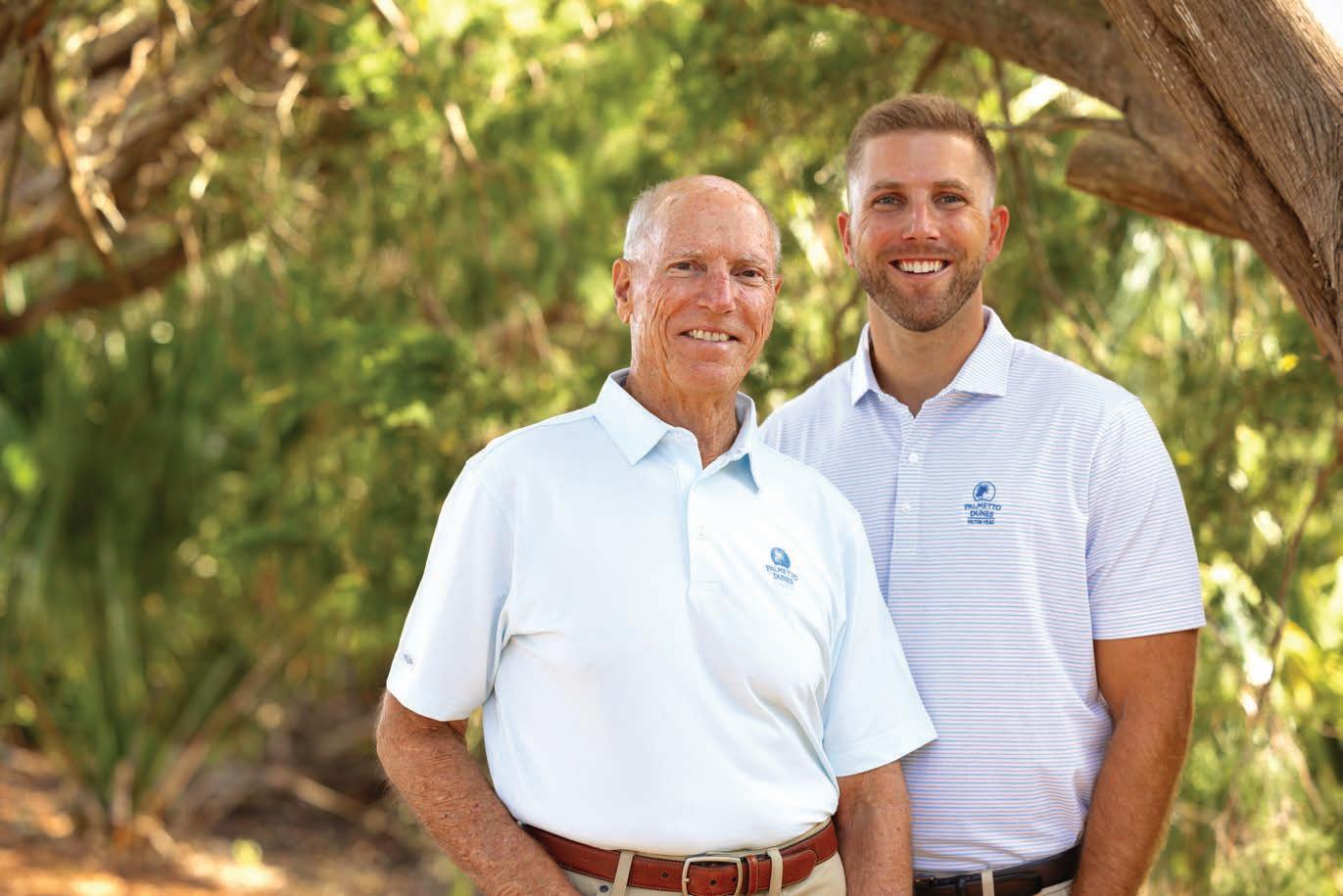






When: Times vary, April 23-June 1
Where: Arts Center of Coastal Carolina
Details: Featuring music and lyrics by Grammy Award-winner Sara Bareilles, Waitress celebrates dreams, the family we choose and the beauty of a well-baked pie. artshhi.com


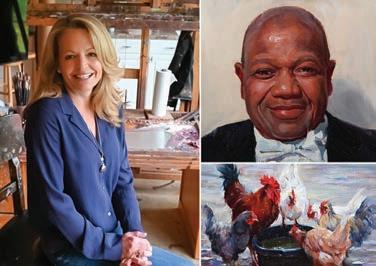
When: Times vary, April 23-26
Where: FLOW Gallery + Workshop
Details: Kelly Brewer is this month’s featured artist. Purchase her work or attend a workshop. palmettobluff.com
When: Times vary, April 1-May 7
Where: Coastal Discovery Museum
Details: Check out the work of local rising artists at this annual exhibition. coastaldiscovery.org

When: Times vary, April 6-May 3
Where: SOBA Gallery
Details: Janet Stevens is this month’s featured artist. See her work and attend the reception from 4-6 p.m. on April 11. sobagallery.com
When: Times vary, April 8-May 9
Where: Art League of Hilton Head
Details: Frank Gorman is this month’s featured artist. Attend the reception from 5-7 p.m. on April 9. artleaguehhi.org

exhibit: Harriet Tubman statue “Journey to Freedom”
When: Times vary, now-April 30
Where: Historic Mitchelville Freedom Park


Details: This powerful exhibition offers an immersive and educational experience highlighting Tubman’s heroic efforts in leading enslaved people to freedom and her enduring impact on history. exploremitchelville.org
exploremitchelville.org






When: Times vary, now-April 30
Where: Coastal Discovery Museum
Details: EMROSE Projects presents a two-person art exhibition featuring works by Keith Crowley and Emma Barnes. emroseprojects.com


SUNDAY, APRIL 6, 2025 | MONDAY, APRIL 7, 2025
Jeri Lynne Johnson, Conductor
Adé Williams, Violin
Michael Abels More Seasons
Felix Mendelssohn Symphony No. 4, “Italian”
Antonio Vivaldi The Four Seasons
“Johnson’s conducting is both stylish and powerful” — Philadelphia Inquirer
“Adé is a Chicagoland wunderkind … known not only as a one-name performer but also as one singular sensation … played with a sweet tone and strength of character.”
— The Grand Rapids Press

SUNDAY, APRIL 27, 2025 | MONDAY, APRIL 28, 2025
John Morris Russell, Conductor
Enrique Graf, Piano
Claude Debussy Prélude à “L’après-midi d’un faune” (Prelude to the Afternoon of a Faun)
Wolfgang Amadeus Mozart Piano Concerto No. 17
Claude Debussy La Mer (The Sea)
“One of the brilliant pianists of our times.”— The Washington Post

Tickets are available now. Visit hhso.org or call (843) 842-2055.



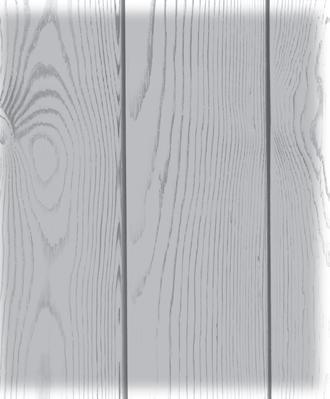










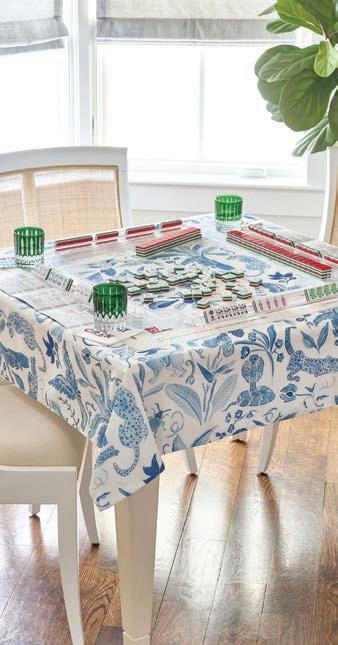


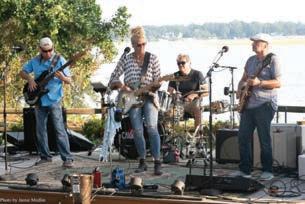
When: 5:30-9:30 p.m., April 26
Where: Oyster Factory Park
Details: Kick off the season of Bluffton Sunset Parties with live music from Horan Brothers and Chilly Willy Band, great food, good vibes and more. bearfootsports.com
When: 5:30-8:30 p.m., April 26
Where: Port Royal Sound Foundation
Details: Experience the spirit of Kenya at this Libraries for Kids International event, where you’ll enjoy delicious food, an open bar and conversations with those passionate about making a positive impact. libraries4kids.org



The Lowcountry is full of family-friendly activities to celebrate Easter. Here’s a list of some places hosting community Easter egg hunts, face painting, games, music, food and more:
HOP TO IT!
Easter Eggstravaganza: 10 a.m.-1 p.m., April 12, Shelter Cove Park, HHI
Community Easter Egg Hunt: 11 a.m.-1 p.m., April 12, Grace Community Church
Eggstravaganza Easter Egg Hunt: 11 a.m.-1 p.m., April 12, Downtown Hardeeville
Easter Fun Day: 2-5 p.m., April 19, Naval Heritage Park, Port Royal
Bluffton Easter Egg Hunt: 2-5 p.m., April 19, Bluffton High School
Ark in the Park: 12-5 p.m., April 19, Alston Park Drive, Bluffton

Port Royal Soft Shell Crab Festival
When: April 19







Where: Downtown Port Royal



























Details: Enjoy a day filled with delicious seafood, live music, arts and crafts, family fun and, of course, plenty of soft shell southcarolinalowcountry.com
























Indulge in one of these upcoming dinners or tastings at Nunzio Restaurant + Bar. For a complete list, visit nunziohhi.com
UPCOMING EVENTS
Theoleo Wine Tasting: 4 p.m., April 10
Easter Sunday at Nunzio: 1 p.m., April 20

Exciting events are happening this month at Sprout Momma. Find a dinner or class perfect for any taste at sproutmomma.com
UPCOMING EVENTS
Bread Class: 10 a.m.-noon, April 5
Jeff Beckman Wine Dinner: 6 p.m., April 24
Bourbon Dinner with Burnt Church Distillery: 6 p.m., May 1

When: 6 p.m., April 24
Where: Charlie’s Coastal Bistro
Details: Savor wines from Du Mol Winery paired with a specially curated meal by Chef Joe. charliesgreenstar.com

& pub nights
Sip, savor and shop at one of these upcoming tasting events at Honey & Thistle. For a complete list, visit honeyandthistlehhi.com
UPCOMING EVENTS
First Friday Wine Preview Party: 4-6 p.m., April 4 & May 2
Second Monday Pub Night: 5-7 p.m., April 14
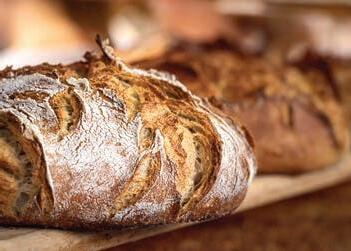
Expand your culinary skills at the Culinary Institute of the South. Classes run from 10:30 a.m. - 1:30 p.m. tcl.edu
UPCOMING CLASSES
April 12: Vegan Recipes: Because Broccoli Has Feelings Too April 25: Get Your Jam On with Jambalaya



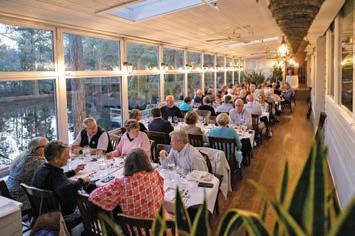
Enjoy the finest culinary delights at one of these upcoming dinners at Alexander’s Restaurant & Wine Bar. Sign up at alexandersrestaurant.com
UPCOMING DINNERS
Easter Sunday at Alexander’s: April 20
Banfi Wine Dinner: 6-9 p.m., April 24

When: 2-5 p.m., first Friday of every month
Where: Big Jim’s BBQ, Burgers & Pizza
Details: The first Friday of each month features a tap takeover showcasing three Southern Barrel Brewery draft beers. palmettodunes.com

When: 1-3 p.m., Saturdays
Where: Kung Fu Cantina
Details: Sign up for an intimate, 10-person sushimaking class at Kung Fu Cantina. kungfucantina.com






Here are the April happenings at The Salty Dog Cafe. For a complete list, visit saltydog.com
UPCOMING EVENTS
April 12: Grilled Cheese If You Please! Celebration April19: Easter Eggstravaganza & Waterfront Breakfast
From your home to our airport – in a just a short drive. Enjoy the convenience of a 10-minute drive to the airport, quick check-in and easy parking at the Hilton Head Island airport. With nonstop flights to hub cities and one-stop connections worldwide, you can get to anywhere you need to be, on your choice of major airlines – right from our island’s own airport.



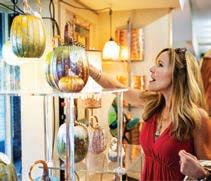


APPAREL / JEWELRY / GIFTS / ART
A Coastal Christmas • Nash Gallery • Neptune’s Niche Pure Salt Studios • Southern Tide Signature Store Tradewinds Trinkets & Treasures • Treasure Island
DINING / TREATS
Bistro 17 • Daily Café • ELA’S On The Water • Scott’s Fish Market
Frosty’s Ice Cream • Hilton Head Social Bakery • San Miguel’s
Top Dawg Tavern & Pizzeria
LIVE ENTERTAINMENT AT PARTICIPATING RESTAURANTS
SERVICES
Harbourmaster’s O ce/Ship’s Store
Memory Lane Portraits • Pure Salt Studios • Salon Shelter Cove
BOATS / MARINE
Harbourside Yacht Sales • Ship’s Store/Marina O ce
REAL ESTATE / VILLA RENTALS
Palmetto Dunes/Shelter Cove Villa Rentals • Dunes Real Estate
Harbourside III • Trident Villa Rentals
TOURS, FISHING & WATER SPORTS
Marina Charters & Water Sports Kiosk • Outside Hilton Head

FREE ADMISSION!

LIVE MUSIC plus two restaurants featuring light appetizers & drink specials for purchase.
THURSDAYS • 6-9 P.M. **NO COOLERS OR OUTSIDE FOOD & BEVERAGES PERMITTED**
April 3: Deas Guyz
April 10: Deas Guyz
April 17: Target (with Headliner Horns)
April 24: Deas Guyz
May 1: Target (with Headliner Horns)
May 8: Deas Guyz
May 15: The Nice Guys
Subject to change without notice. Weather permitting.

Sign up for one of these April races to support a good cause and stay in shape.
UPCOMING RACES:
Cats Me If You Can 5K Run/Walk: 8 a.m., April 5, Mitchelville Freedom Park
PULSEology Golden Egg 5K: 8:30 a.m., April 5, Buckwalter Place Park
Sea Pines Dolphin Dash 5K: 8 a.m., April 10 & 17, Sea Pines Beach Club
Plaid Nation 5K: 9 a.m., April 12, Lowcountry Celebration Park
Resource Foundation of Jasper County 5K Run: 8:30 a.m., April 12, Board of Disabilities & Special Needs, Ridgeland
Palmetto Dunes Turtle Trot 5K: 8 a.m., April 16, Dunes House
PRC Earth Day Scavenger Pub Run: 6 p.m., April 22, The Bank
PRC Ladies Only Beach Yoga and Run/Walk: 7 a.m., April 27, Coligny Beach Park

When: April 22
Where: Various locations
Details: Join The Outside Foundation for a community-wide litter cleanup covering all 12 miles of beach and other natural spaces on the island. earthdayhhi.com
The Palmetto Bluff Conservancy hosts tours, classes, workshops, programs and field trips to promote conservation. Visit palmettobluff. com/conservation for a full schedule.
UPCOMING EVENTS:
Snakes of the Lowcountry: 6-7 p.m., April 4
Brown Bag Lunch: Living with Alligators: 12-1 p.m., April 16













— Clark & Shari H






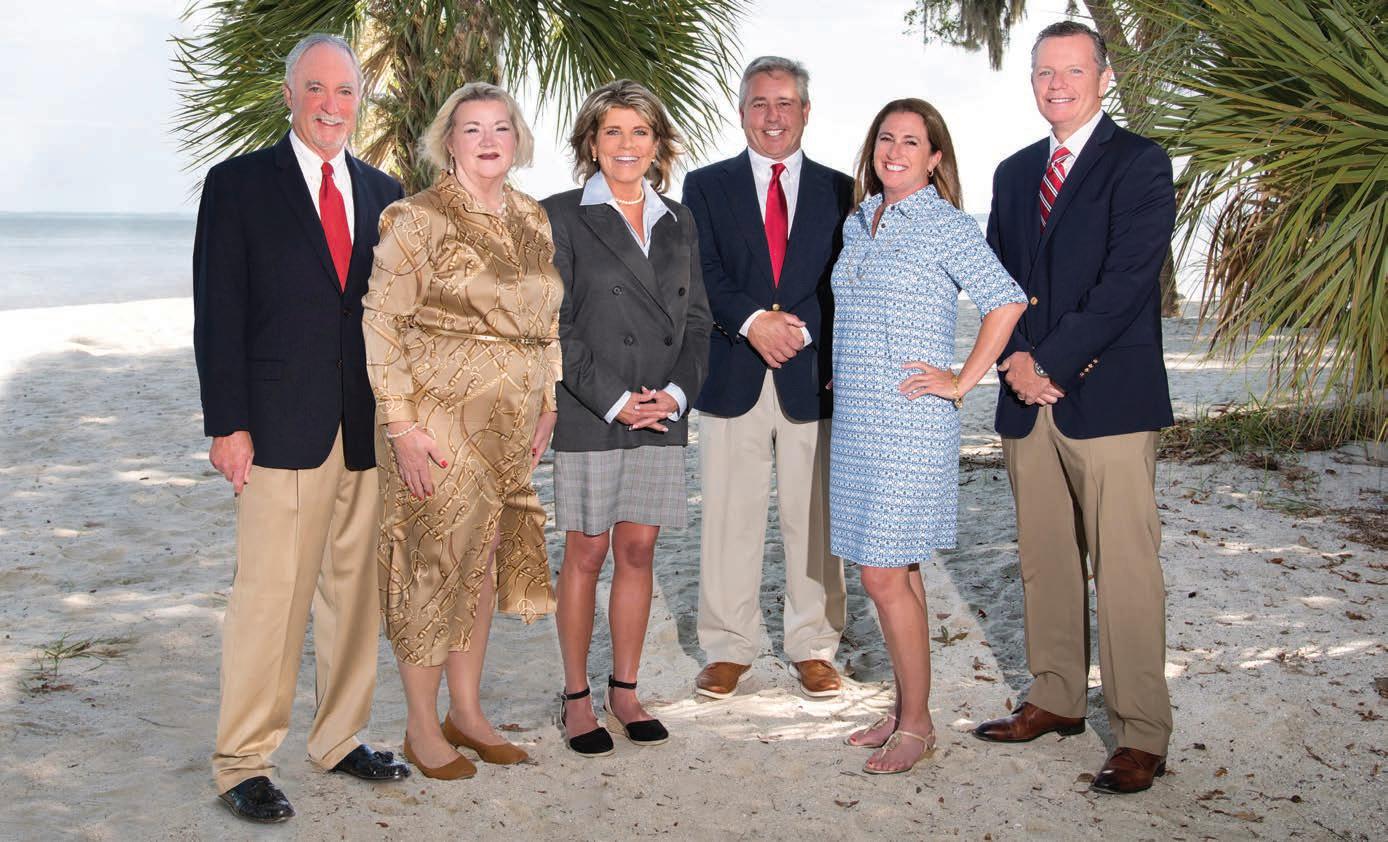







• Increased growth and color of your lawn
• Reintroduces micro-organisms and organic matter back into your lawn
• Reduces stress fromfoot traffic
• Helps lawn fill into thinner areas
• Helps retain nutrients in soil and delivers them to the plant.
• Improved air exchange between soil and atmosphere
• Improved drainage and soil water rate absorption
• Improved fertilizer uptake and use
• Stronger turfgrass roots and root growth
• Reduced soil compaction
• Reduction of the thatch layer

• Healthier more durable lawn
• Allows room for grass to fill in thicker



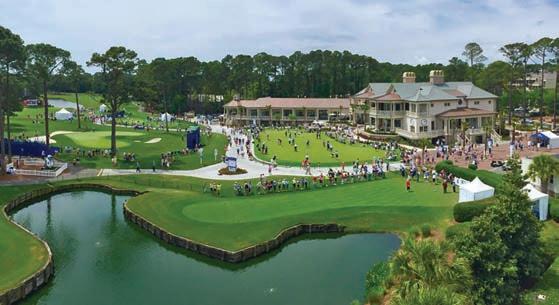
When: Times vary, April 14-20 Where: Harbour Town Golf Links
Details: Don’t miss the Lowcountry's most anticipated event of the year. Visit rbcheritage.com for a full schedule.

Sea Pines Resort offers exciting outdoor activities for all ages. Visit seapines.com/experiences for a complete schedule.
UPCOMING EVENTS:
Gregg Russell spring concerts: 7:30-9 p.m., Mondays, Wednesdays & Fridays, April 2-16, Liberty Oak Tree in Harbour Town
Full Moon Shore Explore: 7:30 p.m., April 9, Sea Pines Beach Club
Harbour Town Bunny Train Express: 10 a.m., April 12, Liberty Oak Tree in Harbour Town
Easter Wagon Rides: 10 a.m., April 17-18, Heritage Farms
Easter Egg Hunt: 11 a.m., April 20, Gregg Russell Harbour Town Playground
Tunnel to Towers National Golf Series – Lowcountry Golf Classic
When: 7:30 a.m., April 6
Where: Country Club of Hilton Head


Details: Play or sponsor a round of golf to benefit the Tunnel to Towers Foundation, which supports veterans, first responders and their families. golflowcountry.t2t.org























Learn a new skill and unleash your creativity with a featured guest workshop at Art League Academy on Cordillo Parkway. For a complete list of classes, visit artleaguehhi.org
UPCOMING CLASSES:
April 24: Photography & Post Processing: Savannah Wildlife Refuge, 9:30 a.m. April 27: Organic Watercolor Painting, 9 a.m.
April 28: Pinot & Palette Knife: Sailboat Dreams, 4:30 p.m.

When: Noon-1 p.m., Tuesdays
Where: Fraum Center for Restorative Health
Details: Attend a free educational event on the latest advancements in restorative medicine with a complimentary lunch. Learn how to help your body heal itself with highly effective, non-invasive solutions to chronic pain. fraum.com

The Coastal Discovery Museum offers a variety of classes for all interests. coastaldiscovery.org
UPCOMING EVENTS:
April 9: Turtle Time: The Life of a Loggerhead Sea Turtle, 2:30 p.m.
April 10: Discovery Night: Busy Bees, 5:30 p.m. April 24: Discovery Night: Indigo Exploration, 5:30 p.m.

When: Noon, April 15
Where: Belfair Clubhouse
Details: Authors Mary Martha Greene and Bren McClain share their love of Southern storytelling and discuss their upcoming books set for release in 2025 and 2026. uscbcenterforthearts.com


Learn a Lowcountry skill or get up close with local wildlife at these events. portroyalsoundfoundation.org
UPCOMING CLASSES:
April 8: Tuesday Talk: Drs. Larry Rowland & Travis Folk on the History of the Port Royal Sound, 5:30-7 p.m.
April 12: Native Plant Sale, 10 a.m.-2 p.m.
April 22: Tuesday Talk: Pat Conroy as Nature Writer with Tim Conroy & Jonathan Haupt, 5:30-6:30 p.m.
April 29: Fly Fishing Film Tour & Salty Dog Boat Cruise, 5-8 p.m.

When: 10 a.m.-noon, April 9
Where: St. Gregory the Great Details: Don’t miss the third Memory Matters 2025 Speaker Series event featuring lawyer Lisa Hostetler Brown. mymemorymatters.org
Top international experts in government, business, military affairs and academia share their insights at 10 a.m. at First Presbyterian Church. wachh.org
UPCOMING EVENTS:
April 11: Kotaro Shiojiri: Political Challenges and Opportunities for the U.S., Japan, and Beyond
May 2: Elizabeth Beavers: How the U.S. Defense Budget Shapes Policy and Our Global Reputation

When: 10:30-11:30 a.m., April 17
Where: The Roasting Room
Details: Libraries for Kids International sponsors a monthly author talk, featuring Tom Poland, author of South Carolina Reflections: A Photographic Journey libraries4kids.org



























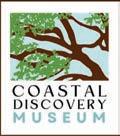







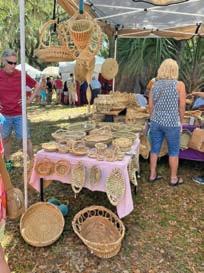
When: April 26-27 Where: Coastal Discovery Museum
Details: Dozens of accomplished artists from across the country will be on-site for this outdoor fine arts and crafts sale. coastaldiscovery.org
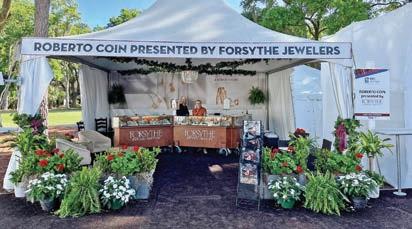
When: April 17-20 Where: Harbour Town Golf Links
Details: Shop Roberto Coin’s newest collections during the RBC Heritage at the Forsythe Jewelers tent, located at the 1&9 Village near the clubhouse. forsythejewelers.biz

When: Now-April 12
Where: Kiwanis Club of Bluffton
Details: Support Kiwanis Club of Bluffton’s many charitable initiatives by bidding in this online auction. blufftonkiwanis.org

Enjoy the local flavors of the Lowcountry at these regular markets:
Bluffton Farmers Market: 10 a.m.-2 p.m., Thursdays, 68 Boundary St.
Hilton Head Island Farmers Market: 9 a.m.-1 p.m., Tuesdays, Coastal Discovery Museum
Port Royal Farmers Market: 9 a.m.-noon, Saturdays, Naval Heritage Park
Forsyth Farmers Market: 9 a.m.-1 p.m., Saturdays, Savannah Beaufort First Friday: 5-8 p.m., first Friday of each month, Downtown Beaufort
Hilton Head Community Market: 9:30 a.m.-12:30 p.m., Saturdays, Shelter Cove Community Park
Habersham Farmers Market: 4-7 p.m., Fridays, Habersham Marketplace, Beaufort Farmers & Makers Market: 10 a.m.-2 p.m., Tuesdays, The Shops at Sea Pines Center




Hop into spring with these familyfriendly events in Old Town Bluffton. shopoldtownbluffton.com
UPCOMING EVENTS
April 1-30: Art Month
April 11-13: Spring Fling Weekend
April 12: Easter Egg Scavenger Hunt


Shop Hop for Memory Matters
When: 1-6 p.m., April 10


Where: Old Town Bluffton Historic District



Details: Local shops will open their doors to support Memory Matters, a nonprofit enhancing the lives of individuals affected by cognitive decline and dementia. mymemorymatters.org















When: 2-4 p.m., April 12
Where: Island Child
Details: Meet the Easter Bunny on the patio at Island Child, and enjoy arts, crafts and treats. shopislandchild.com
Since 1997 Memory Matters has provided memory care to Lowcountry families with compassion and understanding. Today, Memory Matters continues that care but has enhanced its services to educate the community, of all ages, on how to keep the brain healthy, and what can be done to slow the progression of Alzheimer’s disease and related dementia (ADRD).
We offer many programs and events that do just that:
Elder Law & Estate Planning
Lisa Hostetler Brown, Managing Attorney, LawyerLisa April 9 10 am - 12 pm

St. Gregory Drive, Bluffton Free Admission Reserve your seat today online
Adult Day Respite Program & Early Intervention Classes
Hilton Head & Bluffton
Extended Hours and Availability Call for more
















Life is better with music! Enjoy live performances every day of the week at these local venues. Check their websites and social media for up-to-date schedules.







DAILY LIVE MUSIC VENUES
Brother Shucker’s
Coast, Oceanfront Dining
FISH Casual Coastal Seafood
Frosty Frog
Harbourside
Kind of Blue
Luther’s Rare & Well Done
Quarterdeck
Ruby Lee’s



Scott’s Fish Market
Skull Creek Boathouse
The Boardroom

The Crazy Crab Jarvis Creek
The Jazz Corner
The Salty Dog Cafe
The Sandbar Beach Eats
The Studio
Tiki Hut














ADDITIONAL VENUES
A Lowcountry Backyard Restaurant (Mon-Fri)
Agave (Thurs-Sat)




Big Bamboo Cafe (Mon-Sat)
Black Marlin Bayside Grill & Hurricane Bar (Wed-Sat)
Bluffton Oyster Co. Family Seafood House (Fri-Sat)



Spring
Come
“Don’t

Burnt Church Distillery (Thurs-Sat)
Calhoun Street Tavern (Thurs-Sun)
Captain Woody’s Bluffton (Tues)
Carolina Crab Company (Sun)
Celeste (Fri-Sat)
Cheap Seats Tavern 2 (Fri)
Chophouse 119 (Fri)
CocoNutz Sports Bar (Fri)
Fishcamp on Broad Creek (Tues-Sun)
Hilton Head Brewing Co. (Mon, Wed, Fri)
Hilton Head Tavern (Mon-Tues)
Island Winery (Fri)
Lincoln & South Brewing Company (Wed-Sun)
Local Pie (Fri-Sun)
Luther’s Rare & Well Done (Thurs-Sat)
Nectar Farm Kitchen in Old Town Bluffton (Fri-Sun)
Pomodori Too! (Thurs-Sat)
Red Fish (Tues-Sat)
Reilley’s Grill & Bar (Wed-Fri)
Rollers Wine & Spirits (Tues, Thurs)
San Miguel’s (Thurs-Sat)
Santa Fe Cafe (Tues-Sat)
Shellring Ale Works (Fri-Sun)
Sprout Momma (Wed, Fri)
Sundown Saloon (Sat)
The Rooftop Bar at Poseidon (Wed, Thurs, Sat)
The Westin Hilton Head Island Resort & Spa (every third Fri)
Tio’s Latin American Kitchen Bluffton (Fri, Sun)
Top Dog Tavern & Pizzeria (Wed)
UnCorked Wine, Bar, Food, and Music (Tues-Sat)
Zunzibar (Mon-Thurs)






Don’t miss the final performances of the Hilton Head Symphony Orchestra and Hilton Head International Piano Competition season. hhso.org
UPCOMING EVENTS:
April 6 & 7: Mendelssohn and Vivaldi, 4 p.m. (April 6), 7:30 p.m. (April 7), First Presbyterian Church
April 11: Bravo! Piano Recital Series Finale, 7:30 p.m., SoundWaves
April 27 & 28: La Mer and Enrique Graf, 4 p.m. (April 27), 7:30 p.m. (April 28), First Presbyterian Church
When: 7:30 p.m., April 12
Where: USCB Center for the Arts
Details: A tribute to one of the most beloved pop icons of all time, Olivia Newton-John. uscbcenterforthearts.com


When: 6-9 p.m., Thursdays, now-May 15
Where: Shelter Cove Harbour & Marina
Details: Enjoy an outdoor evening with live music, great food, and drinks at Neptune Statue. sheltercovehiltonhead.com

When: 7 p.m., April 26 Where: Operation Patriots FOB
Details: Country music star Clay Walker performs with special guests Darryl Worley and U.S. Navy Veteran Jared Ashley. opfob.charityproud.org

When: 3 p.m., April 27
Where: USCB Center for the Arts
Details: A night of uplifting music featuring Endless Highway, Riley Harrison Clark and The Lowry Vocal Band. uscbcenterforthearts.com




DIRECTED BY TARA
JEANNE VALLEE






Waitress: The Musical is a Tony-nominated Broadway phenomenon. The story centers around Jenna Hunterson, a waitress and expert pie-maker stuck in a small town and a loveless marriage.
When a baking contest o ers her a chance at escape, Jenna must weigh her commitments against a rare shot at freedom. Her friends all o er her conflicting recipes for happiness, but Jenna must ultimately decide for herself. Featuring music and lyrics by Grammy Award-winner Sara Bareilles, Waitress celebrates dreams, the family we choose, and the beauty of a well-baked pie.
FEATURING SONGS BY 7-TIME GRAMMY NOMINEE SARA BAREILLES “SHE USED TO BE MINE” “WHAT’S INSIDE” “I DIDN’T PLAN IT” AMONG OTHERS

This heartwarming story of love, loss, and self-discovery, set to Bareilles’s unforgettable score, o ers a sweet escape for the heart and soul.


“Comfort food for the musical theater soul!”
– BROADWAYWORLD








Now-April 13: Savannah Music Festival
April 8: Grounded Wine Walk with Josh Phelps at Turbine Market & Café
April 11: Dancing with Savannah Stars
April 11-12: Billy Strings at Enmarket Arena
April 13 & 26: One Love Animal Rescue Adoption Event at Savannah Petco
April 17: Leonid & Friends at Johnny Mercer Theatre
April 19: Poker Run for Renegade! Paws 4 A Cause at Savannah Harley Davidson
April 20: Easter Brunch at Plant Riverside District
April 21-27: 2025 Savannah Challenger at The Landings Club


















April 25: Pretty Woman: The Musical at Johnny Mercer Theatre
April 26: Bonnie Raitt at Johnny Mercer Theatre
April 30 & May 1: Wine, Women & Shoes at Kehoe Iron Works Building











Luke Bryan








May 6: Alice Cooper at Johnny Mercer Theatre
May 10: Isley Brothers at Enmarket Arena
May 29-30: Megan Moroney at Enmarket Arena
June 7: Vince Gill at Johnny Mercer Theatre
June 12: Luke Bryan at Enmarket Arena
August 1: Brad Paisley at Enmarket Arena

Hilton Head Humane’s Dog Walk on the Beach
May 1: Spring Concert at HHCA Performing Arts Center
May 1: An Evening with Jesse Blanco at Pat Conroy Literary Center
May 1-5: Mayfest at Holy Tequila
May 2: Taste of Beaufort 2025
May 2: Opening night of The 39 Steps at Coligny Theatre
May 2: SPMA: Suzuki Recital at Hilton Head Preparatory
May 2: Pearls to Pluff Mud at Port Royal Sound Foundation
May 2: Movie Nights in Bluffton’s Parks: Moana 2 at Martin Family Park
May 3: Hilton Head Humane’s Dog Walk on the Beach at Coligny Beach
May 3: Caring Hearts 3rd Annual Car, Truck, Jeep & Bike Show at Ridgeland Elementary
May 3: Beaufort Water Festival 5K/10K Run at Live Oak Park in Port Royal
May 3: 2025 Run for the Roses Jubilee at Hilton Head Preparatory
May 3: ISCA Scholarship Soirée at the Community Center at HHICC
May 3: Savannah Philharmonic Season Finale at The Lucas Theatre for the Arts
May 4: PEDAL Hilton Head Island at Lowcountry Celebration Park
You may be able to post your event for free in our Happenings section. Head to locallifesc.com, click “Contact Us,” and include a title, date, time, location, description, a link to the webpage and photos if possible.
















FIRST TEE - THE LOWCOUNTRY Experience golf on the Island with the only par-3 course — perfect for instruction, children and senior play. Driving range and putting green are open to everyone. $10 donation for adults, $5 donation for kids — all you can play. LOCAL Life Insider Tip: You don't need to bring clubs — the pros at First Tee will lend you a set at no charge.




151 Gumtree Road, HHI • firstteelowcountry.org/about/facility/

























THAI SMILE CUISINE is Hilton Head’s go-to spot for authentic Thai flavors, featuring classics like Pad Thai, drunken noodles, and massaman curry. Owned by Chef Kanlaya and her husband Sawat, their dishes bring the essence of Thailand to life with fresh herbs and traditional recipes passed down through generations. LOCAL Life Insider Tip: Inspired by family recipes, bringing Thailand’s flavors from kitchen to table.
11 Palmetto Bay Road, HHI • 843-715-3492 • ThaiSmileCuisine.com









SPARTINA 449 A Lowcountry Original. Spartina 449 is where you can find beautiful accessories, handbags, clothing, jewelery and gifts that are exquisitely designed in the Lowcountry. Visit our website to find your style or better yet, stop in to our Hilton Head or Bluffton shops. LOCAL Life Insider Tip: Did you know that the 449 in our name is the address of the cozy Daufuskie cottage where Spartina 449 was born?
Flagship Store: 32 Calhoun Street, Bluffton • 843-815-9000 • spartina449.com
Whether you’re a foodie looking to explore new culinary delights or a family seeking fun and engaging activities, these carefully curated selections of restaurants and activities have something for everyone.



THE SPICE & TEA EXCHANGE OF HILTON HEAD ISLAND We pride ourselves on the quality of our products and premium ingredients. Our spices are freshly mixed in small batches, underscoring the emphasis we place on freshness. Our tea leaves are carefully prepared to maintain their flavor and nutrients, ensuring each cup is a testament to excellence. LOCAL Life Insider Tip: The Spice and Tea Exchange's Tea Bar is now open! Coligny Plaza, #A7, HHI • 843-715-3770 • spiceandtea.com / hiltonhead
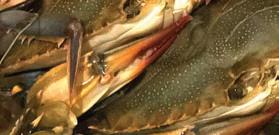








TOOMER’S BLUFFTON OYSTER COMPANY The Toomer family has harvested Lowcountry waters since 1913, operating South Carolina’s last hand-shucked oyster house for over 25 years. Located on the May River, this historic landmark offers the freshest local seafood and continues the tradition, serving high-quality, locally sourced seafood. LOCAL Life Insider Tip: It’s softshell crab season — get them fresh while they last! 63 Wharf Street, Bluffton, SC • 843-757-4010 • blufftonoyster.com
NUNZIO RESTAURANT + BAR Enjoy exceptional Italian food, a lively bar atmosphere, and relaxed hospitality with Italian charm. Nunzio Restaurant + Bar is the place you’re looking for. Nunzio’s classic & contemporary Italian dishes perfectly portray the harmony between South Carolina and Italy. Nunzio’s menu delivers a bouquet of regional flavors. LOCAL Life Insider Tip: Check the website for a list of dinners and tastings. 18 New Orleans Rd, Hilton Head • 843-715-2172 • nunziohhi.com

































As the golden hues of sunset melt into the horizon, the tranquil marsh along Calibogue Sound bids a breathtaking farewell to another Lowcountry day. Framed by the iconic Harbour Town Lighthouse and the Quarterdeck restaurant — familiar landmarks during the RBC Heritage — this serene vista embodies the untamed beauty of the marshlands. Photographer Tony Pease, a Berkeley Hall resident, captured this stunning moment on his way out to Calibogue Sound, where the evening sky promised one last masterpiece before nightfall.
HIT US WITH YOUR BEST SHOT Have you taken a great local photo? Send your high-res image to info@wearelocallife.com or upload it at locallifesc.com/partingshot.









